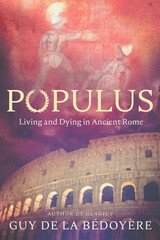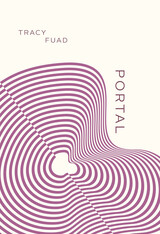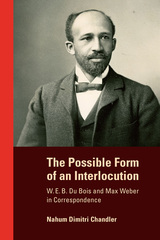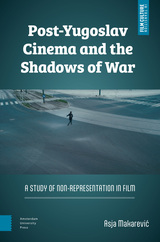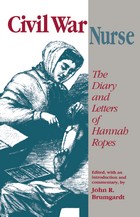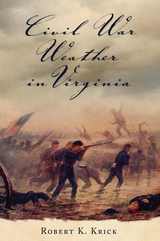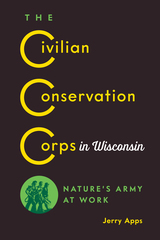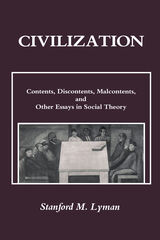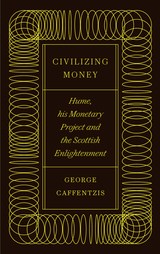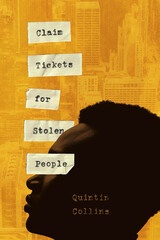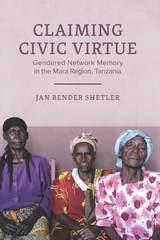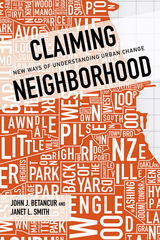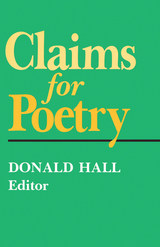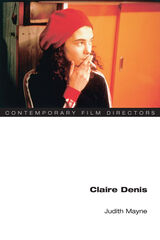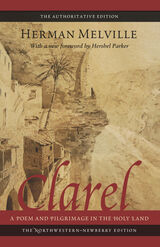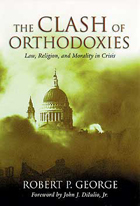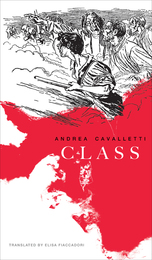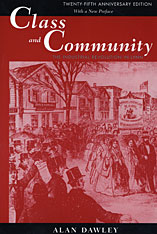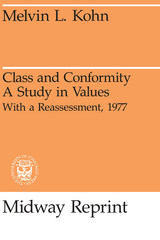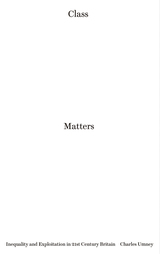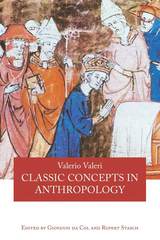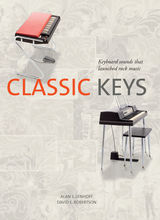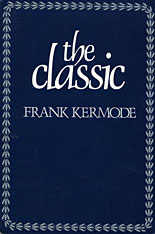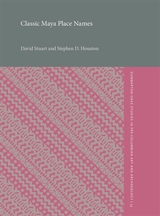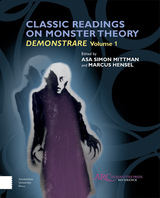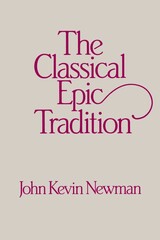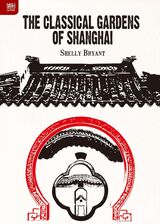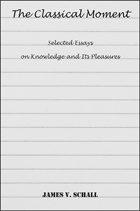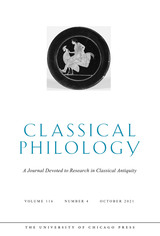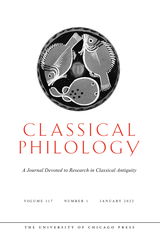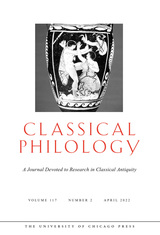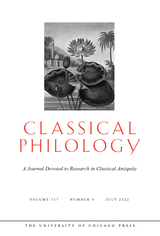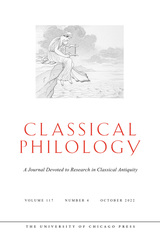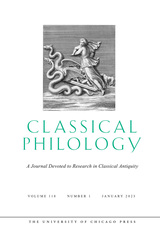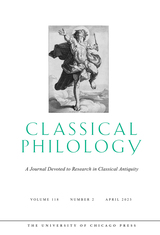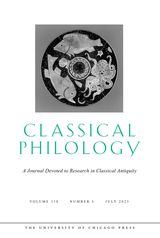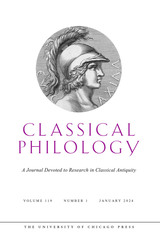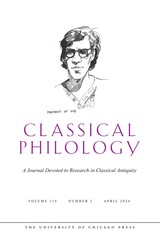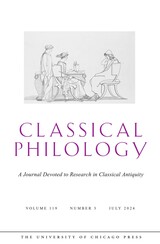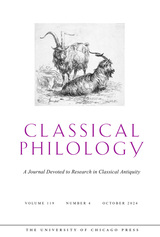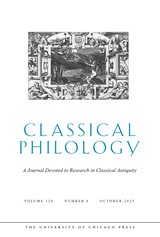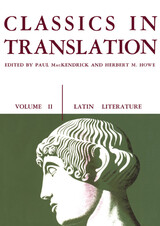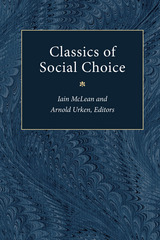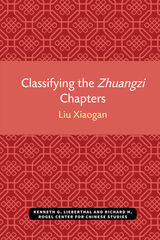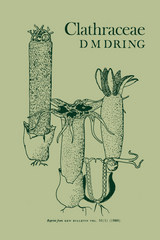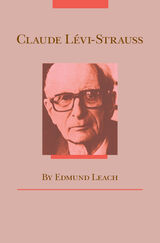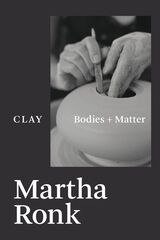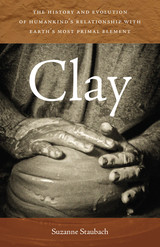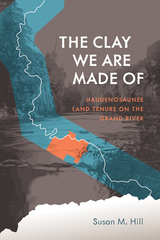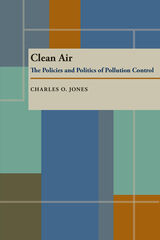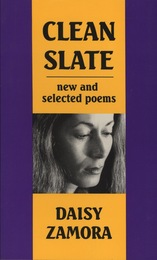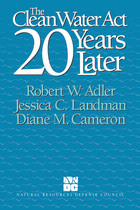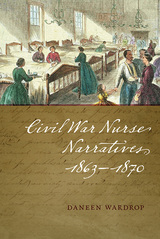 Civil War Nurse Narratives, 1863-1870
Daneen Wardrop
University of Iowa Press, 2015 Civil War Nurse Narratives, 1863–1870, examines the first wave of autobiographical narratives written by northern female nurses and published during the war and shortly thereafter, ranging from the well-known Louisa May Alcott to lesser-known figures such as Elvira Powers and Julia Wheelock. From the hospitals of Washington, DC, and Philadelphia, to the field at Gettysburg in the aftermath of the battle, to the camps bordering front lines during active combat, these nurse narrators reported on what they saw and experienced for an American audience hungry for tales of individual experience in the war.
As a subgenre of war literature, the Civil War nurse narrative offered realistic reportage of medical experiences and declined to engage with military strategies or Congressional politics. Instead, nurse narrators chronicled the details of attending wounded soldiers in the hospital, where a kind of microcosm of US democracy-in-progress emerged. As the war reshaped the social and political ideologies of the republic, nurses labored in a workplace that reflected cultural changes in ideas about gender, race, and class. Through interactions with surgeons and other officials they tested women’s rights convictions, and through interactions with formerly enslaved workers they wrestled with the need to live up to their own often abolitionist convictions and support social equality.
By putting these accounts in conversation with each other, Civil War Nurse Narratives productively explores a developing genre of war literature that has rarely been given its due and that offers refreshing insights into women’s contributions to the war effort. Taken together, these stories offer an impressive and important addition to the literary history of the Civil War.
Civil War Nurse: The Diary and Letters Hannah Ropes
John R. Brumgardt
University of Tennessee Press, 1993 The chief nurse of the Union Hospital in Washington, D.C., describes life and stress in the hospital and comments on notable persons of power. Her heretofore unpublished diary and letters comprise a fresh, hightly significan document concerning the medical history of the Civil War and the contributions of women nurses in the Northern military hospitals. This book is edited, with Introduction and Commentary, by John R. Brumgardt.
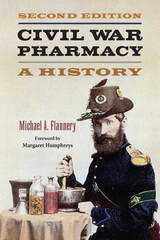 Civil War Pharmacy: A History
Michael A. Flannery, with a foreword by Margaret Humphreys
Southern Illinois University Press, 2017 When the Civil War began, the U.S. pharmaceutical industry was concentrated almost exclusively in Philadelphia and was dominated by just a few major firms; when the war ended, it was poised to expand nationwide. Civil War Pharmacy is the first book to delineate how the growing field of pharmacy gained respect and traction in, and even distinction from, the medical world because of the large-scale manufacture and dispersion of drug supplies and therapeutics during the Civil War. In this second edition, Flannery captures the full societal involvement in drug provision, on both the Union and Confederate sides, and places it within the context of what was then assumed about health and healing. He examines the roles of physicians, hospital stewards, and nurses—both male and female—and analyzes how the blockade of Southern ports meant fewer pharmaceutical supplies were available for Confederate soldiers, resulting in reduced Confederate troop strength. Flannery provides a thorough overview of the professional, economic, and military factors comprising pharmacy from 1861 to 1865 and includes the long-term consequences of the war for the pharmaceutical profession.
Winner (first edition), Archivists and Librarians in the History of the Health Sciences, Best Book Award
Civil War Weather in Virginia
Robert K. Krick
University of Alabama Press, 2007 This work fills a tremendous gap in our available knowledge in a fundamental area of Civil War studies, that of basic quotidian information on the weather in the theater of operations in the vicinity of Washington, DC, and Richmond, Virginia. Krick adds to the daily records kept by amateur meteorologists in these two locations. Anecdotal descriptions of weather found in contemporary soldiers’ dairies and correspondence combines these scattered records into a chronology of weather information that also includes daybreak and sunset times for each day. The information in Civil War Weather in Virginia is indispensable for students of the Civil War in the vital northern Virginia/Maryland theater of operations, and of the effects of weather on military history in general.
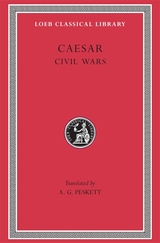 Civil Wars
Caesar
Harvard University Press Caesar (C. Iulius, 10244 BCE), statesman and soldier, defied the dictator Sulla; served in the Mithridatic wars and in Spain; pushed his way in Roman politics as a 'democrat' against the senatorial government; was the real leader of the coalition with Pompey and Crassus; conquered all Gaul for Rome; attacked Britain twice; was forced into civil war; became master of the Roman world; and achieved wide-reaching reforms until his murder. We have his books of Commentarii (notes): eight on his wars in Gaul, 5852 BC, including the two expeditions to Britain 5554, and three on the civil war of 4948. They are records of his own campaigns (with occasional digressions) in vigorous, direct, clear, unemotional style and in the third person, the account of the civil war being somewhat more impassioned.
The Loeb Classical Library edition of Caesar is in three volumes. Volume I is his Gallic War. The Alexandrian War, the African War and the Spanish War, commonly ascribed to Caesar by our manuscripts but of uncertain authorship, are collected in Volume III.
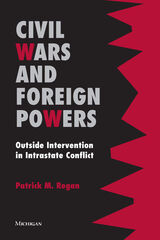 Civil Wars and Foreign Powers: Outside Intervention in Intrastate Conflict
Patrick M. Regan
University of Michigan Press, 2002 We have seen recent massive intervention by the United States and its allies in Europe in internal conflict in Bosnia and Kosovo. In Outside Intervention in Intrastate Conflict, Patrick Regan systematically answers the question about the conditions under which third parties intervene in civil conflicts to stop the fighting. It uses data on all civil conflicts since 1945 to identify those conflicts that are amenable to outside interventions and the types of interventions that are more likely to be successful.
Outside Intervention in Intrastate Conflict is a book about how governments can help facilitate the end of civil conflicts. In a time when internal conflicts appear to be increasing in number, and increasingly destabilizing, governments need to know what policies work and when. Interventions are generally of two sorts--unilateral, or when one state takes action, and multilateral, such as UN or NATO action. This book examines the conditions under which each form of intervention is most likely and most effective. The analysis suggests that three conditions associated with multi-lateral interventions will increase the likelihood of success: mutual consent of the parties involved; impartiality on the part of the intervenors; and the existence of a coherent intervention strategy. The questions are posed from the perspective of the decision maker and the answers offered are framed in a language familiar to the decision-making community. The book mixes descriptive case material with systematic statistical analysis of a unique data set of all civil conflicts since World War II, providing contemporary examples to illustrate overall trends in the data. Beyond the policy implications this work is also rich in theoretical development about issues of conflict and conflict management.
This book will appeal to students of international conflict, civil war, ethnic conflict, and those who are concerned with developing policy in the post-cold war world to deal with intrastate conflict.
Patrick M. Regan is Assistant Professor of Political Science, Binghamton University.
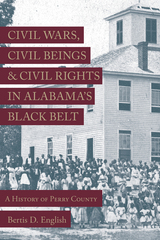 Civil Wars, Civil Beings, and Civil Rights in Alabama's Black Belt: A History of Perry County
Bertis D. English, Foreword by Wayne Flynt
University of Alabama Press, 2020 Reconstruction politics and race relations between freed blacks and the white establishment in Perry County, Alabama
In his fascinating, in-depth study, Bertis D. English analyzes why Perry County, situated in the heart of a violence-prone subregion of Alabama, enjoyed more peaceful race relations and less bloodshed than several neighboring counties. Choosing an atypical locality as central to his study, English raises questions about factors affecting ethnic disturbances in the Black Belt and elsewhere in Alabama. He also uses Perry County, which he deems an anomalous county, to caution against the tendency of some scholars to make sweeping generalizations about entire regions and subregions.
English contends Perry County was a relatively tranquil place with a set of extremely influential African American businessmen, clergy, politicians, and other leaders during Reconstruction. Together with egalitarian or opportunistic white citizens, they headed a successful campaign for black agency and biracial cooperation that few counties in Alabama matched. English also illustrates how a significant number of educational institutions, a high density of African American residents, and an unusually organized and informed African American population were essential factors in forming Perry County’s character. He likewise traces the development of religion in Perry, the nineteenth-century Baptist capital of Alabama, and the emergence of civil rights in Perry, an underemphasized center of activism during the twentieth century.
This well-researched and comprehensive volume illuminates Perry County’s history from the various perspectives of its black, interracial, and white inhabitants, amplifying their own voices in a novel way. The narrative includes rich personal details about ordinary and affluent people, both free and unfree, creating a distinctive resource that will be useful to scholars as well as a reference that will serve the needs of students and general readers.
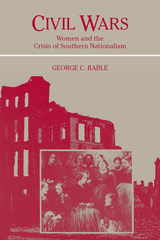 Civil Wars: Women and the Crisis of Southern Nationalism
George C. Rable
University of Illinois Press, 1989 Born into a male-dominated society, southern women often chose to support patriarchy and their own celebrated roles as mothers, wives, and guardians of the home and humane values. George C. Rable uncovers the details of how women fit into the South's complex social order and how Southern social assumptions shaped their attitudes toward themselves, their families, and society as a whole. He reveals a bafflingly intricate social order and the ways the South's surprisingly diverse women shaped their own lives and minds despite strict boundaries. Paying particular attention to women during the Civil War, Roble illuminates their thoughts on the conflict and the threats and challenges they faced and looks at their place in both the economy and politics of the Confederacy. He also ranges back to the antebellum era and forward to postwar South, when women quickly acquiesced to the old patriarchal system but nonetheless lived lives changed forever by the war.
Winner of the 1989 Jefferson Davis Award of the Museum of the Confederacy, 1989. Winner of the Julia Cherry Spruill Prize of the Southern Association of Women Historians, 1991.
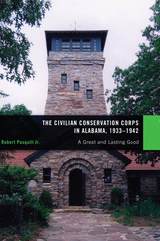 The Civilian Conservation Corps in Alabama, 1933–1942: A Great and Lasting Good
Robert Pasquill Jr.
University of Alabama Press, 2008 The Civilian Conservation Corps was one of the better known and most successful of the New Deal programs following the Great Depression. The causes of the Great Depression have been addressed and debated from a variety of perspectives through the years. However, the effects explained in terms of human suffering leave little room for debate. By March of 1933, there were more than 13.6 million unemployed, and more than 200,000 of them were wandering the country looking for work. Homes and families were fractured. President Roosevelt proposed to put 500,000 unemployed men from cities and towns into the woods to plant trees, reduce fire hazards, clear streams, check erosion, and improve the park system all across America. With unprecedented speed, national legislation was written, passed, and funded, creating a myriad of programs—referred to as alphabet projects—in hopes of generating useful work and necessary paychecks and creating a “great and lasting good” for the American public. CCC projects in Alabama would initially employ 20,000 men with projects in all 13 state forests and seven state parks. This volume traces in great detail the work projects, the camp living conditions, the daily lives of the enrollees, the administration and management challenges, and the lasting effects of this Neal Deal program in Alabama. Through archives, government documents, and more than 125 interviews with former enrollees of the CCC, Pasquill has recounted the CCC program in Alabama and brought this humanitarian program to life in the Alabama countryside. It was a truly monumental win-win situation emerging from a national and international economic tragedy.
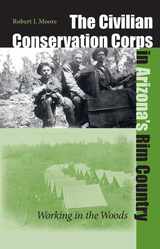 The Civilian Conservation Corps In Arizona's Rim Country: Working In The Woods
Robert J. Moore
University of Nevada Press, 2006 Part of the massive relief effort of Roosevelt’s New Deal, the CCC was created in 1933 to give young men an opportunity to work and make money to help families devastated by the Great Depression, and to participate in forest and conservation projects across the country. In Arizona, thousands of young men, many of them from the industrial Northeast, served in the state’s CCC forest camps. Arizona’s Mogollon Rim is a spectacular expanse of cliffs that slices through half the state, stretching from Sedona eastward to New Mexico. Along with the White Mountains, it includes the largest contiguous forest of ponderosa pine in America. Remote and little-visited in the 1930s, the Rim Country offered copious outlets for the CCC men’s energies: building roads, public campsites, hiking trails, fire lookout towers, and administration buildings; fighting fires; controlling erosion; eliminating vermin; and restoring damaged soils. The CCC enrollees were also given an opportunity to continue interrupted educations, learn useful skills and self-discipline, participate in sports and other leisure activities, and meet local residents. Author Robert J. Moore interviewed a number of CCC veterans who served in the Rim Country, and their stories are part of this book. So too are photographs—many of them from veterans’ personal collections—of Rim Country camps and workers, and such ephemera as camp newspapers. This is an engrossing account of several thousand young men who came to Arizona to escape the misery of the Great Depression, whose work in the woods changed the state, and who in the process were themselves changed. Here is the human face of Arizona’s CCC, the men’s experiences, their work, and their lasting impact on the forests of the Rim Country.
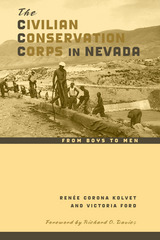 The Civilian Conservation Corps in Nevada: From Boys to Men
Renée Corona Kolvet
University of Nevada Press, 2015 The Great Depression of the 1930s had a devastating impact on sparsely populated Nevada and its two major industries, mining and agriculture. Luckily, thanks to Nevada’s powerful Senate delegation, Roosevelt’s New Deal funding flowed abundantly into the state. Among the programs thus supported was the Civilian Conservation Corps, a federal program intended to provide jobs for unemployed young men and a pool of labor for essential public lands rehabilitation projects. In all, nearly thirty-one thousand men were employed in fifty-nine CCC camps across Nevada, most of them from outside the state. These “boys,” as they were called, went to work improving the state’s forests, parks, wildlife habitats, roads, fences, irrigation systems, flood-control systems, and rangelands, while learning valuable skills on the job. Rural communities near CCC camps reaped additional benefits when local men were hired as foremen and when the camps purchased supplies from local merchants.
The Civilian Conservation Corps in Nevada is the first comprehensive history of the Nevada CCC, a program designed to help the nation get back on its feet, and of the “boys” who did so much to restore Nevada’s lands and resources. The book is based on extensive research in private manuscript collections, unpublished memoirs, CCC inspectors’ reports, and other records. The book also includes period photographs depicting the Nevada CCC and its activities.
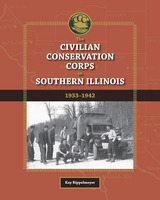 The Civilian Conservation Corps in Southern Illinois, 1933-1942
Kay Rippelmeyer
Southern Illinois University Press, 2015 Drawing on more than thirty years of meticulous research, Kay Rippelmeyer details the Depression-era history of the simultaneous creation of the Civilian Conservation Corps (CCC) and the Shawnee National Forest in southern Illinois. Through the stories of the men who worked in CCC camps devoted to soil and forest conservation projects, she offers a fascinating look into an era of utmost significance to the identity, citizens, wildlife, and natural landscape of the region. Rippelmeyer outlines the geologic and geographic history of southern Illinois, from Native American uses of the land to the timber industry’s decimation of the forest by the 1920s. Detailing both the economic hardships and agricultural land abuse plaguing the region during the Depression, she reveals how the creation of the CCC under Franklin Delano Roosevelt coincided with the regional campaign for a national forest and how locals first became aware of and involved with the program. Rippelmeyer mined CCC camp records from the National Archives, newspaper accounts and other correspondence and conducted dozens of oral interviews with workers and their families to re-create life in the camps. An extensive camp compendium augments the volume, featuring numerous photographs, camp locations and dates of operation, work history, and company rosters. Satisfying public curiosity and the need for factual information about the camps in southern Illinois, this is an essential contribution to regional history and a window to the national impact of the CCC.
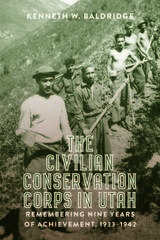 The Civilian Conservation Corps in Utah: Remembering Nine Years of Achievement, 1933-1942
Kenneth W. Baldridge
University of Utah Press, 2018
Copublished with the Utah State Historical Society. Affiliated with the Utah Division of State History, Utah Department of Heritage & Arts
“There was a certain magic about sending young men into the woods. It was not so much man against nature as it was man in league with nature against the economic troubles that were then stalking the land.”—from the book
In 1932, unemployment in Utah was about 34 percent. Nearly every state west of the Mississippi River was struggling not only with unemployment but also with drought, erosion, and overgrazing. To solve these serious difficulties, President Franklin D. Roosevelt launched what would become arguably the most popular of his New Deal programs—the Civilian Conservation Corps (CCC). From 1933 to 1942, the CCC employed three million young men on land-improvement projects that are still used today.
In this book, Kenneth Baldridge chronicles the work of the 10,000 men who served at Utah’s 116 CCC camps. With facts and anecdotes drawn from camp newspapers, government files, interviews, letters written by enrollees, and other sources, he situates the CCC within the political climate and details not only the projects but also the day-to-day aspects of camp life. For thirty dollars a month—of which twenty-five was sent home to their folks—these young recruits planted trees; built roads, bridges, dams, and trails; fought fires; battled pests and noxious weeds; and erected cabins, campgrounds, amphitheaters, and reservoirs, and more.
Today the CCC is credited with creating greater public awareness and appreciation of the outdoors. It has also served as a model for the Student Conservation Corps and other youth programs. This volume documents the public good created by the CCC, provides an extensive bibliography, and is illustrated with numerous historic and modern photos.
The Civilian Conservation Corps in Wisconsin: Nature’s Army at Work
Jerry Apps
Wisconsin Historical Society Press, 2019 Between 1933 and 1942, the Civilian Conservation Corps, a popular New Deal relief program, was at work across America. During the Great Depression, young men lived in rustic CCC camps planting trees, cutting trails, and reversing the effects of soil erosion. In his latest book, acclaimed environmental writer Jerry Apps presents the first comprehensive history of the CCC in Wisconsin. Apps guides readers around the state, from the Northwoods to the Driftless Area, creating a map of where and how more than 125 CCC camps left indelible marks on the landscape. Captured in rich detail as well are the voices of the CCC boys who by preserving Wisconsin’s natural beauty not only discovered purpose in their labor, but founded an enduring legacy of environmental stewardship.
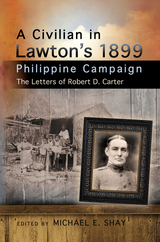 A Civilian in Lawton's 1899 Philippine Campaign: The Letters of Robert D. Carter
Edited by Michael E. Shay
University of Missouri Press, 2013 In the midst of the Philippine-American War, twenty-two-year-old Robert Dexter Carter served in Manila as a civilian quartermaster clerk. Through his letters to his family, he provided a vivid picture of army life in Manila—the sights, the smells, and his responses to the native culture. In addition to his letters, his diary and several related articles present a firsthand account of the historic voyage of the United States Army Transport Grant through the Suez Canal to Manila in early 1899. Carter’s writings not only tell of his sometimes harrowing experiences, but also reveal the aspirations and fears of a young man not quite sure of his next steps on life’s journey. Carter’s father, Robert Goldthwaite Carter, was a war hero and a longtime friend of Maj. Gen. Henry W. Lawton. Carter obtained his position through Lawton’s influence, and his respect for Lawton is clear throughout his writings. A frequent guest in the Lawton home, the young clerk was introduced to many notable figures both military and civilian. Carter’s letters, particularly to his father, are full of news and gossip related to his commander. In other letters, he reveals the kindness and generosity of Mrs. Lawton, who took time to look out for Carter while he was in the hospital and often loaned him books. This well-researched and expertly edited work casts light on the role of support troops in war, a subject too often minimized or ignored. Shay begins each chapter with an introduction that establishes the setting, the context of events, and the disposition of Carter and his compatriots and provides notes and commentary to place the letters in context. By choosing not to edit the offensive expletives of a sometimes arrogant and racist young man, Shay presents a fully nuanced portrait of a young American exploring the larger world in a time of turmoil. Enhanced by photographs from collections at the Library of Congress and the Military History Institute, as well as many of Carter’s own whimsical drawings, the book will appeal to armchair historians and scholars alike.
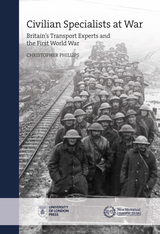 Civilian Specialists at War: Britain's transport experts and the First World War
Christopher Phillips
University of London Press, 2020 World War I was the first great general conflict to be fought between highly industrial societies able to manufacture and transport immense quantities of goods over land and sea. Yet the armies of the war were too vast in scale, their movements too complex, and the infrastructure upon which they depended too specialized to be operated by professional soldiers alone.
In Civilian Specialists at War, Christopher Phillips examines the relationship between industrial society and industrial warfare through the lens of Britain’s transport experts. Phillips analyzes the multiple connections between the army, the government, and the senior executives of some of prewar Britain’s largest industrial enterprises, revealing that civilian transport experts were a key component of Britain’s strategies in World War I. This book also details the application of recognizably civilian technologies and methods to the prosecution of war, and documents how transport experts were constrained by the political and military requirements of coalition warfare.
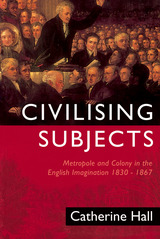 Civilising Subjects: Metropole and Colony in the English Imagination 1830-1867
Catherine Hall
University of Chicago Press, 2002 How did the English get to be English? In Civilising Subjects, Catherine Hall argues that the idea of empire was at the heart of mid-nineteenth-century British self-imagining, with peoples such as the "Aborigines" in Australia and the "negroes" in Jamaica serving as markers of difference separating "civilised" English from "savage" others.
Hall uses the stories of two groups of Englishmen and -women to explore British self-constructions both in the colonies and at home. In Jamaica, a group of Baptist missionaries hoped to make African-Jamaicans into people like themselves, only to be disappointed when the project proved neither simple nor congenial to the black men and women for whom they hoped to fashion new selves. And in Birmingham, abolitionist enthusiasm dominated the city in the 1830s, but by the 1860s, a harsher racial vocabulary reflected a new perception of the nonwhite subjects of empire as different kinds of men from the "manly citizens" of Birmingham.
This absorbing study of the "racing" of Englishness will be invaluable for imperial and cultural historians.
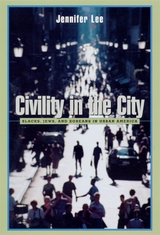 Civility in the City: Blacks, Jews, and Koreans in Urban America
Jennifer Lee
Harvard University Press, 2002 Hollywood and the news media have repeatedly depicted the inner-city retail store as a scene of racial conflict and acrimony. Civility in the City uncovers a quite different story. Jennifer Lee examines the relationships between African American, Jewish, and Korean merchants and their black customers in New York and Philadelphia, and shows that, in fact, social order, routine, and civility are the norm.
Lee illustrates how everyday civility is negotiated and maintained in countless daily interactions between merchants and customers. While merchant-customer relations are in no way uniform, most are civil because merchants actively work to manage tensions and smooth out incidents before they escalate into racially charged anger. Civility prevails because merchants make investments to maintain the day-to-day routine, recognizing that the failure to do so can have dramatic consequences.
How then do minor clashes between merchants and customers occasionally erupt into the large-scale conflicts we see on television? Lee shows how inner-city poverty and extreme inequality, coupled with the visible presence of socially mobile newcomers, can provide fertile ground for such conflicts. The wonder is that they occur so rarely, a fact that the media ignore.
 Civilization and Enlightenment: The Early Thought of Fukuzawa Yukichi
Albert M. Craig
Harvard University Press, 2009 The idea that society progresses through stages of development, from savagery to civilization, arose in eighteenth-century Europe. Albert Craig traces how Fukuzawa Yukichi, deeply influenced by the Scottish Enlightenment, “translated” the idea for Japanese society, both enriching and challenging the concept.
Fukuzawa, an official in the Tokugawa government, saw his career collapse when the shogunate ended in 1867. Reinventing himself as a thinker and writer, he made his life work the translation and interpretation of the Western idea of the stages of civilization. He interpreted key Scottish intellectuals— Adam Smith, Adam Ferguson, William Robertson, John Millar; relied on American geographies to help explain how societies progress; and focused on invention as a key to civilization.
By defining the role of “less developed” nations in the world order, Fukuzawa added a new dimension to the stage theory. But by the end of the 1880s, he had come to dismiss the philosophy of natural rights as “the fatuous idealism of Christian ministers.” Though civilization—as represented by Britain—was still his goal for Japan, he no longer saw the West as a uniformly beneficial moral force.
This engaging history offers an illuminating look at an important figure and the world of ideas in nineteenth-century Japan.
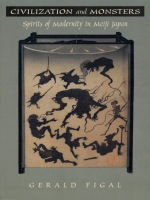 Civilization and Monsters: Spirits of Modernity in Meiji Japan
Gerald Figal
Duke University Press, 2000 Monsters, ghosts, the supernatural, the fantastic, the mysterious. These are not usually considered the “stuff” of modernism. More often they are regarded as inconsequential to the study of the modern, or, at best, seen as representative of traditional beliefs that are overcome and left behind in the transformation toward modernity. In Civilization and Monsters Gerald Figal asserts that discourse on the fantastic was at the heart of the historical configuration of Japanese modernity—that the representation of the magical and mysterious played an integral part in the production of modernity beginning in Meiji Japan (1868–1912).
After discussing the role of the fantastic in everyday Japan at the eve of the Meiji period, Figal draws new connections between folklorists, writers, educators, state ideologues, and policymakers, all of whom crossed paths in a contest over supernatural terrain. He shows the ways in which a determined Meiji state was engaged in a battle to suppress, denigrate, manipulate, or reincorporate folk belief as part of an effort toward the consolidation of a modern national culture. Modern medicine and education, functioning as a means for the state to exercise its power, redefined folk practices as a source of evil. Diverse local spirits were supplanted by a new Japanese Spirit, embodied by the newly constituted emperor, the supernatural source of the nation’s strength. The monsters of folklore were identified, catalogued, and characterized according to a new regime of modern reason. But whether engaged to support state power and forge a national citizenry or to critique the arbitrary nature of that power, the fantastic, as Figal maintains, is the constant condition of Japanese modernity in all its contradictions. Furthermore, he argues, modernity in general is born of fantasy in ways that have scarcely been recognized.
Bringing unexplored and provocative new ideas to the Japan specialist, Civilization and Monsters will also appeal to readers concerned with issues of modernity in general.
 Civilization And Violence: Regimes of Representation in Nineteenth-Century Colombia
Cristina Rojas
University of Minnesota Press, 2001 Civilization and violence are not necessarily the antagonists we presume-withcivilization taming violence, and violence unmaking civilization. Focusing on postindependence Colombia, this book brings to light the ways in which violenceand civilization actually intertwined and reinforced each other in the development of postcolonial capitalism. The narratives of civilization and violence, Cristina Rojas contends, play key roles in the formation of racial, gender, and class identities; they also provide pivotal logic to both the formation of the nation and the processes of capitalist development. During the Liberal era of Colombian history (1849-1878), a dominant creole elite enforced a "will to civilization" that sought to create a new world in its own image. Rojas explores different arenas in which this pursuit meant the violent imposition of white, liberal, laissez-faire capitalism. Drawing on a wide range of social theory, Rojas develops a new way of understanding the relationship between violence and the formation of national identity-not just in the history of Colombia, but also in the broader narratives of civilization.
Civilization: Contents, Discontents, Malcontents, and Other Essays in Social Theory
Stanford Lyman
University of Arkansas Press, 1990 In order to bring sociology to the recognition of a social world of contingencies and of an obdurate but protean reality that changes shapes as humans define it, Stanford Lyman re-introduces the concept of “civilization,” employing it as both an intellectual resource and a proper topic for sociological investigations. The fifteen essays in this collection by one of America’s premier sociologists reflect Lyman’s concern with all that is meant by the term civilization. Primarily inspired by his attempts to synthesize the ideas of Erving Goffman, Émile Durkheim, Max Weber, Herbert Blumer, and other social thinkers, the essays reflect the author’s abiding interest in the structures and the processes attending race relations, minority communities, and the constitution of the social self. 1991 Mid-South Sociological Association Book Award
 The Civilization of Crime: Violence in Town and Country since the Middle Ages
Edited by Eric A. Johnson and Eric H. Monkkonen
University of Illinois Press, 1996 Along with most of the rest
of Western culture, has crime itself become more "civilized"?
This book exposes as myths the beliefs that society has become more violent
than it has been in the past and that violence is more likely to occur
in cities than in rural areas.
The product of years of study
by scholars from North America and Europe, The Civilization of Crime
shows that, however violent some large cities may be now, both rural and
urban communities in Sweden, Holland, England, and other countries were
far more violent during the late Middle Ages than any cities are today.
Contributors show that the
dramatic change is due, in part, to the fact that violence was often tolerated
or even accepted as a form of dispute settlement in village-dominated
premodern society. Interpersonal violence declined in the seventeenth
and eighteenth centuries, as dispute resolution was taken over by courts
and other state institutions and the church became increasingly intolerant
of it.
The book also challenges a
number of other historical-sociological theories, among them that contemporary
organized crime is new, and addresses continuing debate about the meaning
and usefulness of crime statistics.
CONTRIBUTORS: Esther Cohen,
Herman Diederiks, Florike Egmond, Eric A. Johnson, Michele Mancino, Eric
H. Monkkonen, Eva Österberg, James A. Sharpe, Pieter Spierenburg,
Jan Sundin, Barbara Weinberger
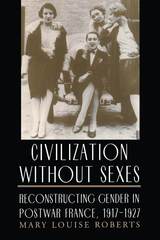 Civilization without Sexes: Reconstructing Gender in Postwar France, 1917-1927
Mary Louise Roberts
University of Chicago Press, 1994 In the raucous decade following World War I, newly blurred boundaries between male and female created fears among the French that theirs was becoming a civilization without sexes. This new gender confusion became a central metaphor for the War's impact on French culture and led to a marked increase in public debate concerning female identity and woman's proper role. Mary Louise Roberts examines how in these debates French society came to grips with the catastrophic horrors of the Great War.
In sources as diverse as parliamentary records, newspaper articles, novels, medical texts, writings on sexology, and vocational literature, Roberts discovers a central question: how to come to terms with rapid economic, social, and cultural change and articulate a new order of social relationships. She examines the role of French trauma concerning the War in legislative efforts to ban propaganda for abortion and contraception, and explains anxieties about the decline of maternity by a crisis in gender relations that linked soldiery, virility, and paternity.
Through these debates, Roberts locates the seeds of actual change. She shows how the willingness to entertain, or simply the need to condemn, nontraditional gender roles created an indecisiveness over female identity that ultimately subverted even the most conservative efforts to return to traditional gender roles and irrevocably altered the social organization of gender in postwar France.
Civilizing Chengdu: Chinese Urban Reform, 1895–1937
Kristin Stapleton
Harvard University Press, 2000 This work examines the history of urban planning and administration during modern China's first age of city-centered politics, focusing on the New Policies of the late Qing and the city administration movement of the 1920s. Between 1895 and 1937, the management of cities emerged as one of the chief challenges for the Chinese state. Through a detailed case study, based on newly available archival sources, of the process of urban reform in Chengdu, a key provincial capital in the interior, Kristin Stapleton shows how urban reformers permanently changed urban administration, the urban landscape, and urban life by promoting a new type of orderly and productive community in population centers despite the many upheavals of the late Qing and Republican eras.
Civilizing Money: Hume, his Monetary Project, and the Scottish Enlightenment
George Caffentzis
Pluto Press, 2021 Taking the Scottish Enlightenment philosopher David Hume as its subject, this book breaks new ground in focusing its lens on a little-studied aspect of Hume’s thinking: his understanding of money.
George Caffentzis makes both an intervention in the field of monetary philosophy and into Marxian conceptions of the relation between philosophy and capitalist development. He vividly charts the ways in which Hume’s philosophy directly informed the project of ‘civilizing’ the people of the Scottish Highlands and pacifying the English proletariat in response to the revolts of both groups at the heart of the empire.
Built on careful historical and philosophical detective work, Civilizing Money offers a stimulating and radical political reading of the ways in which Hume’s fundamental philosophical claims performed concrete political functions.
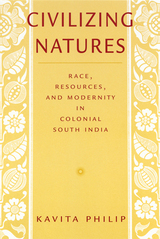 Civilizing Natures: Race, Resources, and Modernity in Colonial South India
Philip, Kavita
Rutgers University Press, 2003 Science was a central pillar of colonialism, but the converse holds true as well: colonialism profoundly shaped the character of nineteenth-century science. Civilizing Natures unravels unexpected relationships between science, technology, and administrative systems in colonial India from the 1850s to the 1930s, deepening our perspective on continuing conflicts over race, resources, and empire.
Botanists, anthropologists, and foresters had their most important sources of data—nature and natives—located at colonial sites. In the hilly, forested regions of Madras Presidency, tribal populations were studied by ethnographers, managed by revenue officials, recruited by plantation contractors, and modernized by missionaries. Racial constructions of nature and modernity helped criminalize and domesticate unruly natives. This is a story about the construction of nature in southern India that is deeply local and irreducibly global.
Through detailed case studies, Kavita Philip shows how race and nature are fundamental to understanding colonial modernities. Through its insightful combination of methodologies from both the humanities and the social sciences, Civilizing Natures complicates our understandings of the relationships between science and religion, pre-modern and civilized, environment and society.
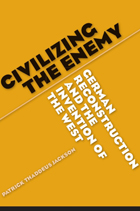 Civilizing the Enemy: German Reconstruction and the Invention of the West
Patrick Thaddeus Jackson
University of Michigan Press, 2006 For the past century, politicians have claimed that "Western Civilization" epitomizes democratic values and international stability. But who is a member of "Western Civilization"? Germany, for example, was a sworn enemy of the United States and much of Western Europe in the first part of the twentieth century, but emerged as a staunch Western ally after World War II.
By examining German reconstruction under the Marshall Plan, author Patrick Jackson shows how the rhetorical invention of a West that included Germany was critical to the emergence of the postwar world order. Civilizing the Enemy convincingly describes how concepts are strategically shaped and given weight in modern international relations, by expertly dissecting the history of "the West" and demonstrating its puzzling persistence in the face of contradictory realities.
"By revisiting the early Cold War by means of some carefully conducted intellectual history, Patrick Jackson expertly dissects the post-1945 meanings of "the West" for Europe's emergent political imaginary. West German reconstruction, the foundation of NATO, and the idealizing of 'Western civilization' all appear in fascinating new light."
--Geoff Eley, University of Michigan
"Western civilization is not given but politically made. In this theoretically sophisticated and politically nuanced book, Patrick Jackson argues that Germany's reintegration into a Western community of nations was greatly facilitated by civilizational discourse. It established a compelling political logic that guided the victorious Allies in their occupation policy. This book is very topical as it engages critically very different, and less successful, contemporary theoretical constructions and political deployments of civilizational discourse."
--Peter J. Katzenstein, Cornell University
"What sets Patrick Jackson's book apart is his attention, on the one hand, to philosophical issues behind the kinds of theoretical claims he makes and, on the other hand, to the methodological implications that follow from those claims. Few scholars are willing and able to do both, and even fewer are as successful as he is in carrying it off. Patrick Jackson is a systematic thinker in a field where theory is all the rage but systematic thinking is in short supply."
--Nicholas Onuf, Florida International University
Patrick Thaddeus Jackson is Assistant Professor of International Relations in American University's School of International Service.
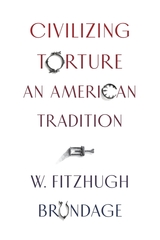 Civilizing Torture: An American Tradition
W. Fitzhugh Brundage
Harvard University Press, 2020 Pulitzer Prize Finalist
Silver Gavel Award Finalist
“A sobering history of how American communities and institutions have relied on torture in various forms since before the United States was founded.”
—Los Angeles Times
“That Americans as a people and a nation-state are violent is indisputable. That we are also torturers, domestically and internationally, is not so well established. The myth that we are not torturers will persist, but Civilizing Torture will remain a powerful antidote in confronting it.”
—Lawrence Wilkerson, former Chief of Staff to Secretary of State Colin Powell
“Remarkable…A searing analysis of America’s past that helps make sense of its bewildering present.”
—David Garland, author of Peculiar Institution
Most Americans believe that a civilized state does not torture, but that belief has repeatedly been challenged in moments of crisis at home and abroad. From the Indian wars to Vietnam, from police interrogation to the War on Terror, US institutions have proven far more amenable to torture than the nation’s commitment to liberty would suggest.
Civilizing Torture traces the history of debates about the efficacy of torture and reveals a recurring struggle to decide what limits to impose on the power of the state. At a time of escalating rhetoric aimed at cleansing the nation of the undeserving and an erosion of limits on military power, the debate over torture remains critical and unresolved.
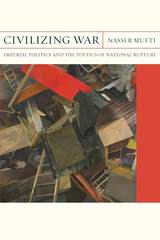 Civilizing War: Imperial Politics and the Poetics of National Rupture
Nasser Mufti
Northwestern University Press, 2018 Winner of the Gustave O. Arlt Award in the Humanities, awarded by the Council of Graduate Schools
Honorable Mention for the 2019 Sonya Rudikoff Prize, awarded by the Northeast Victorian Studies Association
Civilizing War traces the historical transformation of civil war from a civil affair into an uncivil crisis. Civil war is today synonymous with the global refugee crisis, often serving as grounds for liberal-humanitarian intervention and nationalist protectionism.
In Civilizing War, Nasser Mufti situates this contemporary conjuncture in the long history of British imperialism, demonstrating how civil war has been and continues to be integral to the politics of empire. Through comparative readings of literature, criticism, historiography, and social analysis, Civilizing War shows how writers and intellectuals of Britain’s Anglophone empire articulated a “poetics of national rupture” that defined the metropolitan nation and its colonial others.
Mufti’s tour de force marshals a wealth of examples as diverse as Thomas Carlyle, Benjamin Disraeli, Friedrich Engels, Arthur Conan Doyle, Rudyard Kipling, Joseph Conrad, V. S. Naipaul, Nadine Gordimer, and Michael Ondaatje to examine the variety of forms this poetics takes—metaphors, figures, tropes, puns, and plot—all of which have played a central role in Britain’s civilizing mission and its afterlife. In doing so, Civilizing War shifts the terms of Edward Said’s influential Orientalism to suggest that imperialism was not only organized around the norms of civility but also around narratives of civil war.
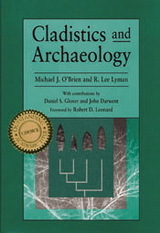 Cladistics and Archaeology
Michael J O'Brien
University of Utah Press, 2003 Cladistics is a method used in biology and paleobiology to establish phylogeny: what produced what and in what order. It is a very specific method, developed in Germany in the 1950s and currently the primary phylogenetic method in the world. Cladistics has also been applied to such fields as historical linguistics and manuscript history. If things evolve in a nonrandom way, they may be appropriately studied using this method. In Cladistics and Archaeology, Michael O’Brien and Lee Lyman explore the application of cladistics to archaeology by considering artifacts as human phenotypic characters. Their fundamental premise is that particular kinds of characters (style, artifact type, tool) can be used to create historically meaningful nested taxa. Further, they argue that this approach offers a means of building connections and 'life histories' of archaeological artifacts. In order to make a potentially difficult topic more readily comprehensible, the authors have organized the book as something of a primer. Cladistics and Archaeology includes many figures to illustrate basic concepts, as well as a case study that shows a step-by-step application of cladistics to archaeology.
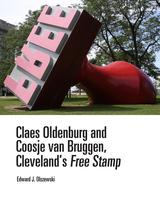 Claes Oldenburg and Coosje van Bruggen, Cleveland’s Free Stamp: Cleveland’s Free Stamp
Edward J. Olszewski
Ohio University Press, 2017 In 1985, the Sohio oil company commissioned Claes Oldenburg and Coosje van Bruggen to design and construct a large outdoor sculpture for its new corporate headquarters in Cleveland, Ohio. The result was Free Stamp, a bold and distinctive installation that captured both a Pop Art sensibility and a connection to the city’s industrial past. Sohio executives approved the design, and work was already underway, when British Petroleum acquired the company. The new owners quickly decided that the sculpture was “inappropriate” for their building and attempted to rid themselves of Free Stamp by donating it to the city of Cleveland—a gift that the city initially had no desire to accept. After much debate and public protest, the sculpture found a home in Willard Park, where it stands today. This is the first study of any sculpture by Oldenburg and van Bruggen to examine the genesis of their art from conception to installation. Edward J. Olszewski has put together a fascinating narrative based on interviews with the artists, archival material from city records, and in-house corporate memoranda, as well as letters to the editor and political cartoons. He traces the development of the sculpture from the artists’ first sketches and models to the installation of the completed work in its urban environment.
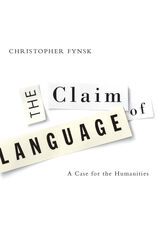 Claim Of Language: A Case For The Humanities
Christopher Fynsk
University of Minnesota Press, 2004 Argues for the importance of humanities research in an era of globalization and technical reason The humanities—in their conceptual and intellectual specificity, disciplinary rigor, and ethical, social, and political potential—are very much in need of defense and rearticulation in our time, particularly from a perspective that moves beyond the political and philosophical reductions of identity politics. In The Claim of Language, Christopher Fynsk clearly and eloquently does just that. Leaving aside polemics, Fynsk asserts that discourses in the humanities will find real ethical-political purchase when they engage with the material events in art, literature, and social life that call for humanistic reflection. Fynsk describes the collapse of the traditional terms of defense in the contemporary academy, and then sets out to establish that the humanities are more than a loose affiliation of academic disciplines and research projects. Showing how events in language raise questions fundamental to the humanities—questions about the nature of human experience in the modern era and the nature of the human itself— The Claim of Language proposes a renewed relationship to language as a way to rethink humanistic research. Fynsk extends his philosophical meditation with two essays on the university and the politics of philosophy. The first, devoted to the work of Gérard Granel, explores the political implications of a quite radical project of fundamental critique. The second focuses on Jacques Derrida’s propositions for a reconception of the nature and task of critical thought in the new Collège International de Philosophie.
Claim Tickets for Stolen People
Quintin Collins
Ohio State University Press, 2022 Honor Book, 2023 Black Caucus of the American Library Association Literary Awards, Poetry Category
In Claim Tickets for Stolen People, Quintin Collins embraces a range of poetic forms and registers to show the resilience of Blackness in a colonized world. The tension between mortality and vitality is ever-present, whether Collins is charting his daughter’s emergence into being, cataloging the toll of white violence, or detailing the exuberance of community, family, and Chicago and Boston life. In Collins’s hands, the world is exquisitely physical and no element is without its own perspective, whether it is a truck sheared by a highway bridge or bees working through the knowledge that humans will kill them, burn their homes, and steal their honey. All goes toward honoring Black grief, Black anger, Black resistance, Black hope—and the persistence of Black love.
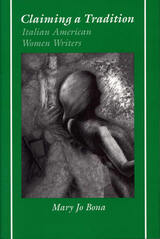 Claiming a Tradition: Italian American Women Writers
Mary Jo Bona
Southern Illinois University Press, 1999
Mary Jo Bona reconstructs the literary history and examines the narrative techniques of eight Italian American women's novels from 1940 to the present. Largely neglected until recently, these women's family narratives compel a reconsideration of what it means to be a woman and an ethnic in America.
Bona discusses the novels in pairs according to their focus on Italian American life. She first examines the traditions of italianitá (a flavor of things Italian) that inform and enhance works of fiction. The novelists in that tradition were Mari Tomasi (Like Lesser Gods, 1949) and Marion Benasutti (No Steady Job for Papa, 1966).
Bona then turns to later novels that highlight the Italian American belief in the family's honor and reputation. Conflicts between generations, specifically between autocratic fathers and their children, are central to Octavia Waldo's 1961 A Cup of the Sun and Josephine Gattuso Hendin's 1988 The Right Thing to Do.
Even when writers choose to steer away from the familial focus, Bona notes, their developmental narratives trace the reintegration of characters suffering from a crisis of cultural identity. Relating the characters' struggles to their relationship to the family, Bona examines Diana Cavallo's 1961 A Bridge of Leaves and Dorothy Bryant's 1978 Miss Giardino.
Bona then discusses two innovative novels— Helen Barolini's 1979 Umbertina and Tina De Rosa's 1980 Paper Fish— both of which feature a granddaughter who invokes her grandmother, a godparent figure. Through Barolini's feminist and De Rosa's modernist perspectives, both novels present a young girl developing artistically.
Closing with a discussion of the contemporary terrain Italian American women traverse, Bona examines such topics as sexual identity when it meets cultural identity and the inclusion of italianitá when Italian American identity is not central to the story. Italian American women writers, she concludes, continue in the 1980s and 1990s to focus on the interplay between cultural identity and women's development.
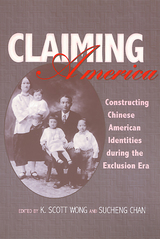 Claiming America
edited by K. Scott Wong and Sucheng Chan
Temple University Press, 1998 This collection of essays centers on the formation of an ethnic identity among Chinese Americans during the period when immigration was halted. The first section emphasizes the attempts by immigrant Chinese to assert their intention of becoming Americans and to defend the few rights they had as resident aliens. Highlighting such individuals as Yung Wing, and ardent advocate of American social and political ideals, and Wong Chin Foo, one of the first activists for Chinese citizenship and voting rights, these essays speak eloquently about the early struggles in the Americanization movement.
The second section shows how children of the immigrants developed a sense of themselves as having a distinct identity as Chinese Americans. For this generation, many of the opportunities available to other immigrants' children were simply inaccessible. In some districts explicit policies kept Chinese children in segregated schools; in many workplaces discriminatory practices kept them from being hired or from advancing beyond the lowest positions. In the 1930s, in fact, some Chinese Americans felt their only option was to emigrate to China, where they could find jobs better matched to their abilities. Many young Chinese women who were eager to take advantage of the educational and work options opening to women in the wider U.S. society first had to overcome their family's opposition and then racism. As the personal testimonies and historical biographies eloquently attest, these young people deeply felt the contradictions between Chinese and American ways; but they also saw themselves as having to balance the demands of the two cultures rather than as having to choose between them.
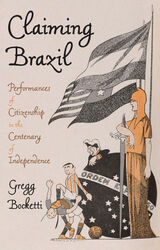 Claiming Brazil: Performances of Citizenship in the Centenary of Independence
Gregg Bocketti
University of Pittsburgh Press, 2022 Brazil marked its centennial as an independent country in 1922. Claiming Brazil explores how Brazilians from different walks of life commemorated the event, and how this led to conflicting ideas of national identity. Civic rituals hold enormous significance, and Brazilian citizens, immigrants, and visitors employed them to articulate and perform their sense of what Brazil was, stood for, and could be. Gregg Bocketti argues that these celebrations, rather than uniting the country, highlighted tensions between modernity and tradition, over race and ethnicity, and between nation and region. Further, the rituals contributed to the collapse of the country’s social and political status quo and gave substance to the debates and ideas that characterized Brazilian life in the 1920s and then under the transformative rule of Getúlio Vargas (1930–1945). Now, at the bicentennial of Brazil’s independence, which itself unfolds in a period of political crisis and economic dislocation, and in the aftermath of several large civic events, it is an opportune moment to consider how Brazilians used civic rituals to engage with questions of identity, belonging, and citizenship one hundred years ago.
Claiming Civic Virtue: Gendered Network Memory in the Mara Region, Tanzania
Jan Bender Shetler
University of Wisconsin Press, 2019 Among communities in the Mara region of Tanzania, it is considered men’s responsibility to maintain “history.” But when Jan Bender Shetler’s questions turned to specific familial connections within the village, she discovered her male informants had to occasionally leave the room—to ask their wives for clarification. The result is an original and wide-ranging investigation of the gendered nature of historical memory and its influence on the development of the region over the past 150 years. Shetler’s exploration of these oral traditions and histories opens exciting new vistas for understanding how women and men in this culture tell their stories and assert their roles as public intellectuals—with important implications for research in African and gender studies, and the history of ethnicity and nationalism.
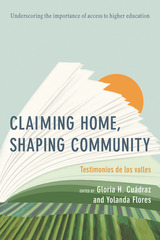 Claiming Home, Shaping Community: Testimonios de los valles
Edited by Gloria H. Cuádraz and Yolanda Flores
University of Arizona Press, 2017 To offer testimonio is inherently political, a vehicle that counters the hegemony of the state and illuminates the repression and denial of human rights. Claiming Home, Shaping Community shares testimonios from and about the lives of Mexican-origin people who left the rural, agricultural Imperial and San Joaquín Valleys to pursue higher education at a University of California campus.
While symbolically their journeys embody the master narrative of the “American Dream,” Claiming Home, Shaping Community does not echo the “rags to riches” trope reified in dominant culture, but rather, it asserts the need to rehumanize the purpose and heart of education. In each chapter, the narrators illustrate myriad supports that allowed them to move forward on their academic and professional journeys: hard work, affirmative action, inclusionary practices, mentors, and their communities’ cultural wealth. Each trajectory is unique, but put together as a collection, the commonalities emerge.
Denoting a sense of political and social urgency that responds to the current accentuated economic disparities between the haves and the have-nots, these essays illuminate the broader societal benefits of federal legislation and resources for state-funded public higher education and policies that broaden access and resources. By telling their stories, the contributors seek to empower others on their journeys to and through higher education.
Contributors:
Daniel “Nane” Alejandrez
Manuel Barajas
Angelica Cárdenas-Chaisson
Gloria H. Cuádraz
Yolanda Flores
Francisco J. Galarte
John J. Halcón
Ester Hernández
Rosa M. Jiménez
Roberto Moreno
José R. Padilla
Enid Pérez
Caroline Sotello Viernes Turner
 Claiming Impartiality
Andrea Warnecke
University of Michigan Press, 2026 Why has multilateral peacebuilding in conflict-ridden states emerged as a depoliticized practice that rarely engages with local actors and agendas? And why has depoliticization persisted despite continued criticisms? Claiming Impartiality offers an innovative answer to the puzzling persistence of depoliticization in post-war peacebuilding that focuses on the institutional mandates, interests, and practices of those international and bilateral organizations that design and implement most peacebuilding interventions.
Drawing on and expanding a Bourdieusian field perspective, the book examines international organizations as actors in multiple fields of global governance. Using the case studies of Bosnia and Herzegovina and Timor-Leste, it traces the emergence and transformation of peacebuilding practices by leading international and bilateral organizations during the first two decades of the field’s existence. The organizational lens highlights the tensions that exist between the objectives of simultaneously acting as a peacebuilding organization and as a peacekeeping, humanitarian, or development organization whose practices are to varying degrees committed to observing the twin principles of impartiality and neutrality. By thinking through these sometimes contradictory roles, the book offers new insights into how these organizations sideline questions of political agency in favor of expanding their influence into related fields of global governance. Claiming Impartiality discusses the future of peacebuilding and explores avenues for addressing political challenges to peace itself.
 Claiming Individuality: The Cultural Politics of Distinction
Edited by Vered Amit and Noel Dyck
Pluto Press, 2006 Individuality is often interpreted as a force for the separation and autonomy of the individual. This book takes a different approach: the contributors explore the expression of individuality as a form of social action inextricably linked to questions of belonging. This book addresses a continuing effort within anthropology to interrogate sociality. Using case studies from North America, Europe, Africa, and Asia, the contributors examine a wide range of topics. Covering everything from studies of childhood and family relations to patterns of movement for tourism, work, and religious pilgrimage; from the spinning of fashions to the sculpting of life narratives, the contributors analyze the shifting forms of the cultural politics of distinction. The book illustrates the variation and ingenuity with which people in various settings claim diverse forms of individuality, their motivations for doing so, and the outcomes of their actions.
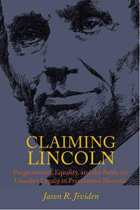 Claiming Lincoln: Progressivism, Equality, and the Battle for Lincoln's Legacy in Presidential Rhetoric
Jason R. Jividen
Northern Illinois University Press, 2011
Abraham Lincoln is clearly one of the most frequently cited figures in American political rhetoric, especially with regard to issues of equality. But given the ubiquity of Lincoln’s legacy, many references to him, even on the presidential level, are often of questionable accuracy. In Claiming Lincoln, Jividen posits that in much 20th-century presidential rhetoric, especially from progressive leaders, Lincoln’s understanding of equality is slowly divorced from its grounding in the natural rights thinking of the American Founding and reinterpreted in light of progressive history.
Claiming Lincoln examines the manner in which rhetoricians have appealed to Lincoln’s legacy, only to distort that legacy in the process. Focusing on Theodore Roosevelt, Woodrow Wilson, Franklin Roosevelt, and Lyndon Johnson and touching on Barack Obama, Jividen argues that presidential rhetorical use and abuse of Lincoln has profound consequences not only for how we understand Lincoln but also for how we understand American democracy. Jividen’s original take on Lincoln and the Progressives will be of interest to scholars of American politics and all those invested in Lincoln’s legacy.
Claiming Neighborhood: New Ways of Understanding Urban Change
John Betancur
University of Illinois Press, 2016 Based on historical case studies in Chicago, John J. Betancur and Janet L. Smith focus both the theoretical and practical explanations for why neighborhoods change today.
As the authors show, a diverse collection of people including urban policy experts, elected officials, investors, resident leaders, institutions, community-based organizations, and many others compete to control how neighborhoods change and are characterized. Betancur and Smith argue that neighborhoods have become sites of consumption and spaces to be consumed. Discourse is used to add and subtract value from them. The romanticized image of "the neighborhood" exaggerates or obscures race and class struggles while celebrating diversity and income mixing. Scholars and policy makers must reexamine what sustains this image and the power effects produced in order to explain and govern urban space more equitably.
 Claiming Others: Transracial Adoption and National Belonging
Mark C. Jerng
University of Minnesota Press, 2010 Transracial adoption has recently become a hotly contested subject of contemporary and critical concern, with scholars across the disciplines working to unravel its complex implications. In Claiming Others, Mark C. Jerng traces the practice of adoption to the early nineteenth century, revealing its surprising centrality to American literature, law, and social thought.
Jerng considers how adoption makes us rethink the parent-child bond as central to issues of race and nationality, showing the ways adoption also speaks to broader questions about our history and identity. He analyzes adoption through a diverse set of texts, including the 1851 Massachusetts statute that established adoption as we understand it today, early adoption manuals, the New York Times blog Relative Choices, and the work of John Tanner, Lydia Maria Child, William Faulkner, Charles Chesnutt, Chang-rae Lee, and David Henry Hwang.
Imaginative and social practices of transracial adoption have shaped major controversies, Jerng argues, from Native American removal to slavery to cold war expansionism in the twentieth century and the contemporary global market in children. As Claiming Others makes clear, understanding adoption is crucial not just to understanding the history between races in the United States, but also the meaning of emancipation and the role of family in nationhood.
 Claiming Power Over Life: Religion and Biotechnology Policy
Mark J. Hanson, Editor
Georgetown University Press, 2001 Developments in biotechnology, such as cloning and the decoding of the human genome, are generating questions and choices that traditionally have fallen within the realm of religion and philosophy: the definition of human life, human vs. divine control of nature, the relationship between human and non-human life, and the intentional manipulation of the mechanisms of life and death. In Claiming Power over Life, eight contributors challenge policymakers to recognize the value of religious views on biotechnology and discuss how best to integrate the wisdom of the Christian and Jewish traditions into public policy debates. Arguing that civic discourse on the subject has been impoverished by an inability to accommodate religious insights productively, they identify the ways in which religious thought can contribute to policymaking. Likewise, the authors challenge religious leaders and scholars to learn about biotechnology, address the central issues it raises, and participate constructively in the moral debates it engenders. The book will be of value to policymakers, religious leaders, ethicists, and all those interested in issues surrounding the intersection of religion and biotechnology policy.
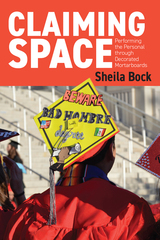 Claiming Space: Performing the Personal through Decorated Mortarboards
Sheila Bock
Utah State University Press, 2023 Claiming Space examines the growing tradition of decorating mortarboards at college graduations, offering a performance-centered approach to these material sites of display. Taking mortarboard displays seriously as public performances of the personal, this book highlights the creative, playful, and powerful ways graduates use their caps to fashion their personal engagement with notions of self, community, education, and the unknown future.
Claiming the space of these graduation caps is a popular and widespread way that individuals make their voices heard, or rather seen, in the visual landscape of commencement ceremonies. The forms and meanings of these material displays take shape in relation to broader, ongoing conversations about higher education in the United States, conversations grounded in discourses of belonging, citizenship, and the promises of the American Dream. Integrating observational fieldwork with extensive interviews and surveys, author Sheila Bock highlights the interpretations of individuals participating in this tradition. She also attends to the public framings of this tradition, including how images of mortarboards have grounded online enactments of community through hashtags such as #LatinxGradCaps and #LetTheFeathersFly, as well as what rhetorical framings are employed in news coverage and legal documents in cases where the value of the practice is both called into question and justified.
As university administrators and cultural commentators seek to make sense of the current state of higher education, these forms of material expression offer insight into how students themselves are grappling with higher ed's promises and shortcomings. Claiming Space is a meaningful contribution to folklore, cultural studies, media studies, and education.
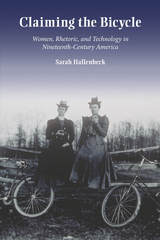 Claiming the Bicycle: Women, Rhetoric, and Technology in Nineteenth-Century America
Sarah Hallenbeck
Southern Illinois University Press, 2016 Although the impact of the bicycle craze of the late nineteenth century on women’s lives has been well documented, rarely have writers considered the role of women’s rhetorical agency in the transformation of bicycle culture and the bicycle itself. In Claiming the Bicycle, Sarah Hallenbeck argues that through their collective rhetorical activities, women who were widely dispersed in space, genre, and intention negotiated what were considered socially acceptable uses of the bicycle, destabilizing cultural assumptions about femininity and gender differences.
Hallenbeck describes the masculine culture of the “Ordinary” bicycle of the 1880s and the ways women helped bring about changes in this culture; asserts that women contributed to bicycle design, helping to produce the more gender-neutral “Safety” bicycle in response to discourse about their needs; and analyzes women writers’ uses of the new venue of popular magazines to shape a “bicycle girl” ethos that prompted new identities for women. The author considers not only how technical documents written by women bicyclists encouraged new riders to understand their activity as transforming gender definitions but also how women used bicycling as a rhetorical resource to influence medical discourse about their bodies.
Making a significant contribution to studies of feminist rhetorical historiography, rhetorical agency, and technical communication, Claiming the Bicycle asserts the utility of a distributed model of rhetorical agency and accounts for the efforts of widely dispersed actors to harness technology in promoting social change.
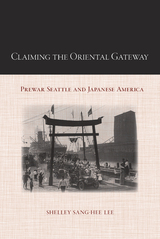 Claiming the Oriental Gateway: Prewar Seattle and Japanese America
Authored by Shelley S. Lee
Temple University Press, 2012 In Claiming the Oriental Gateway, Shelley Sang-Hee Lee explores the various intersections of urbanization, ethnic identity, and internationalism in the experience of Japanese Americans in early twentieth-century Seattle. She examines the development and self-image of the city by documenting how U.S. expansion, Asian trans-Pacific migration, and internationalism were manifested locally—and how these forces affected residents’ relationships with one another and their surroundings. Lee details the significant role Japanese Americans—both immigrants and U.S. born citizens—played in the social and civic life of the city as a means of becoming American. Seattle embraced the idea of cosmopolitanism and boosted its role as a cultural and commercial "Gateway to the Orient" at the same time as it limited the ways in which Asian Americans could participate in the public schools, local art production, civic celebrations, and sports. She also looks at how Japan encouraged the notion of the "gateway" in its participation in the Alaska-Yukon-Pacific Exposition and International Potlach. Claiming the Oriental Gateway thus offers an illuminating study of the "Pacific Era" and trans-Pacific relations in the first four decades of the twentieth century.
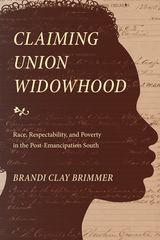 Claiming Union Widowhood: Race, Respectability, and Poverty in the Post-Emancipation South
Brandi Clay Brimmer
Duke University Press, 2020 In Claiming Union Widowhood, Brandi Clay Brimmer analyzes the US pension system from the perspective of poor black women during and after the Civil War. Reconstructing the grassroots pension network in New Bern, North Carolina, through a broad range of historical sources, she outlines how the mothers, wives, and widows of black Union soldiers struggled to claim pensions in the face of evidentiary obstacles and personal scrutiny. Brimmer exposes and examines the numerous attempts by the federal government to exclude black women from receiving the federal pensions that they had been promised. Her analyses illustrate the complexities of social policy and law administration and the interconnectedness of race, gender, and class formation. Expanding on previous analyses of pension records, Brimmer offers an interpretive framework of emancipation and the freedom narrative that places black women at the forefront of demands for black citizenship.
Claims for Poetry
Donald Hall, Editor
University of Michigan Press, 1982 A collection of essays by contemporary American poets on the subject of their art
 The Claims of Poverty: Literature, Culture, and Ideology in Late Medieval England
Kate Crassons
University of Notre Dame Press, 2010
In The Claims of Poverty, Kate Crassons explores a widespread ideological crisis concerning poverty that emerged in the aftermath of the plague in late medieval England. She identifies poverty as a central preoccupation in texts ranging from Piers Plowman and Wycliffite writings to The Book of Margery Kempe and the York cycle plays. Crassons shows that these and other works form a complex body of writing in which poets, dramatists, and preachers anxiously wrestled with the status of poverty as a force that is at once a sacred imitation of Christ and a social stigma; a voluntary form of life and an unwelcome hardship; an economic reality and a spiritual disposition.
Crassons argues that literary texts significantly influenced the cultural conversation about poverty, deepening our understanding of its urgency as a social, economic, and religious issue. These texts not only record debates about the nature of poverty as a form of either vice or virtue, but explore epistemological and ethical aspects of the debates. When faced with a claim of poverty, people effectively become readers interpreting the signs of need in the body and speech of their fellow human beings. The literary and dramatic texts of late medieval England embodied the complexity of such interaction with particular acuteness, revealing the ethical stakes of interpretation as an act with direct material consequences. As The Claims of Povertydemonstrates, medieval literature shaped perceptions about who is defined as "poor," and in so doing it emerged as a powerful cultural force that promoted competing models of community, sanctity, and justice.
"The Claims of Povertypowerfully shows that poverty was both a central and a slippery concept in late medieval England, and that literary texts grappled with its nature and status. Through nuanced readings of key works, Kate Crassons persuasively demonstrates that medieval authors were not only alert to the social and theological meanings of destitution but also understood its complicated social and moral dimensions. This compelling and compassionate book reminds us, too, that while poverty may have emerged as a site of historical and cultural crisis in the fourteenth century, it has lost none of its urgency in the centuries since." --Claire Sponsler, University of Iowa
"With The Claims of Poverty, Kate Crassons has written a far-ranging and important study of literary representations of poverty in the Middle Ages. She not only sensitively treats a wide variety of literary sources, from allegory to dream vision to sermon to autobiography to drama, but she also carefully places them within significant historical contexts, from changing labor practices and legislation to antifraternalism to heretical movements. Crassons's analysis of literary texts within the context of these crucially important developments in attitudes toward poverty--whose consequences still remain--demonstrates the profound hermeneutic difficulties that poverty poses then and now." --Elizabeth A. Robertson, University of Colorado at Boulder
"Professor Crassons demonstrates both how complex the discussion of poverty is in Piers Plowman and how its analysis of the poor fits into a larger conversation in which literary texts helped form a growing skepticism towards poverty as a virtue in fourteenth- and fifteenth-century England." --Richard Newhauser, Arizona State University
Claire Denis
Judith Mayne
University of Illinois Press, 2005 Widely regarded as one of the most innovative and passionate filmmakers working in France today, Claire Denis has continued to make beautiful and challenging films since the 1988 release of her first feature, Chocolat. Judith Mayne's comprehensive study traces Denis's career and discusses her major feature films in rich detail. Born in Paris but raised in West Africa, Denis explores in her films the legacies of French colonialism and the complex relationships between sexuality, gender, and race. From the adult woman who observes her past as a child in Cameroon to the Lithuanian immigrant who arrives in Paris and watches a serial killer to the disgraced French Foreign Legionnaire attempting to make sense of his past, the subjects of Denis's films continually revisit themes of watching, bearing witness, and making contact, as well as displacement, masculinity, and the migratory subject.
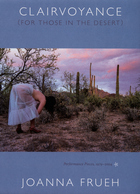 Clairvoyance (For Those In The Desert): Performance Pieces, 1979–2004
Joanna Frueh
Duke University Press, 2008 The performance artist Joanna Frueh has emerged over the past twenty-five years as a wildly original voice in feminist art. Her uninhibited performances are celebrations of beauty, sensuality, eroticism, and pleasure. Clairvoyance (For Those In The Desert), which features eighteen of her essential performance texts, is a celebration of this remarkable artist and her work. Arranged chronologically, from The Concupiscent Critic (1979) through Ambrosia (2004), the pieces reveal Frueh’s evolution as an artist and intellectual over the course of her career. Many of these texts have never before been published; others have not been readily available until now. Among the sixteen color photographs in this richly illustrated book are pictures of Frueh performing and images from Joanna in the Desert, a 2006 collaboration between Frueh and the artist and scholar Jill O’Bryan. Frueh’s performances are unabashedly autobiographical, as likely to reflect her scholarship as a feminist art historian as her love affairs or childhood memories. For Frueh, eros and self-love are part of a revolutionary feminist strategy; her work exemplifies the physicality and embrace of pleasure that she finds wanting in contemporary feminist theory. Scholarly and rigorous yet playful in tone, her performances are joyful, filled with eroticism, flowers, sexy costumes, and beautiful colors, textures, and scents. Recurring themes include Frueh’s passionate attachment to the desert landscape and the idea of transformation: a continual reaching for clarity of thought and feeling.
In an afterword as lyrical and breathless as her performance pieces, Frueh explores her identification with the desert and its influence on her art. Clairvoyance (For Those In The Desert) includes a detailed chronology of Frueh’s performances.
Clambake: A History and Celebration of an American Tradition
Katherine D. Neustadt
University of Massachusetts Press, 1992 An appreciative examination of the New England clambake, Neustadt divides her study into three parts: historical (social, economic, political, regional, and cultural) influences on the clambake; a close focus on the Allen's Neck clambake as a cultural phenomena in its own right; and a critical examination of the central elements of the clambaking tradition--food, ritual, and festival.
The author views the clambake as a unique American folk tradition with interesting connections and rich resonances with other aspects of American culture and history.
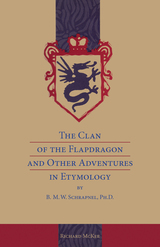 The Clan of the Flapdragon and Other Adventures in Etymology by B. M. W. Schrapnel, Ph.D.
Richard McKee
University of Alabama Press, 1997 This potpourri of satire on language use in Western culture will trigger chuckles and guffaws from an eclectic readership
In The Clan of the Flapdragon and Other Adventures in Etymology by B. M. W. Schrapnel, Ph.D., the pseudonymous critic satirizes a variety of subjects in and out of academe. These adventurous essays include lampoons on writing, language, and literature, and the collection is a delightful spoof of much in contemporary culture—especially areas of intellectual pretension. Readers will be entertained by anachronistic allusions, improbable parodies, whimsical etymologies, tongue-in-cheek word play, and stunning purple prose—examples of just some of the liberties Schrapnel takes with the language.
Dr. Schrapnel includes a wide array of audience reactions in the form of bogus letters from fictional readers, confirming that language and literature are everyone’s business. He also offers an annual list of words that writers and speakers should use more often—a lexicographer’s equivalent to the endangered species list—and coins terms such as prufrockery and grendelish.
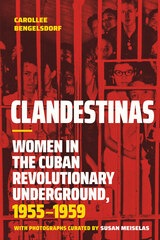 Clandestinas: Women in the Cuban Revolutionary Underground, 1955–1959
Carollee Bengelsdorf. With Photographs Curated by Susan Meiselas.
Duke University Press, 2025 In Clandestinas, Carollee Bengelsdorf challenges the silences surrounding women’s participation in the insurrection in Havana during the Cuban Revolution. The official narrative of the revolution emphasizes virtually exclusively the role of the guerrillas in the sierra in defeating the Batista dictatorship, thereby diminishing the centrality of the urban underground. Given that women insurrectionists were overwhelmingly concentrated in the cities, this inevitably meant that their presence was diminished as well. But even in the urban movements, women are portrayed as secondary, as enablers of the men who do the real fighting. Drawing on fieldwork and in-depth interviews with over thirty former clandestinas, Bengelsdorf surfaces a different narrative. She paints a portrait detailing the lives of women and the actions in which they were involved in the clandestinidad. She briefly examines the trauma each of her interviewees experienced to different degrees both during and after the dictatorship’s downfall. The book includes a visual essay with photographs curated by Susan Meiselas.
 Clandestine Encounters: Philosophy in the Narratives of Maurice Blanchot
Kevin Hart
University of Notre Dame Press, 2010
Maurice Blanchot is perhaps best known as a major French intellectual of the twentieth century: the man who countered Sartre's views on literature, who affirmed the work of Sade and Lautreamont, who gave eloquent voice to the generation of '68, and whose philosophical and literary work influenced the writing of, among others, Jacques Derrida, Gilles Deleuze, and Michel Foucault. He is also regarded as one of the most acute narrative writers in France since Marcel Proust.
In Clandestine Encounters, Kevin Hart has gathered together major literary critics in Britain, France, and the United States to engage with Blanchot's immense, fascinating, and difficult body of creative work. Hart's substantial introduction usefully places Blanchot as a significant contributor to the tradition of the French philosophical novel, beginning with Voltaire's Candide in 1759, and best known through the works of Sartre. Clandestine Encountersconsiders a selection of Blanchot's narrative writings over the course of almost sixty years, from stories written in the mid-1930s to L'instant de ma mort (1994). Collectively, the contributors' close readings of Blanchot's novels, recits, and stories illuminate the close relationship between philosophy and narrative in his work while underscoring the variety and complexity of these narratives.
"Blanchot's narratives are here read with the care, patience, and thoroughness they deserve. The collection sustains a remarkable intensity of engagement throughout, in so doing opening these narratives out to their necessary contexts--philosophical, of course; but also literary, political, theological, and biographical--with welcome dedication and integrity. The volume makes a timely and decisive contribution to its field, where it will form a major point of reference." --Martin Crowley, Queens' College, University of Cambridge
"This outstanding collection--lucid, engaging, generous--illuminates Blanchot and the very notion of 'the philosophical.' " --Gerald Prince, University of Pennsylvania
"This collection contains some very important pieces on a major figure of twentieth-century modernism. Blanchot now has a much wider audience in North American than he did even a few years ago when it was mostly experimental fiction writers like Paul Auster, Lydia Davis, R. M. Berry, and Steve Tomasula--not literary critics--who took an interest in Blanchot's literary writings. The focus on the 'narratives' (or, better, 'fictions') sets this volume apart from, and makes it a good deal more stimulating than, other recent collections of essays on Blanchot." --Gerald Bruns, University of Notre Dame
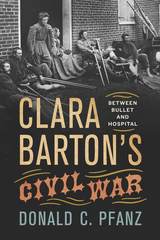 Clara Barton's Civil War: Between Bullet and Hospital
Donald C. Pfanz
Westholme Publishing, 2018 Through Battle Dispatches, Letters, and Other Records, Discovering the Wartime Service of America’s Most Famous Nurse
“I always tried to succor the wounded until medical aid and supplies could come up—I could run the risk; it made no difference to anyone if I were shot or taken prisoner.” So recorded Clara Barton, the most famous woman to emerge from the American Civil War. In an age when few women worked in hospitals, much less at the front, Barton served in at least four Union armies, providing food and assistance to wounded soldiers on battlefields stretching from Maryland to South Carolina. Thousands of soldiers benefited from her actions, and she is unquestionably an American heroine. But how much do we really know about her actual wartime service? Most information about Barton’s activities comes from Barton herself. After the war, she toured the country recounting her wartime experiences to overflowing audiences. In vivid language, she described crossing the Rappahannock River under fire to succor wounded Union soldiers at Fredericksburg, transporting critical supplies to field hospitals at Antietam, and enduring searing heat and brackish water on the sunscorched beaches of South Carolina. She willingly braved hardship and danger in order to help the young men under her care, receiving in return their love and respect. Most of Barton’s biographers have accepted her statements at face value, but in doing so, they stand on shaky ground, for Barton was a relentless selfpromoter and often embellished her stories in an effort to enhance her accomplishments.
In Clara Barton’s Civil War: Between Bullet and Hospital, distinguished historian Donald Pfanz revisits Barton’s claims, comparing the information in her speeches with contemporary documents, including Barton’s own wartime diary and letters. In doing so, he provides the first balanced and accurate account of her wartime service—a service that in the end needed no exaggeration.
Clarel: A Poem and Pilgrimage in the Holy Land
Herman Melville
Northwestern University Press, 2008 Melville’s long poem Clarel: A Poem and Pilgrimage in the Holy Land (1876) was the last full-length book he published. Until the mid-twentieth century even the most partisan of Melville’s advocates hesitated to endure a four-part poem of 150 cantos and almost 18,000 lines about a naive American named Clarel, on pilgrimage through the Palestinian ruins with a provocative cluster of companions.
But modern critics have found Clarel a much better poem than was ever realized. Robert Penn Warren called it a precursor of The Waste Land. It abounds with revelations of Melville’s inner life. Most strikingly, it is argued that the character Vine is a portrait of Melville’s friend Nathaniel Hawthorne. Clarel is one of the most complex theological explorations of faith and doubt in all of American literature, and this edition brings Melville’s poem to new life.
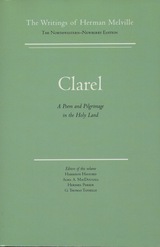 Clarel: Volume Twelve, Scholarly Edition
Herman Melville
Northwestern University Press, 1991 Melville's long poem Clarel: A Poem and Pilgrimage in the Holy Land (1876) was the last full-length book he published. Until the mid-twentieth century even the most partisan of Melville's advocates hesitated to endure a four-part poem of 150 cantos of almost 18,000 lines, about a naïve American named Clarel, on pilgrimage through the Palestinian ruins with a provocative cluster of companions.
But modern critics have found Clarel a much better poem than was ever realized. Robert Penn Warren called it a precursor of The Waste Land. It abounds with revelations of Melville's inner life. Most strikingly, it is argued that the character Vine is a portrait of Melville's friend Hawthorne. Based on the only edition published during Melville's lifetime, this scholarly edition adopts thirty-nine corrections from a copy marked by Melville and incorporates 154 emendations by the present editors, an also includes a section of related documents and extensive discussions.
This scholarly edition is an Approved Text of the Center for Editions of American Authors (Modern Language Association of America).
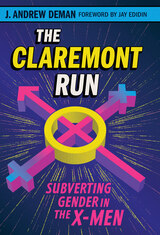 The Claremont Run: Subverting Gender in the X-Men
J. Andrew Deman; Foreword by Jay Edidin
University of Texas Press, 2023 Winner — 2024 Will Eisner Comic Industry Awards in Best Academic/Scholarly Work, announced at San Diego Comic-Con International (2024)
A data-driven deep dive into a legendary comics author’s subversion of gender norms within the bestselling comic of its time.
By the time Chris Claremont’s run as author of Uncanny X-Men ended in 1991, he had changed comic books forever. During his sixteen years writing the series, Claremont revitalized a franchise on the verge of collapse, shaping the X-Men who appear in today’s Hollywood blockbusters. But, more than that, he told a new kind of story, using his growing platform to articulate transgressive ideas about gender nonconformity, toxic masculinity, and female empowerment. J. Andrew Deman’s investigation pairs close reading and quantitative analysis to examine gender representation, content, characters, and story structure. The Claremont Run compares several hundred issues of Uncanny X-Men with a thousand other Marvel comics to provide a comprehensive account of Claremont’s sophisticated and progressive gender politics. Claremont’s X-Men upended gender norms: where female characters historically served as mere eye candy, Claremont’s had leading roles and complex, evolving personalities. Perhaps more surprisingly, his male superheroes defied and complicated standards of masculinity. Groundbreaking in their time, Claremont’s comics challenged readers to see the real world differently and transformed pop culture in the process.
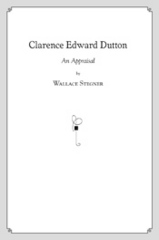 Clarence Edward Dutton: An Appraisal
Stegner, Wallace
University of Utah Press, 2006 "A finger smashed in a car door and a missed geology examination at the University of Utah led Wallace Stegner to a special assignment about Clarence E. Dutton, thence to John Wesley Powell, and finally in 1954 to publication of what is arguably the single best nonfiction book dealing with the American West. Beyond the Hundredth Meridian remains in print fifty-two years after its initial appearance. Not many books have survived that length of time and thrived, despite competing works on the same subject.
This combination of biography, history, and environmental primer written with the flair and the technical skill of a novelist who could masterfully evoke scenes and sustain a gripping factual narrative sprang from Clarence Edward Dutton: An Appraisal. Seldom has such a classic book had such a humble beginning.
Stegner was a young English instructor at the University of Utah when he produced the Dutton essay. He was ambitious and desperate for recognition, a raise (he was earning $1,700 a year), and steady employment in the Depression years. The essay contains hints, in terms of style and content, of what Stegner would eventually produce. Dutton was Stegner’s first published work of nonfiction, and it is fair to say that it lead him, in conjunction with Bernard DeVoto’s prodding, to the subject of conservation."
—from the foreword
Clarence Edward Dutton: An Appraisal was first published by the University of Utah in 1936 and has since become a rarity on the antiquarian book market. It is reproduced in facsimile for this edition.
 Claribel Alegría and Central American Literature: Critical Essays
Sandra M. Boschetto-Sandoval
Ohio University Press, 1993 These essays examine the multifaceted work of the Central American author whom Latin American literary historians consider precursor of “cultural dialogism” in poetry and fiction. As poet, essayist, journalist, novelist, and writer of “quasi–testimonio,” Alegría’s multiple discourses transgress the boundaries between traditional and postmodern political theories and practices. Her work reveals an allegory of relation and negotiation between “intelligentsia” and subaltern peoples as well as the need for a more socially extensive literature, not exclusive of more elite “magical literatures.” The essays in the fist section frame Alegría’s discourses within sociohistorical, political, and literary contexts in order to illuminate the author’s singular place in the literary and political history of Central America. The essays in the second section engage in a feminist dialogic in which the reader encounters various critical validations and valorizations of Alegría’s many female voices. The third section involves the reader in the pursuit of extratextual or extraliterary resonances in Alegría’s work.
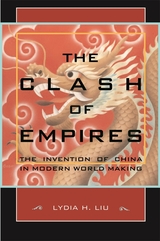 The Clash of Empires: The Invention of China in Modern World Making
Lydia H. Liu
Harvard University Press, 2004 What is lost in translation may be a war, a world, a way of life. A unique look into the nineteenth-century clash of empires from both sides of the earthshaking encounter, this book reveals the connections between international law, modern warfare, and comparative grammar--and their influence on the shaping of the modern world in Eastern and Western terms.
The Clash of Empires brings to light the cultural legacy of sovereign thinking that emerged in the course of the violent meetings between the British Empire and the Qing Dynasty (1644-1911). Lydia Liu demonstrates how the collision of imperial will and competing interests, rather than the civilizational attributes of existing nations and cultures, led to the invention of "China," "the East," "the West," and the modern notion of "the world" in recent history. Drawing on her archival research and comparative analyses of English--and Chinese--language texts, as well as their respective translations, she explores how the rhetoric of barbarity and civilization, friend and enemy, and discourses on sovereign rights, injury, and dignity were a central part of British imperial warfare. Exposing the military and philological--and almost always translingual--nature of the clash of empires, this book provides a startlingly new interpretation of modern imperial history.
 CLASH OF LOYALTIES: A BORDER COUNTY IN THE CIVIL WAR
JOHN W. SHAFFER
West Virginia University Press, 2003 A border county in a border state, Barbour County, West Virginia felt the full terror and tragedy of the Civil War. The wounds of the Civil War cut most bitterly in the border states, that strip of America from Maryland to Kansas, where conflicting loyalties and traditions ripped apart communities, institutions, and families. Barbour County, in the mountainous Northwest of (West) Virginia, is a telling microcosm of the deep divisions which both caused the war and were caused by it. By examining and interpreting long-ignored documents of the times and the personal accounts of the people who were there, Clash of Loyalties offers a startling new view of America's most bitter hour. Nearly half of the military-age men in the county served in the armed forces, almost perfectly divided between the Union and the Confederacy. After West Virginia split with Virginia to rejoin the Union, Confederate soldiers from the regions could not safely visit their homes on furlough, or even send letters to their families. The county's two leading political figures, Samuel Woods and Spencer Dayton, became leaders of the fight for and against secession, dissolved their close personal friendship, and never spoke to one another again. The two factions launched campaigns of terror and intimidation, leading to the burning of several homes, the kidnapping of a sheriff, the murder of a pacifist minister, and the self-imposed exile of many of the county's influential families. The conflicting loyalties crossed nearly all social and economic lines; even the county's slave owners were evenly divided between Union and Confederate sympathies. With a meticulous examination of census and military records, geneologies, period newspapers, tax rolls, eyewitness accounts, and other relevant documents, Clash of Loyalties presents a compelling account of the passion and violence which tore apart Barbour County and the nation.
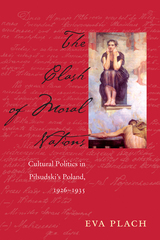 The Clash of Moral Nations: Cultural Politics in Pilsudski’s Poland, 1926–1935
Eva Plach
Ohio University Press, 2006 The May 1926 coup d’état in Poland inaugurated what has become known as the period of sanacja or “cleansing.” The event has been explored in terms of the impact that it had on state structures and political styles. But for both supporters and opponents of the post-May regime, the sanacja was a catalyst for debate about Polish national identity, about citizenship and responsibility to the nation, and about postwar sexual morality and modern gender identities. The Clash of Moral Nations is a study of the political culture of interwar Poland, as reflected in and by the coup. Eva Plach shifts the focus from strictly political contexts and examines instead the sanacja’s open-ended and malleable language of purification, rebirth, and moral regeneration. In tracking the diverse appropriations and manipulations of the sanacja concept, Plach relies on a wide variety of texts, including the press of the period, the personal and professional papers of notable interwar women activists, and the official records of pro-sanacja organizations, such as the Women’s Union for Citizenship Work. The Clash of Moral Nations introduces an important cultural and gendered dimension to understandings of national and political identity in interwar Poland.
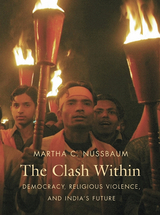 The Clash Within: Democracy, Religious Violence, and India's Future
Martha C. Nussbaum
Harvard University Press, 2009 While America is focused on religious militancy and terrorism in the Middle East, democracy has been under siege from religious extremism in another critical part of the world. As Martha Nussbaum reveals in this penetrating look at India today, the forces of the Hindu right pose a disturbing threat to its democratic traditions and secular state.
Since long before the 2002 Gujarat riots--in which nearly two thousand Muslims were killed by Hindu extremists--the power of the Hindu right has been growing, threatening India's hard-won constitutional practices of democracy, tolerance, and religious pluralism. Led politically by the Bharatiya Janata Party, the Hindu right has sought the subordination of other religious groups and has directed particular vitriol against Muslims, who are cast as devils in need of purging. The Hindu right seeks to return to a "pure" India, unsullied by alien polluters of other faiths, yet the BJP's defeat in recent elections demonstrates the power that India's pluralism continues to wield. The future, however, is far from secure, and Hindu extremism and exclusivity remain a troubling obstacle to harmony in South Asia.
Nussbaum's long-standing professional relationship with India makes her an excellent guide to its recent history. Ultimately she argues that the greatest threat comes not from a clash between civilizations, as some believe, but from a clash within each of us, as we oscillate between self-protective aggression and the ability to live in the world with others. India's story is a cautionary political tale for all democratic states striving to act responsibly in an increasingly dangerous world.
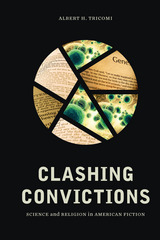 Clashing Convictions: Science and Religion in American Fiction
Albert H. Tricomi
Ohio State University Press, 2016 Clashing Convictions: Science and Religion in American Fiction is the first study to identify a body of twentieth-century American fiction that represents the increasing tensions experienced by people of Christian faith in response to Darwinism, the higher biblical criticism, and modern medicine. Delineating how these works dramatize clashes between scientific and conservative Protestant understandings of the world, Albert H. Tricomi examines a canon of ten novels and one iconic play that present a cultural history of inner turmoil as well as social conflict. The three parts of the study chart this increasing inner turmoil, a rising secularist ideology, and finally a fundamentalist revival among alienated biblical literalists.
With chapters on James Lane Allen’s The Reign of Law, Harold Frederic’s The Damnation of Theron Ware, William Dean Howells’s The Leatherwood God, Sinclair Lewis’s Arrowsmith and Elmer Gantry, Jerome Lawrence and Robert E. Lee’s Inherit the Wind, and James Scott Bell’s The Darwin Conspiracy, Tricomi offers new readings emphasizing how this canon represents science and religion as in deep, if not irreconcilable, conflict. Tricomi’s sweeping study, with its emphasis on the twentieth century, thus reveals from several directions the processes of secularism even as it identifies the emergence of what some have come to describe as the current “postsecular” moment in America.
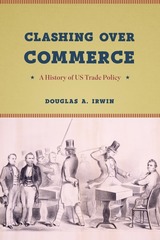 Clashing over Commerce: A History of US Trade Policy
Douglas A. Irwin
University of Chicago Press, 2017 Should the United States be open to commerce with other countries, or should it protect domestic industries from foreign competition? This question has been the source of bitter political conflict throughout American history. Such conflict was inevitable, James Madison argued in The Federalist Papers, because trade policy involves clashing economic interests. The struggle between the winners and losers from trade has always been fierce because dollars and jobs are at stake: depending on what policy is chosen, some industries, farmers, and workers will prosper, while others will suffer.
Douglas A. Irwin’s Clashing over Commerce is the most authoritative and comprehensive history of US trade policy to date, offering a clear picture of the various economic and political forces that have shaped it. From the start, trade policy divided the nation—first when Thomas Jefferson declared an embargo on all foreign trade and then when South Carolina threatened to secede from the Union over excessive taxes on imports. The Civil War saw a shift toward protectionism, which then came under constant political attack. Then, controversy over the Smoot-Hawley tariff during the Great Depression led to a policy shift toward freer trade, involving trade agreements that eventually produced the World Trade Organization. Irwin makes sense of this turbulent history by showing how different economic interests tend to be grouped geographically, meaning that every proposed policy change found ready champions and opponents in Congress.
As the Trump administration considers making major changes to US trade policy, Irwin’s sweeping historical perspective helps illuminate the current debate. Deeply researched and rich with insight and detail, Clashing over Commerce provides valuable and enduring insights into US trade policy past and present.
Class
Andrea Cavalletti
Seagull Books, 2019 In 1936, Walter Benjamin defined the revolutionary class as being in opposition to a dense and dangerous crowd, prone to fear of the foreign, and under the spell of anti-Semitic madness. Today, in formations great or small, that sad figure returns—the hatred of minorities is rekindled and the pied-pipers of the crowd stand triumphant.
Class, by Andrea Cavalletti, is a striking montage of diverse materials—Marx and Jules Verne, Benjamin and Gabriel Tarde. In it, Cavalletti asks whether the untimely concept of class is once again thinkable. Faced with new pogroms and state racism, he challenges us to imagine a movement that would unsettle and eventually destroy the crowd.
 Class Act: The Cultural and Political Life of Ewan Maccoll
Ben Harker
Pluto Press, 2007 Sometimes described as ‘the British Brecht’, Ewan MacColl (1915-1989) was a major twentieth-century political artist. This is the first biography of MacColl, and was prepared with the authorisation of his collaborator and widow, Peggy Seeger.
MacColl became a communist at fourteen and spent six decades at the cultural forefront of numerous political struggles, producing plays, songs and radio programmes on subjects ranging from the Spanish Civil War to the Poll Tax. Charting his involvement in radical theatre, his ground breaking radio work in the UK and the USA, as well as his musical influences and legacy, his three marriages, and his relationship with his songwriter daughter Kirstie MacColl, this is a lively account of a much-loved icon of 20th century folk music.
Drawing on extensive research, Class Act is a freshly conceived and energetically written account of a highly creative and controversial activist.
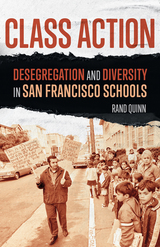 Class Action: Desegregation and Diversity in San Francisco Schools
Rand Quinn
University of Minnesota Press, 2020 A compelling history of school desegregation and activism in San Francisco
The picture of school desegregation in the United States is often painted with broad strokes of generalization and insulated anecdotes. Its true history, however, is remarkably wide ranging. Class Action tells the story of San Francisco’s long struggle over school desegregation in the wake of the 1954 U.S. Supreme Court decision Brown v. Board of Education.
San Francisco’s story provides a critical chapter in the history of American school discrimination and the complicated racial politics that emerged. It was among the first large cities outside the South to face court-ordered desegregation following the Brown rulings, and it experienced the same demographic shifts that transformed other cities throughout the urban West. Rand Quinn argues that the district’s student assignment policies—including busing and other desegregative mechanisms—began as a remedy for state discrimination but transformed into a tool intended to create diversity. Drawing on extensive archival research—from court docket files to school district records—Quinn describes how this transformation was facilitated by the rise of school choice, persistent demand for neighborhood schools, evolving social and legal landscapes, and local community advocacy and activism. Class Action is the first book to present a comprehensive political history of post-Brown school desegregation in San Francisco. Quinn illuminates the evolving relationship between jurisprudence and community-based activism and brings a deeper understanding to the multiracial politics of urban education reform. He responds to recent calls by scholars to address the connections between ideas and policy change and ultimately provides a fascinating look at race and educational opportunity, school choice, and neighborhood schools in the aftermath of Brown v. Board of Education.
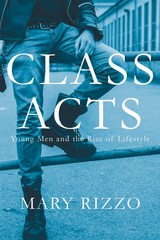 Class Acts: Young Men and the Rise of Lifestyle
Mary Rizzo
University of Nevada Press, 2015 Class Acts explores the development of lifestyle marketing from the 1960s to the 1990s. During this time, young men began manipulating their identities by taking on the mannerisms, culture, and fashion of the working class and poor. These style choices had contradictory meanings. At once they were acts of rebellion by middleclass young men against their social stratum and its rules of masculinity and also examples of the privilege that allowed them to try on different identities for amusement or as a rite of passage. Starting in the 1960s, advertisers and marketers, looking for new ways to appeal to young people, seized on the idea of identity as a choice, creating the field of lifestyle marketing.
Mary Rizzo traces the development of the concept of lifestyle marketing, showing how marketers disconnected class identity from material reality, focusing instead on a person’s attitudes, opinions, and behaviors. The book includes discussions of the rebel of the 1950s, the hippie of the 1960s, the white suburban hip-hop fan of the 1980s, and the poverty chic of the 1990s. Class Acts illuminates how the concept of “lifestyle,” particularly as expressed through fashion, has disconnected social class from its material reality and diffused social critique into the opportunity to simply buy another identity. The book will appeal to scholars and other readers who are interested in American cultural history, youth culture, fashion, and style.
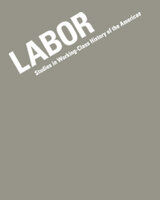 Class Analysis in Early America and the Atlantic World: Foundations and Future, Volume 1
Simon Middleton
Duke University Press Given the dissolution of the Soviet Union, the growing strength of global capitalism, the deindustrialization of wealthy nations, and new academic fashions, class relations are often considered an obsolete mode of historical analysis. Yet unprecedented levels of material inequality and class fragmentation continue to plague both the wealthier and the poorer parts of the world. Addressing this fundamental disconnect between contemporary historical scholarship and reality, Class Analysis in Early America and the Atlantic World, a special issue of Labor: Studies in Working-Class History of the Americas, offers a reevaluation of the potential and future of class analysis in scholarly work, particularly as it relates to increasing the understanding of the popular struggle in the early modern Atlantic world, a struggle that lies at the heart of many of today’s class-related dilemmas. Assembling essays written by three generations of labor historians, each with markedly different approaches to the labor histories of early America and the Atlantic world, this issue offers unique insights into the evolution of class analysis and its shifting place in the field of labor history. In one essay, a renowned member of the first generation of “new social historians” reflects on his work, considering the past and future of class analysis while highlighting some of his current views about class in early America. In other essays, a new generation of scholars enriches scholarship on early America and the Atlantic by incorporating complex and nuanced discussions of race and gender into traditional class analyses. Perhaps signaling the future of the field, another essay discusses the theoretical foundations and implications of a globalized mode of historical class analysis, examining the complicated connections among peoples in Europe, Africa, and North America during the seventeenth and eighteenth centuries and the impact these connections had in shaping early America and the Atlantic world.
Class and Community: The Industrial Revolution in Lynn, Twenty-fifth Anniversary Edition, with a New Preface
Alan Dawley
Harvard University Press, 2000 In this twenty-fifth anniversary edition of his prize-winning book, Dawley reflects once more on labor and class issues, poverty and progress, and the contours of urban history in the city of Lynn, Massachusetts, during the rise of industrialism in the early nineteenth century. He not only revisits this urban conglomeration, but also seeks out previously unheard groups such as women and blacks. The result is a more rounded portrait of a small eastern city on the verge of becoming modern.
Class and Conformity: A Study in Values
Melvin Kohn
University of Chicago Press, 1989 First published in 1969 and augmented by the author with a new essay in 1977, Class and Conformity remains a model of sociological craftsmanship. Kohn's work marshals evidence from three studies to show a decided connection between social class and values. He emphasizes that occupation fosters either self-direction or conformity in people, depending upon the amount of freedom from supervision, the complexity of the task, and the variety of work that the job entails. The extent of parents' self-direction on the job further determines the value placed on self-direction for their children; thus, Kohn finds, is the most critical and pervasive factor distinguishing children raised in different socioeconomic classes.
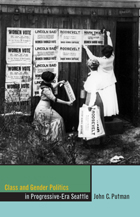 Class and Gender Politics in Progressive-Era Seattle
John C. Putman
University of Nevada Press, 2008 The dawn of the twentieth century saw enormous changes throughout the United States, reflecting technological advances, population growth, widespread industrialization, and the establishment of a national market economy. In the Far West, these changes, combined with the rapid westward expansion of advanced capitalism and the impact of national political and economic pressures, brought with them a period of political conflict, social upheavals, and labor struggles. They also helped westerners define themselves, their values, and their relationship to the rest of the nation. Seattle was one of the western cities that boomed during this period. By the end of the nineteenth century, the city was home to several powerful and influential labor organizations, as well as a vibrant middle-class feminist movement. In this turbulent interface of class, gender, politics, and sometimes race, residents struggled to cope with a changing social order and with differing and at times conflicting visions of what the West was supposed to be. In this book, historian John C. Putman expands our understanding of the roles that gender and class played in the construction of progressive politics. He also shows how regional differences--in this case, the unique environment of the Pacific Northwest--contributed to Seattle’s economic and political development. The feminist and militant leftwing labor movements of progressive-era Seattle and the volatile interactions between them represent much more than colorful events in the city's early history. Here, cross-class reformist coalitions between labor, radical forces, and women were central to the way residents made sense of their changing environment and defined both the way they saw themselves and the way others perceived them. Class and Gender Politics in Progressive-Era Seattle is an essential contribution to our understanding of the creation of the modern West and the development of regional identity and self-awareness.
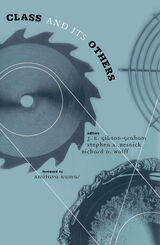 Class And Its Others
J. K. Gibson-Graham
University of Minnesota Press, 2000 A surprising and innovative look at class that proposes new approaches to this important topic While references to gender, race, and class are everywhere in social theory, class has not received the kind of theoretical and empirical attention accorded to gender and race. A welcome and much-needed corrective, this book offers a novel theoretical approach to class and an active practice of class analysis. The authors offer new and compelling ways to look at class through examinations of such topics as sex work, the experiences of African American women as domestic laborers, and blue- and white-collar workers. Their work acknowledges that individuals may participate in various class relations at one moment or over time and that class identities are multiple and changing, interacting with other aspects of identity in contingent and unpredictable ways. The essays in the book focus on class difference, class transformation and change, and on the intersection of class, race, gender, sexuality, and other dimensions of identity. They find class in seemingly unlikely places-in households, parent-child relationships, and self-employment-and locate class politics on the interpersonal level as well as at the level of enterprises, communities, and nations. Taken together, they will prompt a rethinking of class and class subjectivity that will expand social theory. Contributors: Enid Arvidson, U of Texas, Arlington; Jenny Cameron, Monash U, Australia; Harriet Fraad; Janet Hotch; Susan Jahoda, U of Massachusetts, Amherst; Amitava Kumar, U of Florida; Cecilia Marie Rio; Jacquelyn Southern; Marjolein van der Veen.
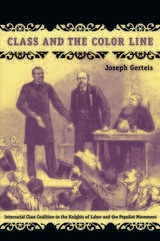 Class and the Color Line: Interracial Class Coalition in the Knights of Labor and the Populist Movement
Joseph Gerteis
Duke University Press, 2007 A lauded contribution to historical sociology, Class and the Color Line is an analysis of social-movement organizing across racial lines in the American South during the 1880s and the 1890s. The Knights of Labor and the Populists were the largest and most influential movements of their day, as well as the first to undertake large-scale organizing in the former Confederate states, where they attempted to recruit African Americans as fellow workers and voters. While scholars have long debated whether the Knights and the Populists were genuine in their efforts to cross the color line, Joseph Gerteis shifts attention from that question to those of how, where, and when the movements’ organizers drew racial boundaries. Arguing that the movements were simultaneously racially inclusive and exclusive, Gerteis explores the connections between race and the movements’ economic and political interests in their cultural claims and in the dynamics of local organizing. Interpreting data from the central journals of the Knights of Labor and the two major Populist organizations, the Farmers’ Alliance and the People’s Party, Gerteis explains how the movements made sense of the tangled connections between race, class, and republican citizenship. He considers how these collective narratives motivated action in specific contexts: in Richmond and Atlanta in the case of the Knights of Labor, and in Virginia and Georgia in that of the Populists. Gerteis demonstrates that the movements’ collective narratives galvanized interracial organizing to varying degrees in different settings. At the same time, he illuminates the ways that interracial organizing was enabled or constrained by local material, political, and social conditions.
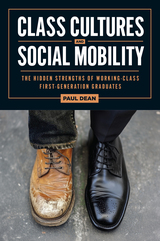 Class Cultures and Social Mobility: The Hidden Strengths of Working-Class First-Generation Graduates
Paul Dean
Rutgers University Press, 2026 When working-class first-generation students enter college or the professional workplace, they often find themselves immersed in entirely new worlds. They must learn the unwritten rules for how to speak, dress, behave, and interact with new peers and colleagues. While striving to fit in and do well, they risk feeling imposter syndrome, a loss of identity, or broken ties with friends and family. Class Cultures and Social Mobility tells the stories of upwardly mobile first-gen graduates who flipped the script and turned their working-class roots into a strength. This accessible and highly engaging book reveals how first-gen graduates overcame hardship while leveraging unique skills—their working-class cultural capital—in college and their professional careers. It demonstrates there needn’t be a choice between economic success and maintaining authenticity to one’s roots—we can balance the competing demands of the two class worlds together. Whether you're an educator, student, working professional, or advocate, this book provides a powerful way to reimagine the transformations that accompany class mobility.
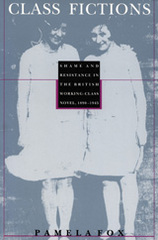 Class Fictions: Shame and Resistance in the British Working Class Novel, 1890–1945
Pamela Fox
Duke University Press, 1994 Many recent discussions of working-class culture in literary and cultural studies have tended to present an oversimplified view of resistance. In this groundbreaking work, Pamela Fox offers a far more complex theory of working-class identity, particularly as reflected in British novels of the late nineteenth and early twentieth centuries. Through the concept of class shame, she produces a model of working-class subjectivity that understands resistance in a more accurate and useful way—as a complicated kind of refusal, directed at both dominated and dominant culture.
With a focus on certain classics in the working-class literary "canon," such as The Ragged Trousered Philanthropists and Love on the Dole, as well as lesser-known texts by working-class women, Fox uncovers the anxieties that underlie representations of class and consciousness. Shame repeatedly emerges as a powerful counterforce in these works, continually unsettling the surface narrative of protest to reveal an ambivalent relation toward the working-class identities the novels apparently champion.
Class Fictions offers an equally rigorous analysis of cultural studies itself, which has historically sought to defend and value the radical difference of working-class culture. Fox also brings to her analysis a strong feminist perspective that devotes considerable attention to the often overlooked role of gender in working-class fiction. She demonstrates that working-class novels not only expose master narratives of middle-class culture that must be resisted, but that they also reveal to us a need to create counter narratives or formulas of working-class life. In doing so, this book provides a more subtle sense of the role of resistance in working class culture. While of interest to scholars of Victorian and working-class fiction, Pamela Fox’s argument has far-reaching implications for the way literary and cultural studies will be defined and practiced.
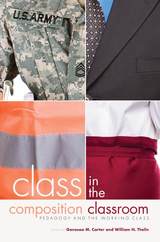 Class in the Composition Classroom: Pedagogy and the Working Class
Genesea M. Carter
Utah State University Press, 2017 Class in the Composition Classroom considers what college writing instructors should know about their working-class students—their backgrounds, experiences, identities, learning styles, and skills—in order to support them in the classroom, across campus, and beyond. In this volume, contributors explore the nuanced and complex meaning of “working class” and the particular values these college writers bring to the classroom. The real college experiences of veterans, rural Midwesterners, and trade unionists show that what it means to be working class is not obvious or easily definable. Resisting outdated characterizations of these students as underprepared and dispensing with a one-size-fits-all pedagogical approach, contributors address how region and education impact students, explore working-class pedagogy and the ways in which it can reify social class in teaching settings, and give voice to students’ lived experiences. As community colleges and universities seek more effective ways to serve working-class students, and as educators, parents, and politicians continue to emphasize the value of higher education for students of all financial and social backgrounds, conversations must take place among writing instructors and administrators about how best to serve and support working-class college writers. Class in the Composition Classroom will help writing instructors inside and outside the classroom prepare all their students for personal, academic, and professional communication. Contributors: Aaron Barlow, Cori Brewster, Patrick Corbett, Harry Denny, Cassandra Dulin, Miriam Eisenstein Ebsworth, Mike Edwards, Rebecca Fraser, Brett Griffiths, Anna Knutson, Liberty Kohn, Nancy Mack, Holly Middleton, Robert Mundy, Missy Nieveen Phegley, Jacqueline Preston, James E. Romesburg, Edie-Marie Roper, Aubrey Schiavone, Christie Toth, Gail G. Verdi
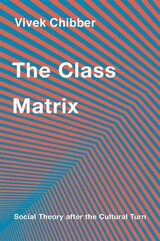 The Class Matrix: Social Theory after the Cultural Turn
Vivek Chibber
Harvard University Press, 2022 “A quite thorough and impressive work, not only a compelling defense of materialism but also a fair-minded if highly critical engagement with cultural theory. It isn’t clear how culturalists—especially the anti-Marxist ones—can effectively respond to this broadside, tightly and cogently argued as it is.”—Chris Wright, CounterPunch
“Chibber…has developed a sophisticated, elegant, and readable defense of the sociological significance of class structure in understanding and addressing the key problems inherent in capitalism.”—Choice
“[A] clear, compelling, and systematic statement of the view that class is an objective reality that predictably and rationally shapes human thought and action, one we need to grapple with seriously if we’re to comprehend contemporary society and its morbid symptoms.”—Jacobin
Following the collapse of the Soviet Union, theorists argued that social and economic life is reducible to culture—that our choices reflect interpretations of the world around us rather than the limitations imposed by basic material facts. Today, gross inequalities in wealth and power have pushed scholars to reopen materialist lines of inquiry. But it would be a mistake to pretend that the cultural turn never happened. Vivek Chibber instead engages cultural theory seriously, proposing a fusion of materialism and the most useful insights of its rival.
Chibber accommodates the main arguments from the cultural turn within a robust materialist framework, showing how one can agree that the making of meaning plays an important role in social agency while still recognizing the fundamental power of class structure and class formation. He vindicates classical materialism by demonstrating that it accounts for phenomena cultural theorists thought it was powerless to explain, while also showing that aspects of class are indeed centrally affected by cultural factors.
The Class Matrix does not seek to displace culture from the analysis of modern capitalism. Rather, in prose of exemplary clarity, Chibber gives culture its due alongside what Marx called “the dull compulsion of economic relations.”
Class Matters: Inequality and Exploitation in 21st-Century Britain
Charles Umney
Pluto Press, 2018 Despite many changes to society, education, and the labor market, social class remains a fundamental force in British life in the twenty-first century. Yet we have lacked any compelling Marxist analysis of class in Britain today—until now. Charles Umney here moves Marx from the mills and mines that drove his analysis in his era into our own, with its call centers, office blocks, and fast food chains. Showing how Marxist concepts remain powerfully explanatory, Umney argues that understanding them is vital to fights against pay inequality, decreasing job security, and managerial control of the labor process. Class, Umney shows, must be understood as a dynamic and exploitative process integral to capitalism, rather than as a simple descriptive category, if we are going to better understand why capital continues to gain at the expense of labor.
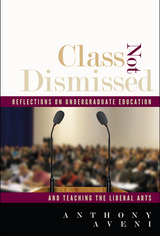 Class Not Dismissed: Reflections on Undergraduate Education and Teaching the Liberal Arts
Anthony Aveni
University Press of Colorado, 2014 In Class Not Dismissed, award-winning professor Anthony Aveni tells the personal story of his six decades in college classrooms and some of the 10,000 students who have filled them. Through anecdotes of his own triumphs and tribulations—some amusing, others heartrending—Aveni reveals his teaching story and thoughts on the future of higher education. Although in recent years the lecture has come under fire as a pedagogical method, Aveni ardently defends lecturing to students. He shares his secrets on crafting an engaging lecture and creating productive dialogue in class discussions. He lays out his rules on classroom discipline and tells how he promotes the lost art of listening. He is a passionate proponent of the liberal arts and core course requirements as well as a believer in sound teaching promoted by active scholarship. Aveni is known to his students as a consummate storyteller. In Class Not Dismissed he shares real stories about everyday college life that shed light on serious educational issues. The result is a humorous, reflective, inviting, and powerful inquiry into higher education that will be of interest to anyone invested in the current and future state of college and university education.
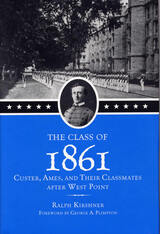 The Class of 1861: Custer, Ames, and Their Classmates after West Point
Ralph Kirshner
Southern Illinois University Press, 1999
Ralph Kirshner has provided a richly illustrated forum to enable the West Point class of 1861 to write its own autobiography. Through letters, journals, and published accounts, George Armstrong Custer, Adelbert Ames, and their classmates tell in their own words of their Civil War battles and of their varied careers after the war.
Two classes graduated from West Point in 1861 because of Lincoln's need of lieutenants: forty-five cadets in Ames's class in May and thirty-four in Custer's class in June. The cadets range from Henry Algernon du Pont, first in the class of May, whose ancestral home is now Winterthur Garden, to Custer, last in the class of June. “Only thirty-four graduated,” remarked Custer, “and of these thirty-three graduated above me.” West Point's mathematics professor and librarian Oliver Otis Howard, after whom Howard University is named, is also portrayed.
Other famous names from the class of 1861 are John Pelham, Emory Upton, Thomas L. Rosser, John Herbert Kelly (the youngest general in the Confederacy when appointed), Patrick O'Rorke (head of the class of June), Alonzo Cushing, Peter Hains, Edmund Kirby, John Adair (the only deserter in the class), and Judson Kilpatrick (great-grandfather of Gloria Vanderbilt). They describe West Point before the Civil War, the war years, including the Vicksburg campaign and the battle of Gettysburg, the courage and character of classmates, and the ending of the war.
Kirshner also highlights postwar lives, including Custer at Little Bighorn; Custer's rebel friend Rosser; John Whitney Barlow, who explored Yellowstone; du Pont, senator and author; Kilpatrick, playwright and diplomat; Orville E. Babcock, Grant's secretary until his indictment in the "Whiskey Ring"; Pierce M. B. Young, a Confederate general who became a diplomat; Hains, the only member of the class to serve on active duty in World War I; and Upton, "the class genius."
The Class of 1861, which features eighty-three photographs, includes a foreword by George Plimpton, editor of theParis Review and great-grandson of General Adelbert Ames.
 Class Of '66: Living in Suburban Middle America
Paul Lyons
Temple University Press, 1994 In the midst of the Vietnam war, sit-ins, counter-culture, and campus rallies, the 1966 graduating class of a South New Jersey coast high school came of age on the margins of political and cultural upheaval. Rather than presenting the stereotype of Sixties youth scene, this study reveals this group to be conservative teenagers shaped by mainstream loyalties to God, Country, and Family. These "Coasters"—white, middle-class, suburban baby-boomers—were spectators of rather than participants in the decade's activism. Yet, even as they were missed by the powerful currents of the times, their lives were touched by those currents more than is suggested by the stereotype of Richard Nixon's "Silent Majority."
Paul Lyons interviewed 47 members of the class of 1966, recording recollections of their school days, politics, work, family life, community, and expectations for future careers and family. Each chapter is complemented by personal profiles of individual "Coasters." Removed from both the urban experience and that of the elite suburbs, these teenagers disprove popular cultural assumptions that all baby boomers, with few exceptions, went to Woodstock, protested against the Vietnam War, engaged in drug experimentation, or joined the hippie counter-culture. Instead, Lyons' study explores how their then relative ambivalence to political and cultural rebellion did not preclude many "Coasters" from indirectly incorporating over the years certain core Sixties values on issues of race, gender, mobility, and patriotism.
 A Class of Their Own: Black Teachers in the Segregated South
Adam Fairclough
Harvard University Press, 2007 In this major undertaking, civil rights historian Adam Fairclough chronicles the odyssey of black teachers in the South from emancipation in 1865 to integration one hundred years later. No book until now has provided us with the full story of what African American teachers tried, achieved, and failed to do in educating the Southern black population over this critical century.
This magisterial narrative offers a bold new vision of black teachers, built from the stories of real men and women, from teachers in one-room shacks to professors in red brick universities. Fairclough explores how teachers inspired and motivated generations of children, instilling values and knowledge that nourished racial pride and a desire for equality. At the same time, he shows that they were not just educators, but also missionaries, politicians, community leaders, and racial diplomats. Black teachers had to negotiate constantly between the white authorities who held the purse strings and the black community’s grassroots resistance to segregated standards and white power. Teachers were part of, but also apart from, the larger black population. Often ignored, and occasionally lambasted, by both whites and blacks, teachers were tireless foot soldiers in the long civil rights struggle.
Despite impossible odds—discrimination, neglect, sometimes violence—black teachers engaged in a persistent and ultimately heroic struggle to make education a means of liberation. A Class of Their Own is indispensable for understanding how blacks and whites interacted and coexisted after the abolition of slavery, and how black communities developed and coped with the challenges of freedom and oppression.
 Class Size in High School English, Methods and Results
Dora V. Smith
University of Minnesota Press, 1931
Class Size in High School English, Methods and Results was first published in 1931. Minnesota Archive Editions uses digital technology to make long-unavailable books once again accessible, and are published unaltered from the original University of Minnesota Press editions.
More than half this book consists of concrete description of methods found useful in teaching classes of fifty or more pupils in ninth grade English. Subjects dealt with include the care of individual differences, assignment and motivation of work, stimulating pupil participation, insuring activity and variety in class work, and arranging for individual and group competition. Dr. Smith shows how different methods may be adapted to classes of different sizes, and also presents new data on relative opportunity and relative achievement of pupils in large and small classes, relative attitudes and character traits revealed by pupils, and comparative strain on the teacher in the different types of classes. The volume includes a complete account of all class size studies that appeared up to the middle of 1930, also analysis of trends in class size in high schools as revealed through published reports and through the hitherto unpublished study made by Dr. Earl Hudelson in 1929. Dr. Smith is specialist in secondary school English under the National Survey of Secondary Education.
"It is rich in suggestion of methods of teaching to be used with large and small classes in English, and, by inference, in other fields of instruction," –Leonard V. Koos, University of Chicago."Very useful and carefully work out techniques for handling large classes," –Allan Abbott, Teachers College, Columbia University.
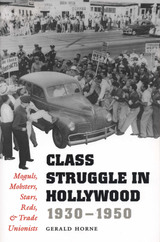 Class Struggle in Hollywood, 1930-1950: Moguls, Mobsters, Stars, Reds, and Trade Unionists
By Gerald Horne
University of Texas Press, 2001 As World War II wound down in 1945 and the cold war heated up, the skilled trades that made up the Conference of Studio Unions (CSU) began a tumultuous strike at the major Hollywood studios. This turmoil escalated further when the studios retaliated by locking out CSU in 1946. This labor unrest unleashed a fury of Red-baiting that allowed studio moguls to crush the union and seize control of the production process, with far-reaching consequences. This engrossing book probes the motives and actions of all the players to reveal the full story of the CSU strike and the resulting lockout of 1946. Gerald Horne draws extensively on primary materials and oral histories to document how limited a "threat" the Communist party actually posed in Hollywood, even as studio moguls successfully used the Red scare to undermine union clout, prevent film stars from supporting labor, and prove the moguls' own patriotism. Horne also discloses that, unnoticed amid the turmoil, organized crime entrenched itself in management and labor, gaining considerable control over both the "product" and the profits of Hollywood. This research demonstrates that the CSU strike and lockout were a pivotal moment in Hollywood history, with consequences for everything from production values, to the kinds of stories told in films, to permanent shifts in the centers of power.
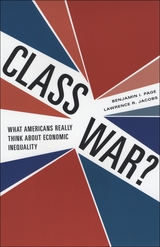 Class War?: What Americans Really Think about Economic Inequality
Benjamin I. Page and Lawrence R. Jacobs
University of Chicago Press, 2009 Recent battles in Washington over how to fix America’s fiscal failures strengthened the widespread impression that economic issues sharply divide average citizens. Indeed, many commentators split Americans into two opposing groups: uncompromising supporters of unfettered free markets and advocates for government solutions to economic problems. But such dichotomies, Benjamin Page and Lawrence Jacobs contend, ring false. In Class War? they present compelling evidence that most Americans favor free enterprise and practical government programs to distribute wealth more equitably. At every income level and in both major political parties, majorities embrace conservative egalitarianism—a philosophy that prizes individualism and self-reliance as well as public intervention to help Americans pursue these ideals on a level playing field. Drawing on hundreds of opinion studies spanning more than seventy years, including a new comprehensive survey, Page and Jacobs reveal that this worldview translates to broad support for policies aimed at narrowing the gap between rich and poor and creating genuine opportunity for all. They find, for example, that across economic, geographical, and ideological lines, most Americans support higher minimum wages, improved public education, wider access to universal health insurance coverage, and the use of tax dollars to fund these programs. In this surprising and heartening assessment, Page and Jacobs provide our new administration with a popular mandate to combat the economic inequity that plagues our nation.
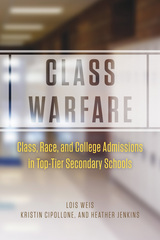 Class Warfare: Class, Race, and College Admissions in Top-Tier Secondary Schools
Lois Weis, Kristin Cipollone, and Heather Jenkins
University of Chicago Press, 2014 Stories abound about the lengths to which middle- and upper-middle-class parents will go to ensure a spot for their child at a prestigious university. From the Suzuki method to calculus-based physics, from AP tests all the way back to early-learning Kumon courses, students are increasingly pushed to excel with that Harvard or Yale acceptance letter held tantalizingly in front of them. And nowhere is this drive more apparent than in our elite secondary schools. In Class Warfare, Lois Weis, Kristin Cipollone, and Heather Jenkins go inside the ivy-yearning halls of three such schools to offer a day-to-day, week-by-week look at this remarkable drive toward college admissions and one of its most salient purposes: to determine class.
Drawing on deep and sustained contact with students, parents, teachers, and administrators at three iconic secondary schools in the United States, the authors unveil a formidable process of class positioning at the heart of the college admissions process. They detail the ways students and parents exploit every opportunity and employ every bit of cultural, social, and economic capital they can in order to gain admission into a “Most Competitive” or “Highly Competitive Plus” university. Moreover, they show how admissions into these schools—with their attendant rankings—are used to lock in or improve class standing for the next generation. It’s a story of class warfare within a given class, the substrata of which—whether economically, racially, or socially determined—are fiercely negotiated through the college admissions process.
In a historic moment marked by deep economic uncertainty, anxieties over socioeconomic standing are at their highest. Class, as this book shows, must be won, and the collateral damage of this aggressive pursuit may just be education itself, flattened into a mere victory banner.
Classic Concepts in Anthropology
Valerio Valeri
HAU, 2018 The late anthropologist Valerio Valeri (1944–98) was best known for his substantial writings on societies of Polynesia and eastern Indonesia. This volume, however, presents a lesser-known side of Valeri’s genius through a dazzlingly erudite set of comparative essays on core topics in the history of anthropological theory. Offering masterly discussions of anthropological thought about ritual, fetishism, cosmogonic myth, belief, caste, kingship, mourning, play, feasting, ceremony, and cultural relativism, Classic Concepts in Anthropology, will be an eye-opening, essential resource for students and researchers not only in anthropology but throughout the humanities.
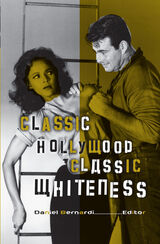 Classic Hollywood, Classic Whiteness
Daniel Bernardi
University of Minnesota Press, 2001 Leading scholars address the myriad ways in which America’s attitudes about race informed the production of Hollywood films from the 1920s through the 1960s. From the predominantly white star system to segregated mise-en-scènes, Hollywood films reinforced institutionalized racism. The contributors to this volume examine how assumptions about white superiority and colored inferiority and the politics of segregation and assimilation affected Hollywood’s classic period. Contributors: Eric Avila, UCLA; Aaron Baker, Arizona State U; Karla Rae Fuller, Columbia College; Andrew Gordon, U of Florida; Allison Graham, U of Memphis; Joanne Hershfield, U of North Carolina; Cindy Hing-Yuk Wond, College of Staten Island, CUNY; Arthur Knight, William and Mary; Sarah Madsen Hardy, Bryn Mawr; Gina Marchetti, U of Maryland; Gary W. McDonogh; Chandra Mukerji, UC, San Diego; Martin F. Norden, U of Massachusetts; Brian O'Neil, U of Southern Mississippi; Roberta E. Pearson, Cardiff U; Marguerite H. Rippy, Marymount U; Nicholas Sammond; Beretta E. Smith-Shomade, U of Arizona; Peter Stanfield, Southampton Institute; Kelly Thomas; Hernan Vera, U of Florida; Karen Wallace, U of Wisconsin, Oshkosh; Thomas E. Wartenberg, Mount Holyoke; Geoffrey M. White, U of Hawai’i; and Jane Yi.
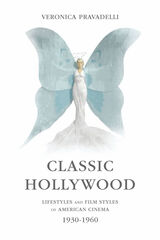 Classic Hollywood: Lifestyles and Film Styles of American Cinema, 1930-1960
Veronica Pravadelli
University of Illinois Press, 2015 Studies of "Classic Hollywood" typically treat Hollywood films released from 1930 to 1960 as a single interpretive mass. Veronica Pravadelli complicates this idea. Focusing on dominant tendencies in box office hits and Oscar-recognized classics, she breaks down the so-called classic period into six distinct phases that follow Hollywood's amazingly diverse offerings from the emancipated females of the "Transition Era" and the traditional men and women of the conservative 1930s that replaced it to the fantastical Fifties movie musicals that arose after anti-classic genres like film noir and women's films.
Pravadelli sets her analysis apart by paying particular attention to the gendered desires and identities exemplified in the films. Availing herself of the significant advances in film theory and modernity studies that have taken place since similar surveys first saw publication, she views Hollywood through strategies as varied as close textural analysis, feminism, psychoanalysis, film style and study of cinematic imagery, revealing the inconsistencies and antithetical traits lurking beneath Classic Hollywood's supposed transparency.
Classic Maya Place Names
Edited by David Stuart and Stephen D. Houston
Harvard University Press, 1994 The authors present evidence that specific place names do exist in Maya inscriptions, and show that identifying these names sheds considerable light on both past and present questions about the Maya.
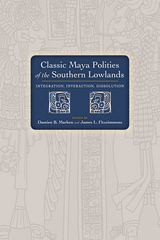 Classic Maya Polities of the Southern Lowlands: Integration, Interaction, Dissolution
Damien B. Marken
University Press of Colorado, 2015 Classic Maya Polities of the Southern Lowlands investigates Maya political and social structure in the southern lowlands, assessing, comparing, and interpreting the wide variation in Classic period Maya polity and city composition, development, and integration. Traditionally, discussions of Classic Maya political organization have been dominated by the debate over whether Maya polities were centralized or decentralized. With new, largely unpublished data from several recent archaeological projects, this book examines the premises, strengths, and weaknesses of these two perspectives before moving beyond this long-standing debate and into different territory. The volume examines the articulations of the various social and spatial components of Maya polity—the relationships, strategies, and practices that bound households, communities, institutions, and dynasties into enduring (or short-lived) political entities. By emphasizing the internal negotiation of polity, the contributions provide an important foundation for a more holistic understanding of how political organization functioned in the Classic period.
Contributors include Francisco Estrada Belli, James L. Fitzsimmons, Sarah E. Jackson, Caleb Kestle, Brigitte Kovacevich, Allan Maca, Damien B. Marken, James Meierhoff, Timothy Murtha, Cynthia Robin, Alexandre Tokovinine, and Andrew Wyatt.
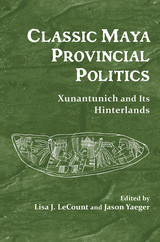 Classic Maya Provincial Politics: Xunantunich and Its Hinterlands
Edited by Lisa J. LeCount and Jason Yaeger
University of Arizona Press, 2010 Most treatments of large Classic Maya sites such as Caracol and Tikal regard Maya political organization as highly centralized. Because investigations have focused on civic buildings and elite palaces, however, a critical part of the picture of Classic Maya political organization has been missing.
The contributors to this volume chart the rise and fall of the Classic Maya center of Xunantunich, paying special attention to its changing relationships with the communities that comprised its hinterlands. They examine how the changing relationships between Xunantunich and the larger kingdom of Naranjo affected the local population, the location of their farms and houses, and the range of economic and subsistence activities in which both elites and commoners engaged. They also examine the ways common people seized opportunities and met challenges offered by a changing political landscape.
The rich archaeological data in this book show that incorporating subject communities and people—and keeping them incorporated—was an on-going challenge to ancient Maya rulers. Until now, archaeologists have lacked integrated regional data and a fine-grained chronology in which to document short-term shifts in site occupations, subsistence strategies, and other important practices of the daily life of the Maya. This book provides a revised picture of Maya politics—one of different ways of governing and alliance formation among dominant centers, provincial polities, and hinterland communities.
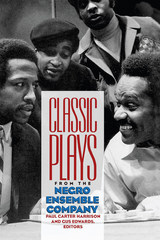 Classic Plays from the Negro Ensemble Company
Harrison/Edwards
University of Pittsburgh Press, 1995
This anthology celebrates more than twenty-five years of the Negro Ensemble Company’s significant contribution to American theater. Collected here are ten plays most representative of the eclectic nature of the Negro Ensemble Company repertoire.
The Negro Ensemble Company (NEC) was formed in New York City in 1967 with support from the Ford Foundation to aid in the establishment of an independent African-American theater institution. Under the artistic directorship of Douglas Turner Ward, the NEC offered a nurturing environment to black playwrights and actors who could work autonomously, guaranteeing authenticity of voice, full freedom of expression, and exploration of thematic views specific to the African-American experience.
Since its inception, the NEC has introduced audiences to more than 150 theatrical works. <I>Classic Plays from the Negro Ensemble Company</I> allows scholars to review a diversity of styles which share common philosophical, mythic, and social ideals that can be traced to an African worldview. A foreword by Douglas Turner Ward and an afterword by Paul Carter Harrison and Gus Edwards assess the literary and/or stylistic significance of the plays and place each work in its historical or chronological context.
Classic Readings on Monster Theory
Asa Simon Mittman
Arc Humanities Press, 2018 Companion volumes <i>Classic Readings on Monster Theory</i> and <i>Primary Sources on Monsters</i> gather a wide range of readings and sources to enable us to see and understand what monsters can show us about what it means to be human. The first volume introduces important modern theorists of the monstrous and aims to provide interpretive tools and strategies for students to use to grapple with the primary sources in the second volume, which brings together some of the most influential and indicative monster narratives from the West.
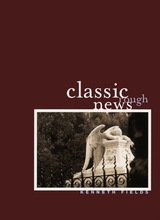 Classic Rough News
Kenneth Fields
University of Chicago Press, 2005 With a half-dozen books of poetry published to date, Kenneth Fields distills some forty years of teaching and writing about poetry into Classic Rough News, a collection of fresh sonnets and sonnet-like lyrics that attests to both Fields's skills as a writer and the inexhaustible possibilities of the form.
Classic Rough News follows a skeptical, cosmopolitan, intelligent, poetic presence aware that its carefully constructed veneer could crumble at any moment. In poems that mine interior dialogue for the discovery of great truths, Fields conveys feelings of awkwardness, incompleteness, conflict, and insanity-all in finely crafted verse. Ironic and skeptical, the voice in these poems records the flux of the mind, ruefully acknowledging how easy it is to deceive oneself with mixed emotions. Fully mature and unconcerned about impressions, Classic Rough News is grounded in erudition and humor, revealing how tradition and talent can push one another in unexpected directions.
 Classical American Pragmatism: ITS CONTEMPORARY VITALITY
Edited by Sandra B. Rosenthal, Carl R. Hausman, and Douglas R. Anderson
University of Illinois Press, 1999 This collection provides a thorough grounding in the philosophy of American pragmatism by examining the views of four principal thinkers—Charles S. Peirce, William James, John Dewey, and George Herbert Mead—on issues of central and enduring importance to life in human society.
Pragmatism emerged as a characteristically American response to an inheritance of British empiricism.
Presenting a radical reconception of the nature of experience, pragmatism represents a belief that ideas are not merely to be contemplated but must be put into action, tested and refined through experience. At the same time, the American pragmatists argued for an emphasis on human community that would offset the deep-seated American bias in favor of individualism. Far from being a relic of the past, pragmatism offers a dynamic and substantive approach to questions of human conduct, social values, scientific inquiry, religious belief, and aesthetic experience that lie at the center of contemporary life. This volume is an invaluable introduction to a school of thought that remains vital, instructive, and provocative.
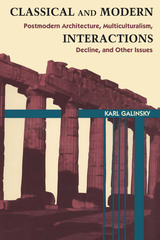 Classical and Modern Interactions: Postmodern Architecture, Multiculturalism, Decline, and Other Issues
By Karl Galinsky
University of Texas Press, 1992 Postmodernism, multiculturalism, the alleged decline of the United States, deconstruction, leadership, and values—these topics have been at the forefront of contemporary intellectual and cultural debate and are likely to remain so for the near future. Participants in the debate can usefully enlarge the perspective to a comparison between the Greco-Roman world and contemporary society. In this thought-provoking work, a noted classics scholar tests the ancient-modern comparison, showing what it can add to the contemporary debates and what its limitations are. Writing for intellectually adventurous readers, Galinsky explores Greece and Rome as multicultural societies, debates the merits of classicism in postmodern architecture, discusses the reign of Augustus in terms of modern leadership theories, and investigates the modern obsession with finding parallels between the supposed "decline and fall" of Rome and the "decay" of U.S. society. Within these discussions, Galinsky shows the continuing vitality of the classical tradition in the contemporary world. The Greek and Roman civilizations have provided us not only with models for conscious adaptation but also points for radical departures. This ability to change and innovate from classical models is crucial, Galinsky maintains. It creates a reciprocal process whereby contemporary issues are projected into the past while aspects of the ancient world are redefined in terms of current approaches. These essays result in a balanced assessment and stimulating restatement of some major issues in both contemporary U.S. society and the Greco-Roman world. The book, which speaks to a wide interdisciplinary audience, is based on a series of lectures that Galinsky gave as a national visiting scholar for Phi Beta Kappa. It concludes with a discussion of the role of classical studies in the United States today.
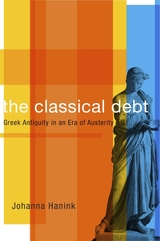 The Classical Debt: Greek Antiquity in an Era of Austerity
Johanna Hanink
Harvard University Press, 2017 Ever since the International Monetary Fund’s first bailout of Greece’s sinking economy in 2010, the phrase “Greek debt” has meant one thing to the country’s creditors. But for millions who claim to prize culture over capital, it means something quite different: the symbolic debt that Western civilization owes to Greece for furnishing its principles of democracy, philosophy, mathematics, and fine art. Where did this other idea of Greek debt come from, Johanna Hanink asks, and why does it remain so compelling today?
The Classical Debt investigates our abiding desire to view Greece through the lens of the ancient past. Though classical Athens was in reality a slave-owning imperial power, the city-state of Socrates and Pericles is still widely seen as a utopia of wisdom, justice, and beauty—an idealization that the ancient Athenians themselves assiduously cultivated. Greece’s allure as a travel destination dates back centuries, and Hanink examines many historical accounts that express disappointment with a Greek people who fail to live up to modern fantasies of the ancient past. More than any other movement, the spread of European philhellenism in the eighteenth and nineteenth centuries carved idealized conceptions of Greece in marble, reinforcing the Western habit of comparing the Greece that is with the Greece that once was.
Today, as the European Union teeters and neighboring nations are convulsed by political unrest and civil war, Greece finds itself burdened by economic hardship and an unprecedented refugee crisis. Our idealized image of ancient Greece dangerously shapes how we view these contemporary European problems.
Classical Epic Tradition
John Kevin Newman
University of Wisconsin Press, 1986 The literary epic and critical theories about the epic tradition are traced from Aristotle and Callimachus through Apollonius, Virgil, and their successors such as Chaucer and Milton to Eisenstein, Tolstoy, and Thomas Mann. Newman's revisionist critique will challenge all scholars, students, and general readers of the classics, comparative literature, and western literary traditions.
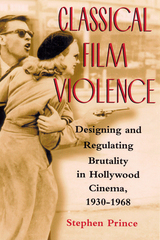 Classical Film Violence: Designing and Regulating Brutality in Hollywood Cinema, 1930-1968
Prince, Stephen
Rutgers University Press, 2003 Stephen Prince has written the first book to examine the interplay between the aesthetics and the censorship of violence in classic Hollywood films from 1930 to 1968, the era of the Production Code, when filmmakers were required to have their scripts approved before they could start production. He explains how Hollywood's filmmakers designed violence in response to the regulations of the Production Code and regional censors. Graphic violence in today's movies actually has its roots in these early films. Hollywood's filmmakers were drawn to violent scenes and "pushed the envelope" of what they could depict by manipulating the Production Code Administration (PCA).
Prince shows that many choices about camera position, editing, and blocking of the action and sound were functional responses by filmmakers to regulatory constraints, necessary for approval from the PCA and then in surviving scrutiny by state and municipal censor boards.
This book is the first stylistic history of American screen violence that is grounded in industry documentation. Using PCA files, Prince traces the negotiations over violence carried out by filmmakers and officials and shows how the outcome left its traces on picture and sound in the films.
Almost everything revealed by this research is contrary to what most have believed about Hollywood and film violence. With chapters such as "Throwing the Extra Punch" and "Cruelty, Sadism, and the Horror Film," this book will become the defining work on classical film violence and its connection to the graphic mayhem of today's movies.
The Classical Gardens of Shanghai
Shelly Bryant
Hong Kong University Press, 2016 In The Classical Gardens of Shanghai, Shelly Bryant looks at five of Shanghai’s remaining classical gardens through their origins, changing fortunes, restorations, and links to a wider Chinese aesthetic. Shanghai’s classical gardens are as much text as space; they exist in art, poetry, and literature as much as in stone, rock, and earth. But these gardens have not remained static entities. Rather, they have been remodelled constantly since their inception. This book reflects this process within the constancy of traditional Chinese horticulture and reveals Shanghai’s remaining classical gardens as places representing wealth and social status, social and dynastic shifts, through falling family fortunes and political revolutions to search for a recovery of China’s ancient culture in the modern day.
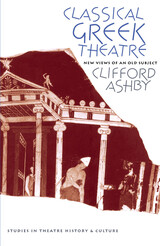 Classical Greek Theatre: New Views of an Old Subject
Clifford Ashby
University of Iowa Press, 1998 Many dogmas regarding Greek theatre were established by researchers who lacked experience in the mounting of theatrical productions. In his wide-ranging and provocative study, Clifford Ashby, a theatre historian trained in the practical processes of play production as well as the methods of historical research, takes advantage of his understanding of technical elements to approach his ancient subject from a new perspective. In doing so he challenges many long-held views. Archaeological and written sources relating to Greek classical theatre are diverse, scattered, and disconnected. Ashby's own (and memorable) fieldwork led him to more than one hundred theatre sites in Greece, southern Italy, Sicily, and Albania and as far into modern Turkey as Hellenic civilization had penetrated. From this extensive research, he draws a number of novel revisionist conclusions on the nature of classical theatre architecture and production. The original orchestra shape, for example, was a rectangle or trapezoid rather than a circle. The altar sat along the edge of the orchestra, not at its middle. The scene house was originally designed for a performance event that did not use an up center door. The crane and ekkyklema were simple devices, while the periaktoi probably did not exist before the Renaissance. Greek theatres were not built with attention to Vitruvius' injunction against a southern orientation and were probably sun-sited on the basis of seasonal touring. The Greeks arrived at the theatre around mid-morning, not in the cold light of dawn. Only the three-actor rule emerges from this eclectic examination somewhat intact, but with the division of roles reconsidered upon the basis of the actors' performance needs. Ashby also proposes methods that can be employed in future studies of Greek theatre. Final chapters examine the three-actor production of Ion, how one should not approach theatre history, and a shining example of how one should. Ashby's lengthy hands-on training and his knowledge of theatre history provide a broad understanding of the ways that theatre has operated through the ages as well as an ability to extrapolate from production techniques of other times and places.
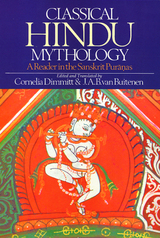 Classical Hindu Mythology: A Reader in the Sanskrit Puranas
Cornelia Dimmitt
Temple University Press, 1978 The Mahapuranas embody the received tradition of Hindu mythology. This anthology contains fresh translations of these myths, only a few of which have ever been available in English before, thus providing a rich new portion of Hindu mythology. The book is organized into six chapters. "Origins" contains myths relating to creation, time, and space. "Seers, Kings and Supernaturals" relates tales of rivers, trees, animals, demons, and men, particularly heroes and sages. Myths about the chief gods are dealt with in three separate chapters: "Krsna," "Visnu," and "Siva." The chapter "The Goddess" presents stories of the wives and lovers of the gods, as well as of Kali, the savage battle goddess. In their introductions, the editors provide a historical setting in which to discuss Hindu mythology as well as a full analysis of its basic sources. The many names given the gods and goddesses in the Sanskrit texts have been retained since their multiplicity is an essential part of the richness of the original. The editors have provided a thorough glossary to make these names accessible.
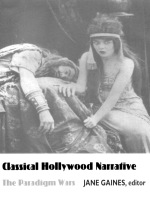 Classical Hollywood Narrative: The Paradigm Wars
Jane Gaines, ed.
Duke University Press, 1992 Since the 1970s film studies has been dominated by a basic paradigm—the concept of classical Hollywood cinema—that is, the protagonist-driven narrative, valued for the way it achieves closure by neatly answering all of the enigmas it raises. It has been held to be a form so powerful that its aesthetic devices reinforce gender positions in society. In a variety of ways, the essays collected here—representing the work of some of the most innovative theorists writing today—challenge this paradigm.
Significantly expanded from a special issue of South Atlantic Quarterly (Spring 1989), these essays confront the extent to which formalism has continued to dominate film theory, reexamine the role of melodrama in cinematic development, revise notions of "patriarchal cinema," and assert the importance of television and video to cinema studies. A range of topics are discussed, from the films of D. W. Griffith to sexuality in avant-garde film to television's Dynasty.
Contributors. Rick Altman, Richard Dienst, Jane Feuer, Jane Gaines, Christine Gledhill, Miriam Hansen, Norman N. Holland, Fredric Jameson, Bill Nichols, Janey Staiger, Chris Straayer, John O. Thompson
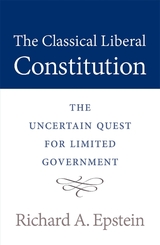 The Classical Liberal Constitution: The Uncertain Quest for Limited Government
Richard A. Epstein
Harvard University Press, 2013 American liberals and conservatives alike take for granted a progressive view of the Constitution that took root in the early twentieth century. Richard Epstein laments this complacency which, he believes, explains America’s current economic malaise and political gridlock. Steering clear of well-worn debates between defenders of originalism and proponents of a living Constitution, Epstein employs close textual reading, historical analysis, and political and economic theory to urge a return to the classical liberal theory of governance that animated the framers’ original text, and to the limited government this theory supports.
“[An] important and learned book.”
—Gary L. McDowell, Times Literary Supplement
“Epstein has now produced a full-scale and full-throated defense of his unusual vision of the Constitution. This book is his magnum opus…Much of his book consists of comprehensive and exceptionally detailed accounts of how constitutional provisions ought to be understood…All of Epstein’s particular discussions are instructive, and most of them are provocative…Epstein has written a passionate, learned, and committed book.”
—Cass R. Sunstein, New Republic
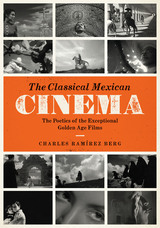 The Classical Mexican Cinema: The Poetics of the Exceptional Golden Age Films
By Charles Ramírez Berg
University of Texas Press, 2015 From the mid-1930s to the late 1950s, Mexican cinema became the most successful Latin American cinema and the leading Spanish-language film industry in the world. Many Cine de Oro (Golden Age cinema) films adhered to the dominant Hollywood model, but a small yet formidable filmmaking faction rejected Hollywood’s paradigm outright. Directors Fernando de Fuentes, Emilio Fernández, Luis Buñuel, Juan Bustillo Oro, Adolfo Best Maugard, and Julio Bracho sought to create a unique national cinema that, through the stories it told and the ways it told them, was wholly Mexican. The Classical Mexican Cinema traces the emergence and evolution of this Mexican cinematic aesthetic, a distinctive film form designed to express lo mexicano. Charles Ramírez Berg begins by locating the classical style’s pre-cinematic roots in the work of popular Mexican artist José Guadalupe Posada at the turn of the twentieth century. He also looks at the dawning of Mexican classicism in the poetics of Enrique Rosas’ El Automóvil Gris, the crowning achievement of Mexico’s silent filmmaking era and the film that set the stage for the Golden Age films. Berg then analyzes mature examples of classical Mexican filmmaking by the predominant Golden Age auteurs of three successive decades. Drawing on neoformalism and neoauteurism within a cultural studies framework, he brilliantly reveals how the poetics of Classical Mexican Cinema deviated from the formal norms of the Golden Age to express a uniquely Mexican sensibility thematically, stylistically, and ideologically.
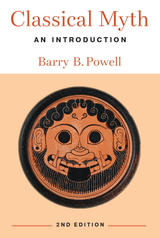 Classical Myth: An Introduction
Barry B. Powell
University of Michigan Press, 2024 Myths are not just the stories from the ancient Greeks and Romans—they represent deep truths from the essential concerns people face in their lives. Readers may already have heard of the Trojan Horse or how Oedipus married his own mother, but why have these stories lingered?
In Classical Myth: An Introduction, Barry B. Powell provides the historical and theoretical background necessary for us to understand not only the concept of what a myth is, but the cultural context of how it emerged, and the different approaches to interpreting myth that were put forward by ancient theorists and their more recent successors. Then he helps readers to understand classical myth as it is found in its primary sources: the works of Homer and Hesiod, and the Greek tragedians and historians, Ovid and Vergil. By examining a number of prominent themes in classical myth, this textbook explores the relationship between myth and art, politics, society, and history of the ancient world. This completely revised second edition features new illustrations and will help readers who want to understand myths or study their original sources.
 Classical Nashville: Athens of the South
Christine M. Kreyling
Vanderbilt University Press, 1996 On the occasion of Tennessee's Bicentennial, four distinguished authors offer new insights and a broader appreciation of the classical influences that have shaped the architectural, cultural, and educational history of its capital city. Nashville has been many things: frontier town, Civil War battleground, New South mecca, and Music City, U.S.A. It is headquarters for several religious denominations, and also the home of some of the largest insurance, healthcare, and publishing concerns in the country. Located culturally as well as geographically between North and South, East and West, Nashville is centered in a web of often-competing contradictions. One binding image of civic identity, however, has been consistent through all of Nashville's history: the classical Greek and Roman ideals of education, art, and community participation that early on led to the city's sobriquet, "Athens of the West," and eventually, with the settling of the territory beyond the Mississippi River, the "Athens of the South." Illustrated with nearly a hundred archival and contemporary photographs, Classical Nashville shows how Nashville earned that appellation through its adoption of classical metaphors in several areas: its educational and literary history, from the first academies through the establishment of the Fugitive movement at Vanderbilt; the classicism of the city's public architecture, including its Capitol and legislative buildings; the evolution of neoclassicism in homes and private buildings; and the history and current state of the Parthenon, the ultimate symbol of classical Nashville, replete with the awe-inspiring 42-foot statue of Athena by sculptor Alan LeQuire. Perhaps Nashville author John Egerton best captures the essence of this modern city with its solid roots in the past. He places Nashville "somewhere between the 'Athens of the West' and 'Music City, U.S.A.,' between the grime of a railroad town and the glitz of Opryland, between Robert Penn Warren and Robert Altman." Nashville's classical identifications have always been forward-looking, rather than antiquarian: ambitious, democratic, entrepreneurial, and culturally substantive. Classical Nashville celebrates the continuation of classical ideals in present-day Nashville, ideals that serve not as monuments to a lost past, but as sources of energy, creativity, and imagination for the future of a city.
Classical Philology, volume 116 number 4 (October 2021)
The University of Chicago Press
University of Chicago Press Journals, 2021 This is volume 116 issue 4 of Classical Philology. Classical Philology (CP) has been an internationally respected journal for the study of the life, languages, and thought of the ancient Greek and Roman world since 1906. CP covers a broad range of topics, including studies that illuminate aspects of the languages, literatures, history, art, philosophy, social life, material culture, religion, and reception of ancient Greece and Rome.
Classical Philology, volume 117 number 1 (January 2022)
The University of Chicago Press
University of Chicago Press Journals, 2022 This is volume 117 issue 1 of Classical Philology. Classical Philology (CP) has been an internationally respected journal for the study of the life, languages, and thought of the ancient Greek and Roman world since 1906. CP covers a broad range of topics, including studies that illuminate aspects of the languages, literatures, history, art, philosophy, social life, material culture, religion, and reception of ancient Greece and Rome.
Classical Philology, volume 117 number 2 (April 2022)
The University of Chicago Press
University of Chicago Press Journals, 2022 This is volume 117 issue 2 of Classical Philology. Classical Philology (CP) has been an internationally respected journal for the study of the life, languages, and thought of the ancient Greek and Roman world since 1906. CP covers a broad range of topics, including studies that illuminate aspects of the languages, literatures, history, art, philosophy, social life, material culture, religion, and reception of ancient Greece and Rome.
Classical Philology, volume 117 number 3 (July 2022)
The University of Chicago Press
University of Chicago Press Journals, 2022 This is volume 117 issue 3 of Classical Philology. Classical Philology (CP) has been an internationally respected journal for the study of the life, languages, and thought of the ancient Greek and Roman world since 1906. CP covers a broad range of topics, including studies that illuminate aspects of the languages, literatures, history, art, philosophy, social life, material culture, religion, and reception of ancient Greece and Rome.
Classical Philology, volume 117 number 4 (October 2022)
The University of Chicago Press
University of Chicago Press Journals, 2022 This is volume 117 issue 4 of Classical Philology. Classical Philology (CP) has been an internationally respected journal for the study of the life, languages, and thought of the ancient Greek and Roman world since 1906. CP covers a broad range of topics, including studies that illuminate aspects of the languages, literatures, history, art, philosophy, social life, material culture, religion, and reception of ancient Greece and Rome.
Classical Philology, volume 118 number 1 (January 2023)
The University of Chicago Press
University of Chicago Press Journals, 2023 This is volume 118 issue 1 of Classical Philology. Classical Philology (CP) has been an internationally respected journal for the study of the life, languages, and thought of the ancient Greek and Roman world since 1906. CP covers a broad range of topics, including studies that illuminate aspects of the languages, literatures, history, art, philosophy, social life, material culture, religion, and reception of ancient Greece and Rome.
Classical Philology, volume 118 number 2 (April 2023)
The University of Chicago Press
University of Chicago Press Journals, 2023 This is volume 118 issue 2 of Classical Philology. Classical Philology (CP) has been an internationally respected journal for the study of the life, languages, and thought of the ancient Greek and Roman world since 1906. CP covers a broad range of topics, including studies that illuminate aspects of the languages, literatures, history, art, philosophy, social life, material culture, religion, and reception of ancient Greece and Rome.
Classical Philology, volume 118 number 3 (July 2023)
The University of Chicago Press
University of Chicago Press Journals, 2023 This is volume 118 issue 3 of Classical Philology. Classical Philology (CP) has been an internationally respected journal for the study of the life, languages, and thought of the ancient Greek and Roman world since 1906. CP covers a broad range of topics, including studies that illuminate aspects of the languages, literatures, history, art, philosophy, social life, material culture, religion, and reception of ancient Greece and Rome.
Classical Philology, volume 119 number 1 (January 2024)
The University of Chicago Press
University of Chicago Press Journals, 2024 This is volume 119 issue 1 of Classical Philology. Classical Philology (CP) has been an internationally respected journal for the study of the life, languages, and thought of the ancient Greek and Roman world since 1906. CP covers a broad range of topics, including studies that illuminate aspects of the languages, literatures, history, art, philosophy, social life, material culture, religion, and reception of ancient Greece and Rome.
Classical Philology, volume 119 number 2 (April 2024)
The University of Chicago Press
University of Chicago Press Journals, 2024 This is volume 119 issue 2 of Classical Philology. Classical Philology (CP) has been an internationally respected journal for the study of the life, languages, and thought of the ancient Greek and Roman world since 1906. CP covers a broad range of topics, including studies that illuminate aspects of the languages, literatures, history, art, philosophy, social life, material culture, religion, and reception of ancient Greece and Rome.
Classical Philology, volume 119 number 3 (July 2024)
The University of Chicago Press
University of Chicago Press Journals, 2024 This is volume 119 issue 3 of Classical Philology. Classical Philology (CP) has been an internationally respected journal for the study of the life, languages, and thought of the ancient Greek and Roman world since 1906. CP covers a broad range of topics, including studies that illuminate aspects of the languages, literatures, history, art, philosophy, social life, material culture, religion, and reception of ancient Greece and Rome.
Classical Philology, volume 119 number 4 (October 2024)
The University of Chicago Press
University of Chicago Press Journals, 2024 This is volume 119 issue 4 of Classical Philology. Classical Philology (CP) has been an internationally respected journal for the study of the life, languages, and thought of the ancient Greek and Roman world since 1906. CP covers a broad range of topics, including studies that illuminate aspects of the languages, literatures, history, art, philosophy, social life, material culture, religion, and reception of ancient Greece and Rome.
Classical Philology, volume 120 number 1 (January 2025)
The University of Chicago Press
University of Chicago Press Journals, 2025 This is volume 120 issue 1 of Classical Philology. Classical Philology (CP) has been an internationally respected journal for the study of the life, languages, and thought of the ancient Greek and Roman world since 1906. CP covers a broad range of topics, including studies that illuminate aspects of the languages, literatures, history, art, philosophy, social life, material culture, religion, and reception of ancient Greece and Rome.
Classical Philology, volume 120 number 2 (April 2025)
The University of Chicago Press
University of Chicago Press Journals, 2025 This is volume 120 issue 2 of Classical Philology. Classical Philology (CP) has been an internationally respected journal for the study of the life, languages, and thought of the ancient Greek and Roman world since 1906. CP covers a broad range of topics, including studies that illuminate aspects of the languages, literatures, history, art, philosophy, social life, material culture, religion, and reception of ancient Greece and Rome.
Classical Philology, volume 120 number 3 (July 2025)
The University of Chicago Press
University of Chicago Press Journals, 2025 This is volume 120 issue 3 of Classical Philology. Classical Philology (CP) has been an internationally respected journal for the study of the life, languages, and thought of the ancient Greek and Roman world since 1906. CP covers a broad range of topics, including studies that illuminate aspects of the languages, literatures, history, art, philosophy, social life, material culture, religion, and reception of ancient Greece and Rome.
Classical Philology, volume 120 number 4 (October 2025)
The University of Chicago Press
University of Chicago Press Journals, 2025 This is volume 120 issue 4 of Classical Philology. Classical Philology (CP) has been an internationally respected journal for the study of the life, languages, and thought of the ancient Greek and Roman world since 1906. CP covers a broad range of topics, including studies that illuminate aspects of the languages, literatures, history, art, philosophy, social life, material culture, religion, and reception of ancient Greece and Rome.
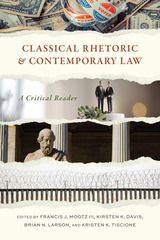 Classical Rhetoric and Contemporary Law: A Critical Reader
Edited by Francis J. Mootz III, Kirsten K. Davis, Brian N. Larson, and Kristen K. Tiscione
University of Alabama Press, 2024 Pairs passages from works of classical rhetoric with contemporary legal rulings to highlight and analyze their deep and abiding connections in matters of persuasion
Classical Rhetoric and Contemporary Law: A Critical Reader is a rich work that analyzes the interplay between ancient rhetorical traditions and modern legal practice, reestablishing the lost connections between law and classical rhetoric. From Isocrates’s Panegyricus in 380 BCE to the landmark US Supreme Court case Trump v. Hawaii in 2018, and from Antiphon’s fifth century BCE First Tetralogy to 1995’s O. J. Simpson trial, the volume draws on an array of sources to illuminate how ancient rhetorical insights may even today challenge and enrich our grasp of contemporary legal principles. The collection opens with a brisk review of the historical development of rhetoric. The second part examines a pair of rhetorical theorists whose works frame the period across which classical rhetoric declined as a mode of thought. A contemporary appellate case contrasts with the work of Giambattista Vico, an eighteenth-century professor of rhetoric who warned of the separation of law from rhetoric. The analysis of the work of twentieth-century scholars Chaïm Perelman and Lucie Olbrects-Tyteca shows that where Cartesian rationality fails, the humanistic tradition of rhetoric allows the law to respond to the needs of justice. In the third part, ten case studies bring together a classical rhetorical theorist with a contemporary court case, demonstrating the abiding relevance of the classical tradition to contemporary jurisprudence. With its cross-disciplinary appeal, Classical Rhetoric and Contemporary Law encompasses the work of legal, rhetorical, English, and communication scholars alike, catalyzing interactive exploration into the profound ways ancient rhetorical insights continue to shape our comprehension of today’s legal landscape. CONTRIBUTORS Vasileios Adamidis / Elizabeth C. Britt / Kirsten K. Davis / David A. Frank / Michael Gagarin / Eugene Garver / Mark A. Hannah / Catherine L. Langford / Brian N. Larson / Craig A. Meyer / Francis J. Mootz III / Susan E. Provenzano / Nick J. Sciullo / Kristen K. Tiscione / Laura A. Webb
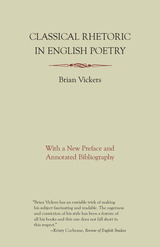 Classical Rhetoric in English Poetry
Brian Vickers
Southern Illinois University Press, 1989 Back in print after 17 years, this is a concise history of rhetoric as it relates to structure, genre, and style, with special reference to English literature and literary criticism from Ancient Greece to the end of the 18th century. The core of the book is a quite original argument that the figures of rhetoric were not mere mechanical devices, were not, as many believed, a "nuisance, a quite sterile appendage to rhetoric to which (unaccountably) teachers, pupils, and writers all over the world devoted much labor for over 2,000 years." Rather, Vickers demonstrates, rhetoric was a stylized representation of language and human feelings. Vickers supplements his argument through analyses of the rhetorical and emotional structure of four Renaissance poems. He also defines 16 of the most common figures of rhetoric, citing examples from the classics, the Bible, and major English poets from Chaucer to Pope.
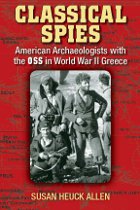 Classical Spies: American Archaeologists with the OSS in World War II Greece
Susan Heuck Allen
University of Michigan Press, 2013 “Classical Spies will be a lasting contribution to the discipline and will stimulate further research. Susan Heuck Allen presents to a wide readership a topic of interest that is important and has been neglected.”
—William M. Calder III, University of Illinois, Urbana-Champaign Classical Spies is the first insiders’ account of the operations of the American intelligence service in World War II Greece. Initiated by archaeologists in Greece and the eastern Mediterranean, the network drew on scholars’ personal contacts and knowledge of languages and terrain. While modern readers might think Indiana Jones is just a fantasy character, Classical Spies disclosesevents where even Indy would feel at home: burying Athenian dig records in an Egyptian tomb, activating prep-school connections to establish spies code-named Vulture and Chickadee, and organizing parachute drops. Susan Heuck Allen reveals remarkable details about a remarkable group of individuals. Often mistaken for mild-mannered professors and scholars, such archaeologists as University of Pennsylvania’s Rodney Young, Cincinnati’s Jack Caskey and Carl Blegen, Yale’s Jerry Sperling and Dorothy Cox, and Bryn Mawr’s Virginia Grace proved their mettle as effective spies in an intriguing game of cat and mouse with their Nazi counterparts. Relying on interviews with individuals sharing their stories for the first time, previously unpublished secret documents, private diaries and letters, and personal photographs, Classical Spies offers an exciting and personal perspective on the history of World War II.
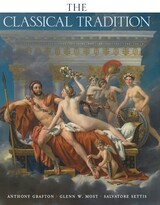 The Classical Tradition
Edited by Anthony Grafton, Glenn W. Most, and Salvatore Settis
Harvard University Press, 2010 “A vast cabinet of curiosities.”—Stephen Greenblatt
“Eclectic rather than exhaustive, less an encyclopedia than a buffet.”—Frederic Raphael, Literary Review
How do we get from the polis to the police? Or from Odysseus’s sirens to an ambulance’s? The legacy of ancient Greece and Rome has been imitated, resisted, misunderstood, and reworked by every culture that followed. In this volume, some five hundred articles by a wide range of scholars investigate the afterlife of this rich heritage in the fields of literature, philosophy, art, architecture, history, politics, religion, and science.
Arranged alphabetically from Academy to Zoology, the essays—designed and written to serve scholars, students, and the general reader alike—show how the Classical tradition has shaped human endeavors from art to government, mathematics to medicine, drama to urban planning, legal theory to popular culture.
At once authoritative and accessible, learned and entertaining, comprehensive and surprising, and accompanied by an extensive selection of illustrations, this guide illuminates the vitality of the Classical tradition that still surrounds us today.
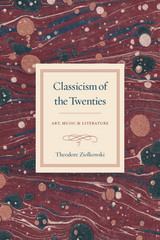 Classicism of the Twenties: Art, Music, and Literature
Theodore Ziolkowski
University of Chicago Press, 2014 The triumph of avant-gardes in the 1920s tends to dominate our discussions of the music, art, and literature of the period. But the broader current of modernism encompassed many movements, and one of the most distinct and influential was a turn to classicism.
In Classicism of the Twenties, Theodore Ziolkowski offers a compelling account of that movement. Giving equal attention to music, art, and literature, and focusing in particular on the works of Stravinsky, Picasso, and T. S. Eliot, he shows how the turn to classicism manifested itself. In reaction both to the excesses of neoromanticism and early modernism and to the horrors of World War I—and with respectful detachment—artists, writers, and composers adapted themes and forms from the past and tried to imbue their own works with the values of simplicity and order that epitomized earlier classicisms.
By identifying elements common to all three arts, and carefully situating classicism within the broader sweep of modernist movements, Ziolkowski presents a refreshingly original view of the cultural life of the 1920s.
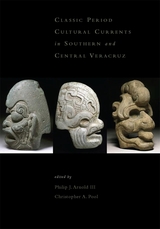 Classic-Period Cultural Currents in Southern and Central Veracruz
Philip J. Arnold III
Harvard University Press, 2008 Classic-Period Cultural Currents in Southern and Central Veracruz explores the diverse traditions and dynamic interactions along the Mexican Gulf lowlands at the height of their cultural florescence. Best known for their elaborate ballgame rituals and precocious inscriptions with long-count dates, these cultures served as a critical nexus between the civilizations of highland Mexico and the lowland Maya, influencing developments in both regions.
Eleven chapters penned by leading experts in archaeology, art history, and linguistics offer new insights into ancient iconography and writing, the construction of sociopolitical landscapes, and the historical interplay between local developments and external influences at Cerro de las Mesas, Tres Zapotes, Matacapan, and many lesser-known sites. The result is a new, vibrant perspective on ancient lifeways along the Mexican Gulf lowlands and an important updated source for future research in the region.
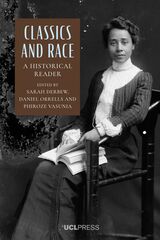 Classics and Race: A Historical Reader
Edited by Sarah Derbew, Daniel Orrells, and Phiroze Vasunia
University College London, 2025 From Renaissance humanism to the transatlantic slave trade, this collection portrays how classical texts have been entangled with the politics of race, shaping exclusion and resistance.
Spanning centuries and continents, Classics and Race follows the entangled histories of classical studies and racial thought to show how ancient texts have been used to shape and justify ideas about race. This essential collection presents historical primary sources from the late medieval period to the mid-twentieth century, each paired with insightful essays by leading scholars who unpack their significance in shaping both racist and anti-racist ideologies.
Moving chronologically, the volume explores classical humanism in the Renaissance, the discipline’s ties to the transatlantic slave trade, and the global intersections of race and antiquity across Africa, Asia, the Caribbean, Europe, and North America. Rather than treating Classics as a neutral intellectual pursuit, this work demonstrates how the field has long been entangled in broader struggles over identity and power. More relevant than ever, Classics and Race offers a vital historical foundation for ongoing debates about the role of antiquity in shaping modern racial discourse.
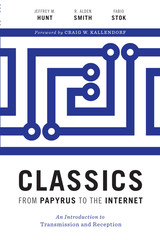 Classics from Papyrus to the Internet: An Introduction to Transmission and Reception
By Jeffrey M. Hunt, R. Alden Smith, and Fabio Stok
University of Texas Press, 2017 Winner, PROSE Award, Classics, Association of American Publishers (AAP), 2018 Writing down the epic tales of the Trojan War and the wanderings of Odysseus in texts that became the Iliad and the Odyssey was a defining moment in the intellectual history of the West, a moment from which many current conventions and attitudes toward books can be traced. But how did texts originally written on papyrus in perhaps the eighth century BC survive across nearly three millennia, so that today people can read them electronically on a smartphone? Classics from Papyrus to the Internet provides a fresh, authoritative overview of the transmission and reception of classical texts from antiquity to the present. The authors begin with a discussion of ancient literacy, book production, papyrology, epigraphy, and scholarship, and then examine how classical texts were transmitted from the medieval period through the Renaissance and the Enlightenment to the modern era. They also address the question of reception, looking at how succeeding generations responded to classical texts, preserving some but not others. This sheds light on the origins of numerous scholarly disciplines that continue to shape our understanding of the past, as well as the determined effort required to keep the literary tradition alive. As a resource for students and scholars in fields such as classics, medieval studies, comparative literature, paleography, papyrology, and Egyptology, Classics from Papyrus to the Internet presents and discusses the major reference works and online professional tools for studying literary transmission.
 Classics in Film and Fiction
Edited by Deborah Cartmell, Heidi Kaye, I. Q. Hunter, and Imelda Whelehan
Pluto Press, 2000 This book negotiates the notion of a 'classic' in film and fiction, exploring the growing interface and the blurring of boundaries between literature and film. Taking the problematic term 'classic' as its focus, the contributors consider both canonical literary and film texts, questioning whether classic status in one domain transfers it to another.
Classics in Film and Fiction looks at a wide range of texts and their adaptations. Authors discussed are Shakespeare, Charlotte Bronte, Henry James, Franz Kafka, Thomas Mann, Virginia Woolf, Nathaniel Hawthorne, Arthur Miller, Truman Capote and Lewis Carroll. Book to film adaptations analysed include Jane Eyre, The Crucible, The Tempest and Alice in Wonderland. The collection also evaluates the term 'classic' in a wider context, including a comparison of Joyce's Ulysses with Hitchcock's Rear Window. Throughout, the contributors challenge the dichotomy between high culture and pop culture.
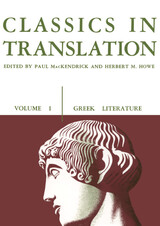 Classics in Translation, Volume I: Greek Literature
Edited by Paul L. MacKendrick and Herbert M. Howe
University of Wisconsin Press, 1959 Here, translated into modern English, are the works of literature, history, science, oratory, and philosophy that constitute the mainstream of classical Greek thought and continue to influence world civilizations. This volume includes:
· Complete translations of Aeschylus’ Agamemnon, Sophocles’ Antigone, Euripides’ Medea, Aristophanes’ Frogs, and The Constitution of Athens by the “Old Oligarch.”
· Abridged translations of Homer’s Iliad and Odyssey, The Homeric Hymn to Hermes, and Plutarch’s Life of Tiberius Gracchus.
· Selections from Hesiod and Lucian; from twenty-eight lyric poets including Sappho, Pindar, and Meleagar; from the histories of Herodotus and Thucydides; and from eight Attic orators, including Isocrates and Demosthenes.
· Selections from the scientific writings of Hippocrates, Archimedes, and Galen.
· Selections from the pre-Socratic philosophers and from Plato, Aristotle, Epicurus, and Epictetus.
Classics in Translation, Volume II: Latin Literature
Edited by Paul L. MacKendrick and Herbert M. Howe
University of Wisconsin Press, 1959 Here, translated into modern English, are the works of literature, history, science, oratory, and philosophy that constitute the mainstream of Roman thought and continue to influence world civilizations. This volume includes:
· Complete translations of Plautus’ The Haunted House, Terence’s Woman from Andros, Seneca’s Medea, and the Deeds of the Deified Augustus.
· Selections from Vergil’s Georgics and Aeneid, the poems of Catullus, Horace’s Odes, Ovid’s Metamorphoses and Fasti, the Satyricon of Petronius, and the Sixth Satire of Juvenal.
· Selections from Lucretius’ On the Nature of Things, Cicero’s speeches and philosophical works, and Quintilian’s The Training of the Orator.
· Selections from histories by Sallust, Livy’s History of Rome, Tacitus’ Annals and Germania, and letters of Pliny the Younger.
Classics of Social Choice
Iain McLean and Arnold Urken, Editors
University of Michigan Press, 1995 Pioneering contributions to social choice and voting from Pliny to Lewis Carroll
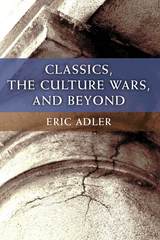 Classics, the Culture Wars, and Beyond
Eric Adler
University of Michigan Press, 2016 Beginning with a short intellectual history of the academic culture wars, Eric Adler’s book examines popular polemics including those by Allan Bloom and Dinesh D’Souza, and considers the oddly marginal role of classical studies in these conflicts. In presenting a brief history of classics in American education, the volume sheds light on the position of the humanities in general.
Adler dissects three significant controversies from the era: the so-called AJP affair, which supposedly pitted a conservative journal editor against his feminist detractors; the brouhaha surrounding Martin Bernal’s contentious Black Athena project; and the dustup associated with Victor Davis Hanson and John Heath’s fire-breathing jeremiad, Who Killed Homer? He concludes by considering these controversies as a means to end the crisis for classical studies in American education. How can the study of antiquity—and the humanities—thrive in the contemporary academy? This book provides workable solutions to end the crisis for classics and for the humanities as well.
This major work also includes findings from a Web survey of American classical scholars, offering the first broadly representative impression of what they think about their discipline and its prospects for the future. Adler also conducted numerous in-depth interviews with participants in the controversies discussed, allowing readers to gain the most reliable information possible about these controversies.
Those concerned about the liberal arts and the best way to educate young Americans should read this book. Accessible and jargon-free, this narrative of scholarly scandals and their context makes for both enjoyable and thought-provoking reading.
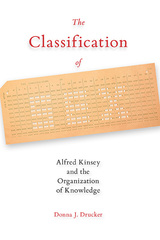 The Classification of Sex: Alfred Kinsey and the Organization of Knowledge
Donna J. Drucker
University of Pittsburgh Press, 2014 Alfred C. Kinsey’s revolutionary studies of human sexual behavior are world-renowned. His meticulous methods of data collection, from comprehensive entomological assemblies to personal sex history interviews, raised the bar for empirical evidence to an entirely new level. In The Classification of Sex, Donna J. Drucker presents an original analysis of Kinsey’s scientific career in order to uncover the roots of his research methods. She describes how his enduring interest as an entomologist and biologist in the compilation and organization of mass data sets structured each of his classification projects. As Drucker shows, Kinsey’s lifelong mission was to find scientific truth in numbers and through observation—and to record without prejudice in the spirit of a true taxonomist.
Kinsey’s doctoral work included extensive research of the gall wasp, where he gathered and recorded variations in over six million specimens. His classification and reclassification of Cynips led to the speciation of the genus that remains today. During his graduate training, Kinsey developed a strong interest in evolution and the links between entomological and human behavior studies. In 1920, he joined Indiana University as a professor in zoology, and soon published an introductory text on biology, followed by a coauthored field guide to edible wild plants.
In 1938, Kinsey began teaching a noncredit course on marriage, where he openly discussed sexual behavior and espoused equal opportunity for orgasmic satisfaction in marital relationships. Soon after, he began gathering case histories of sexual behavior. As a pioneer in the nascent field of sexology, Kinsey saw that the key to its cogency was grounded in observation combined with the collection and classification of mass data. To support the institutionalization of his work, he cofounded the Institute for Sex Research at Indiana University in 1947. He and his staff eventually conducted over eighteen thousand personal interviews about sexual behavior, and in 1948 he published Sexual Behavior in the Human Male, to be followed in 1953 by Sexual Behavior in the Human Female.
As Drucker’s study shows, Kinsey’s scientific rigor and his early use of data recording methods and observational studies were unparalleled in his field. Those practices shaped his entire career and produced a wellspring of new information, whether he was studying gall wasp wings, writing biology textbooks, tracing patterns of evolution, or developing a universal theory of human sexuality.
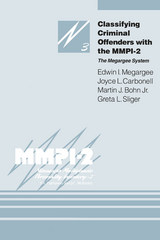 Classifying Criminal Offenders with the MMPI-2: The Megargee System
Edwin I. Megargee
University of Minnesota Press, 2001 An essential resource for employing this widely used personality assessment test in correctional settings.
Originally developed in the 1970s and now revised for the MMPI-2, the Megargee System provides a method for classifying criminal offenders into groups based on their MMPI-2 profiles. This empirically derived system has been investigated in a wide variety of criminal justice settings including corrections, probation, and parole. It has been tested in minimum, medium, and maximum federal, state, and military correctional institutions, in local jails, in halfway houses, and in forensic mental health units. Its use has been extended to female offenders, older men, and juvenile delinquents. Integrating thirty years of research, this new resource fully evaluates the reliability, validity, sources, and uses of the Megargee system.
Classifying Criminal Offenders with the MMPI-2 describes how the system was originally derived and validated and gives instructions on how to classify the original MMPI and MMPI-2 profiles of male and female criminal offenders. It integrates the findings of more than one hundred independent studies with previously unpublished original research investigating the characteristics of each of the system's empirically derived male and female types. On the basis of these data, the authors recommend the optimal settings, change agents, and treatment programs for each type of offender.
As the basic reference work on the MMPI-2 Megargee system, this volume will be an essential resource for criminal justice practitioners, psychologists interested in the MMPI-2, and researchers in criminal classification and personality assessment.
Edwin I. Megargee is professor of psychology at Florida State University and recognized as the foremost expert on the use of the MMPI instruments in correctional settings. Joyce L. Carbonell is professor of psychology at Florida State University. Martin J. Bohn Jr. is chief psychologist at Florida State Hospital. Greta L. Sliger is a clinical psychologist in Tallahassee, Florida.
Classifying the Zhuangzi Chapters
Liu Xiaogan
University of Michigan Press, 1995 The relationships, both historical and philosophical, among the Zhuangzi’s Inner, Outer, and Miscellaneous chapters are the subject of ancient and enduring controversy. Liu marshals linguistic, intertextual, intratextual, and historical evidence to establish an objectively demonstrable chronology and determine the philosophical affiliations among the various chapters. This major advance in Zhuangzi scholarship furnishes indispensable data for all students of the great Daoist text. In a lengthy afterword, Liu compares his conclusions with those of A. C. Graham and addresses the relationship between the Zhuangzi and the Laozi.
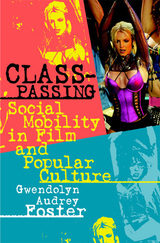 Class-Passing: Social Mobility in Film and Popular Culture
Gwendolyn Audrey Foster
Southern Illinois University Press, 2005 Oprah Winfrey, Donald Trump, Roseanne Barr, Martha Stewart, and Britney Spears typify class-passers—those who claim different socioeconomic classes as their own—asserts Gwendolyn Audrey Foster in Class-Passing: Social Mobility in Film and Popular Culture. According to new rules of social standing in American popular culture, class is no longer defined by wealth, birth, or education. Instead, today’s notion of class reflects a socially constructed and regulated series of performed acts and gestures rooted in the cult of celebrity. In examining the quest for class mobility, Foster deftly traces class-passing through the landscape of popular films, reality television shows, advertisements, the Internet, and video games. She deconstructs the politics of celebrity, fashion, and conspicuous consumerism and analyzes class-passing as it relates to the American Dream, gender, and marriage. Class-Passing draws on dozens of examples from popular culture, from old movie classics and contemporary films to print ads and cyberspace, to illustrate how flagrant displays of wealth that were once unacceptable under the old rules of behavior are now flaunted by class-passing celebrities. From the construction worker in Who Wants to Marry a Millionaire? to the privileged socialites Paris Hilton and Nicole Richie of The Simple Life, Foster explores the fantasy of contact between the classes. She also refers to television class-passers from The Apprentice, Queer Eye for the Straight Guy, and Survivor and notable class-passing achievers Warren Buffet, Bill Gates, and P. Diddy. Class-Passing is a notable examination of the historical, social, and ideological shifts in expressions of class. The first serious book of its kind, Class-Passing is fresh, innovative, and invaluable for students and scholars of film, television, and popular culture.
 The Classroom and the Chancellery: State Educational Reform in Russia under Count Dmitry Tolstoi
Allen Sinel
Harvard University Press, 1973 The specific challenge that confronted Count Dmitry Tolstoi as Minister of Education was to raise the educational level of the Russian people without giving them the intellectual weapons with which to threaten the autocracy. The efforts of Tolstoi's ministry to resolve this dilemma resulted in comprehensive reforms which shaped the Russian school system until early in the twentieth century.
It is interesting therefore that, until now, there has been no complete analysis of all aspects of Tolstoi's ministry. Allen Sinel's study fills that gap.
Beginning with the historical, political, biographical, and administrative contexts for Tolstoi's reforms, Sinel then provides a detailed examination of Tolstoi's transformation of Russian education at all levels, particularly the secondary level, which was the cornerstone of his program.
The ministry's greatest achievement in improving the school system was increasing the number of schools and supplying trained teachers to staff them. Less successful were Tolstoi's efforts to minimize the political consciousness of the students. Tolstoi's methods were short-sighted and negative, helping to create the very elements of alienation and antagonism that might destroy the existing regime he wanted so much to protect and preserve.
Sinel's analysis of Tolstoi's program, the most durable of the tsarist period, provides a much-needed survey of the Russian educational system at a crucial time in Russian history. In addition, the study contributes to a more balanced assessment of one of tsardom's most important bureaucrats.
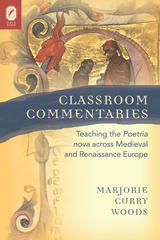 Classroom Commentaries: Teaching the Poetria nova across Medieval and Renaissance Europe
Marjorie Curry Woods
Ohio State University Press, 2009 With an unusually broad scope encompassing how Europeans taught and learned reading and writing at all levels, Classroom Commentaries: Teaching the Poetria Nova across Medieval and Renaissance Europe provides a synoptic picture of medieval and early modern instruction in rhetoric, poetics, and composition theory and practice. As Marjorie Curry Woods convincingly argues, the decision of Geoffrey of Vinsauf (fl. 1200) to write his rhetorical treatise in verse resulted in a unique combination of rhetorical doctrine, poetic examples, and creative exercises that proved malleable enough to inspire teachers for three centuries. Based on decades of research, this book excerpts, translates, and analyzes teachers’ notes and commentaries in the more than two hundred extant manuscripts of the text. We learn the reasons for the popularity of the Poetria nova among medieval and early Renaissance teachers, how prose as well as verse genres were taught, why the Poetria nova was a required text in central European universities, its attractions for early modern scholars and historians, and how we might still learn from it today. Woods’ monumental achievement will allow modern scholars to see the Poetria nova as earlier Europeans did: a witty and perennially popular text central to the experience of almost every student.
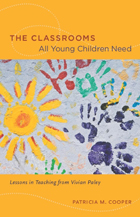 The Classrooms All Young Children Need: Lessons in Teaching from Vivian Paley
Patricia M. Cooper
University of Chicago Press, 2009 Teacher and author Vivian Paley is highly regarded by parents, educators, and other professionals for her original insights into such seemingly everyday issues as play, story, gender, and how young children think. In The Classrooms All Young Children Need, Patricia M. Cooper takes a synoptic view of Paley’s many books and articles, charting the evolution of Paley’s thinking while revealing the seminal characteristics of her teaching philosophy. This careful analysis leads Cooper to identify a pedagogical model organized around two complementary principles: a curriculum that promotes play and imagination, and the idea of classrooms as fair places where young children of every color, ability, and disposition are welcome. With timely attention paid to debates about the reduction in time for play in the early childhood classroom, the role of race in education, and No Child Left Behind, The Classrooms All Young Children Need will be embraced by anyone tasked with teaching our youngest pupils.
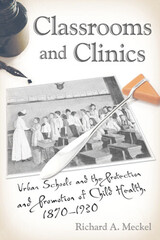 Classrooms and Clinics: Urban Schools and the Protection and Promotion of Child Health, 1870-1930
Meckel, Richard A
Rutgers University Press, 2013 Classrooms and Clinics is the first book-length assessment of the development of public school health policies from the late nineteenth century through the early years of the Great Depression. Richard A. Meckel examines the efforts of early twentieth-century child health care advocates and reformers to utilize urban schools to deliver health care services to socioeconomically disadvantaged and medically underserved children in the primary grades. Their goal, Meckel shows, was to improve the children’s health and thereby improve their academic performance.
Meckel situates these efforts within a larger late nineteenth- and early twentieth-century public discourse relating schools and schooling, especially in cities and towns, to child health. He describes and explains how that discourse and the school hygiene movement it inspired served as critical sites for the constructive negotiation of the nature and extent of the public school’s—and by extension the state’s—responsibility for protecting and promoting the physical and mental health of the children for whom it was providing a compulsory education.
Tracing the evolution of that negotiation through four overlapping stages, Meckel shows how, why, and by whom the health of schoolchildren was discursively constructed as a sociomedical problem and charts and explains the changes that construction underwent over time. He also connects the changes in problem construction to the design and implementation of various interventions and services and evaluates how that design and implementation were affected by the response of the civic, parental, professional, educational, public health, and social welfare groups that considered themselves stakeholders and took part in the discourse. And, most significantly, he examines the responses called forth by the question at the heart of the negotiations: what services are necessitated by the state’s and school’s taking responsibility for protecting and promoting the health and physical and mental development of schoolchildren. He concludes that the negotiations resulted both in the partial medicalization of American primary education and in the articulation and adoption of a school health policy that accepted the school’s responsibility for protecting and promoting the health of its students while largely limiting the services called for to the preventive and educational.
Clathraceae
D. M. Dring
Royal Botanic Gardens, Kew, 1980 A revision of the world species of Clathrus, Colus, Lysurus etc. Edited for publication by R.W.G. Dennis, who also supplies the keys to genera and species.
Reprinted from Kew Bulletin Vol. 35 (1).
Claude Bernard and Animal Chemistry
Frederic L. Holmes
Harvard University Press, 1974 Claude Bernard was recognized in his own time as one of the giants of science; today he still belongs among the dozen most significant scientists since 1800. Through his ability to present and interpret results within a persuasive theoretical framework, Bernard became an almost mythical example of the systematic, rational, and successful scientist.
This book examines Bernard's formative early research in the years from 1842 to 1848, before he became a well-known scientist, a revered sage, and, in the eyes of many, a “founder” of experimental physiology. Frederic Holmes's intimate description of Bernard's investigations is accompanied by a broad account of physiology and biochemistry in the era when they were becoming recognizably modern.
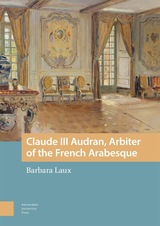 Claude III Audran, Arbiter of the French Arabesque
Barbara Laux
Amsterdam University Press, 2024 Claude III Audran, Arbiter of the French Arabesque is the first substantial biographical study of Claude III Audran, a late 17th- and early 18th-century master of ornament and a proponent of cutting-edge design who took inspiration from contemporary sources. This work investigates Audran’s accomplishments and the factors that impacted the longevity and arc of his successful career, taking into consideration the contextual variables that influenced and shaped his work. Audran’s achievements bridge an important period with the eclipse of the Guild Maîtrise and the rise of the Académie royale. Audran subcontracted young artists, such as Watteau, Lancret, and Desportes, in order to circumvent restrictions on guild practice enacted by the crown. Looking at his commissions not only reveals the elite taste of his patrons, including Louis XIV, but also Audran’s ability to use elements from popular culture to animate his arabesques, which created hallmarks of rococo interior design.
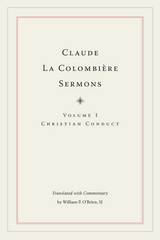 Claude La Colombiere Sermons: Volume I: Christian Conduct
Translated with an Introduction and Notes by William P. O'Brien
Northern Illinois University Press, 2013
This volume presents for the first time English-language translations of twelve sermons by St. Claude La Colombière. Canonized in 1992 by Pope John Paul II, Claude was a 17th-century Jesuit priest who authenticated the visions of St. Margaret Mary Alacoque and promoted devotion to the Sacred Heart. Like St. Francis of Assisi, Claude had been a man of privilege, and was a literary figure with a reputation as a master of Christian eloquence. He died a martyr at the age of forty-one.
Each sermon in this volume addresses a different issue under the general theme of Christian conduct. Together these sermons present the notions central to Claude’s preaching and general attitude, above all the ideas of habituation and confidence in God. Preaching during Claude’s lifetime developed under a variety of influences, most notably the thematic sermons of the late medieval period and the humanistic retrieval of classical letters during the Renaissance. Claude worked within and helped to create the stylistic conventions of the day by drawing on scripture and the Church Fathers in an attempt to convert his listeners. Taking a hybrid approach to his craft, he brought a balanced use of rhetorical art into the pulpit so as to please as well as to instruct and move his audience, hereby promoting the development of French classicism in the second half of the seventeenth century.
In his commentary on the sermons William O’Brien examines the dynamic vision of the human person that emerges from St. Claude’s preaching and considers what this might mean for readers of today. While offering a historical-literary study of his preaching, the work is located firmly in the contemporary quest for a new unity between the theoretical and the practical in Christianity. What results is a book with a unique appeal. General readers interested in their own spiritual growth, as well as scholars and students of religious history, theology, and French literature, will find this book to be a valuable resource.
Claude Levi-Strauss
Edmund Leach
University of Chicago Press, 1989 In this lucide guide to the often abstruse works of Claude Lévi-Strauss, Edmund Leach synthesizes the thought of one of the twentieth century's greatest anthropologists and provides a thoughtful introduction to the theory and practice of structuralism. Leach organizes his work not by chronology but by theme, exploring three important topics in Lévi-Strauss's work: human beings and their symbols, the structure of myth, and kinship theory. Written concisely and with great care and penetration, this brief book is both a fine introduction for the uninitiated reader of Lévi-Strauss and a critical analysis that will prove valuable to those more familiar with the anthropologist's work.
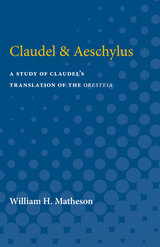 Claudel & Aeschylus: A Study of Claudel's Translation of the Oresteia
William H. Matheson
University of Michigan Press, 1965 This is the most important book to date on one of the giants of modern literature. It examines in detail a dramaturgy that continues to dominate the contemporary stage. In a brilliant confrontation of the question of translation, Matheson discusses the hows and the why that face the artist-as-translator. He shows the terms by which ancient myth is made theatrically significant to the playgoer of today.The author traces the spiritual and artistic development of Claudel, the self-willed, individualistic French artist who found in the works of the difficult, uncompromising Aeschylus prefigurations of his own life. Claudel's training in the classics, his early admiration of Mallarmé, the Aeschylean reminiscences in his early plays Partage de midi and Tête d'Or anticipate his own brilliant trilogy.But it was through his translation of the Oresteia, a translation that Matheson analyzes in detail, that this most important of French dramatists assimilated Aeschylus to recast him for the modern stage.Claudel and Aeschylus, through an examination of Claudel's crucial Aeschylean strain, shows the centrality and the significance of the Hellenic in the work of one of the most important literary figures of our age.
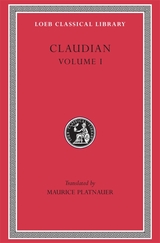 Claudian, Volume I: Panegyric on Probinus and Olybrius. Against Rufinus 1 and 2. War against Gildo. Against Eutropius 1 and 2. Fescennine Verses on the Marriage of Honorius. Epithalamium of Honorius and Maria. Panegyrics on the Third and Fourth Consulships of Honorius
Claudian
Harvard University Press Late antique court poetry.
Claudius Claudianus, Latin poet of great affairs, flourished during the joint reigns (AD 394–5 onwards) of the brothers Honorius (Emperor in the West) and Arcadius (in the East). Apparently a native of Greek Alexandria in Egypt, he was, to judge by his name, of Roman descent, though his first writings were in Greek, and his pure Latin may have been learned as a foreign language. About AD 395 he moved to Italy (Milan and Rome) and though really a pagan, became a professional court poet composing for Christian rulers works which give us important knowledge of Honorius’ time.
A panegyric on the brothers Probinus and Olybrius (consuls together in 395) was followed in the subsequent ten years by other poems (mostly epics in hexameters): in praise of consulships of Honorius (AD 395, 398, 404); against the Byzantine ministers Rufinus (396) and Eutropius (399); in praise of the consulship (400) of Stilicho (Honorius’ guardian, general, and minister); in praise of Stilicho’s wife Serena; mixed metres on the marriage of Honorius to their daughter Maria; on the war with the rebel Gildo in Africa (398); on the Getic or Gothic war (402); on Stilicho’s success against the Goth Alaric (403); on the consulship of Manlius Theodorus (399); and on the wedding of Palladius and Celerina. He also composed non-official poems such as the three books of a mythological epic on the Rape of Proserpina, unfinished as was also a Battle of Giants (in Greek). Noteworthy are Phoenix, Senex Veronensis, elegiac prefaces, and the epistles, epigrams, and idylls.
Through the patronage of Stilicho or through Serena, Claudius in 404 married well in Africa and was granted a statue in Rome. Nothing is known of him after 404. In his works can be found true poetic as well as rhetorical skill, command of language, polished style, diversity, vigor, satire, dignity, bombast, artificiality, flattery, and other virtues and faults of the age.
The Loeb Classical Library edition of Claudian is in two volumes.
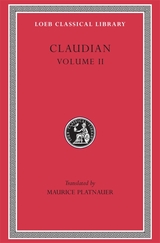 Claudian, Volume II: On Stilicho’s Consulship 2–3. Panegyric on the Sixth Consulship of Honorius. The Gothic War. Shorter Poems. Rape of Proserpina
Claudian
Harvard University Press Late antique court poetry.
Claudius Claudianus, Latin poet of great affairs, flourished during the joint reigns (AD 394–5 onwards) of the brothers Honorius (Emperor in the West) and Arcadius (in the East). Apparently a native of Greek Alexandria in Egypt, he was, to judge by his name, of Roman descent, though his first writings were in Greek, and his pure Latin may have been learned as a foreign language. About AD 395 he moved to Italy (Milan and Rome) and though really a pagan, became a professional court poet composing for Christian rulers works which give us important knowledge of Honorius’ time.
A panegyric on the brothers Probinus and Olybrius (consuls together in 395) was followed in the subsequent ten years by other poems (mostly epics in hexameters): in praise of consulships of Honorius (AD 395, 398, 404); against the Byzantine ministers Rufinus (396) and Eutropius (399); in praise of the consulship (400) of Stilicho (Honorius’ guardian, general, and minister); in praise of Stilicho’s wife Serena; mixed metres on the marriage of Honorius to their daughter Maria; on the war with the rebel Gildo in Africa (398); on the Getic or Gothic war (402); on Stilicho’s success against the Goth Alaric (403); on the consulship of Manlius Theodorus (399); and on the wedding of Palladius and Celerina. He also composed non-official poems such as the three books of a mythological epic on the Rape of Proserpina, unfinished as was also a Battle of Giants (in Greek). Noteworthy are Phoenix, Senex Veronensis, elegiac prefaces, and the epistles, epigrams, and idylls.
Through the patronage of Stilicho or through Serena, Claudius in 404 married well in Africa and was granted a statue in Rome. Nothing is known of him after 404. In his works can be found true poetic as well as rhetorical skill, command of language, polished style, diversity, vigor, satire, dignity, bombast, artificiality, flattery, and other virtues and faults of the age.
The Loeb Classical Library edition of Claudian is in two volumes.
Clay
Martha Ronk
Omnidawn, 2025 Poetry that finds meaning and connection in the process of creating pottery from clay.
The poems in Clay look to the process of forming clay on a potter’s wheel to examine our sense of touch and texture, emptiness, fragility, and the nature of time. Martha Ronk moves through the steps of creating a pot that must be formed, dried, bisque-fired, glazed, and fired again. This practice is paralleled in Ronk’s process-oriented language that addresses how we read texture and color, the ways history and landscapes appear in glazes, Mimbres bowls that covered the faces of the dead, and Giorgio Morandi’s still life paintings of ceramic forms.
For Ronk, pottery raises questions about the value of repetition, inevitable failure, and how we may become one with matter. As the potter’s hands ache and age, the bowl seems to age as it slumps or breaks. Clay includes observations from other potters and writers as well as small photographs of pots.
Clay: The History and Evolution of Humankind’s Relationship with Earth’s Most Primal Element
Suzanne Staubach
University Press of New England, 2013 More than a third of the houses in the world are made of clay. Clay vessels were instrumental in the invention of cooking, wine and beer making, and international trade. Our toilets are made of clay. The first spark plugs were thrown on the potter’s wheel. Clay has played a vital role in the health and beauty fields. Indeed, this humble material was key to many advances in civilization, including the development of agriculture and the invention of baking, architecture, religion, and even the space program. In Clay, Suzanne Staubach takes a lively look at the startling history of the mud beneath our feet. Told with verve and erudition, this story will ensure you won’t see the world around you in quite the same way after reading the book.
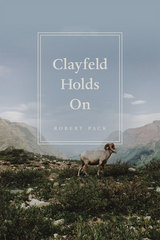 Clayfeld Holds On
Robert Pack
University of Chicago Press, 2015 from “Clayfeld’s Farewell Epistle to Bob Pack”
Beneath this mellow harvest moon,
I can still picture you—a boy content
just fishing with his father from a ledge
above a foaming stream. The flailing trout
you caught is packed in gleaming ice;
the pink stripe all along its side
is smeared across black shiny dots
that seem to shine with their own light.
I’m sure that you can picture me
with equal vividness, and though we’re not
identical, there is a sense
in which I am inventing you
as much as you’re inventing me.
In Clayfeld Holds On, Robert Pack offers his readers a comprehensive portrait of his longtime protagonist Clayfeld, who is also Pack’s doppelgänger, his alternate self, enacting both the life that the poet has lived and the life he might have lived, given his proclivities and appetites. Poet and protagonist, taken together, are self and consciousness of self, the historical self and the embellished story of that literal self.
Written with a masterly ear for rhythm, and interweaving narrative and lyrical passages, the poems recount Clayfeld’s formative memories while exploring concepts such as loyalty, generosity, commitment, as well as cosmic phenomena such as the big bang theory and black holes. Through all of this, Pack attempts to find purpose and meaning in an indifferent universe, and to explore the labyrinth of his own proliferating identity.
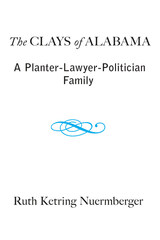 The Clays of Alabama: A Planter-Lawyer-Politician Family
Ruth Ketring Nuermberger
University of Alabama Press, 1958 The story of a 19th-century aristocratic Alabama family
Of unique interest to the student of nineteenth century America is this account of the Alabama Clays, who in their private life were typical of the slaveholding aristocracy of the old South, but as lawyer-politicians played significant roles in state and national politics, in the development of the Democratic party, and in the affairs of the Confederacy.
In the period from 1811 to 1915, the Clays were involved in many of the great problems confronting the South. This study of the Clay family includes accounts of the wartime legislation of the Confederate Congress and the activities of the Confederate Commission in Canada. Equally interesting to many readers will be the intimate view of social life in ante-bellum Washington and the story of the domestic struggles of a plantation family during and after the war, as revealed through the letters of Clement Claiborne Clay and his wife Virginia.
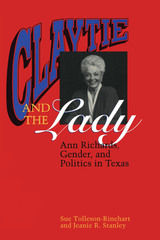 Claytie and the Lady: Ann Richards, Gender, and Politics in Texas
By Sue Tolleson-Rinehart and Jeanie R. Stanley
University of Texas Press, 1994 It was like a remake of The Cowboy and the Lady, except that this time they weren't friends. The 1990 Texas governor's race pitted Republican Clayton Williams, a politically conservative rancher and oil millionaire, against Democrat Ann Richards, an experienced progressive politician noted for her toughness and quick wit. Their differences offered voters a choice not only of policies and programs but also of stereotypes and myths of men's and women's proper roles. Claytie and the Lady is the first in-depth look at how gender affected the 1990 governor's race. The authors' analysis reveals that Ann Richards' victory was a result of a unique combination of characteristics. She was simultaneously tough enough to convince voters that she could lead and feminine enough to put them at ease. At the same time, she remained committed to the progressive and women's issues that had won her the early support of feminists and progressives. The authors also show how Clayton Williams' appeal to the Texas cowboy myth backfired when he broke the cowboy code of chivalry to women. The authors set their discussion within the historical context of twentieth-century Texas politics and the theoretical context of gender politics in order to pose a number of thought-provoking questions about the effects of women's participation in political life. Interviews with key players in the 1990 election, including Governor Ann Richards, add a lively and insightful counterpoint to the text.
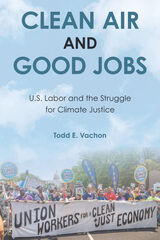 Clean Air and Good Jobs: U.S. Labor and the Struggle for Climate Justice
Todd E. Vachon
Temple University Press, 2023 The labor–climate movement in the U.S. laid the groundwork for the Green New Deal by building a base within labor for supporting climate protection as a vehicle for good jobs. But as we confront the climate crisis and seek environmental justice, a “jobs vs. environment” discourse often pits workers against climate activists. How can we make a “just transition” moving away from fossil fuels, while also compensating for the human cost when jobs are lost or displaced?
In his timely book, Clean Air and Good Jobs, Todd Vachon examines the labor–climate movement and demonstrates what can be envisioned and accomplished when climate justice is on labor’s agenda and unions work together with other social movements to formulate bold solutions to the climate crisis. Vachon profiles the workers and union leaders who have been waging a slow, but steadily growing revolution within their unions to make labor as a whole an active and progressive champion for both workers and the environment. Clean Air and Good Jobs examines the “movement within the movement” offering useful solutions to the dual crises of climate and inequality.
Clean Air: The Policies and Politics of Pollution Control
Charles O. Jones
University of Pittsburgh Press, 1978 Clean Air begins and ends with a vivid case study of air pollution at the Clairton coke works, the largest such facility in the world. Against this background, Jones analyzes the development of pollution control policy beyond capability. He describes normal policy development as the gradual temporization of proposals, but that air pollution control deviated from the norm because of widespread public demand in the late 1960s for unrealistic controls. Jones's study further examines the development and implementation of policy at three levels-local, state and federal.
Clean Clothes: A Global Movement to End Sweatshops
Liesbeth Sluiter
Pluto Press, 2009 The Clean Clothes Campaign is a worldwide movement that aims to improve the wages and conditions of sweatshop workers. This is the story of their struggle.
Large retailers such as Tesco, Walmart and Carrefour lure shoppers in with prices that seem too good to be true. This book shows that they're too good to be fair. All along the industry's supply chain, workers, often children, are exploited through poverty wages, unpaid overtime and harsh anti-union measures. The campaign urges those in charge of the garment industry's supply lines to protect their workers and treat them fairly.
This dynamic account of direct engagement by concerned consumers is a must read for those that see globalisation differently and want their shopping choices to support the most vulnerable people involved in the clothing industry.
Clean Energy for Low-Income Communities: Technology, deployment and challenges
David S-K. Ting
The Institution of Engineering and Technology, 2024 Energy provision for low income or remote communities is a difficult challenge, with many still depending on polluting and costly fossil fuels. Transporting energy is a further problem since some communities are only accessible during brief periods of the year. Local energy generation is a key solution, but technical challenges need to be overcome.
Clean Energy in South-East Asia
Ngo Dang Luu
The Institution of Engineering and Technology, 2025 Southeast Asia is witnessing a significant increase in energy demand due to industrialization and rapid economic growth. To prevent the escalation of carbon emissions, researchers, energy experts, and policymakers in the region are keenly aware that clean energy must become an integral part of economic expansion. With the immense potential for renewable energy, Southeast Asia has an opportunity to make a breakthrough in sustainable development for the future.
Clean Energy Microgrids
Shin'ya Obara
The Institution of Engineering and Technology, 2017 Microgrids are electric power grids composed of loads and distributed energy resources which provide electricity to villages, university campuses and other entities usually smaller than cities which are capable of operating independently from the larger grid if necessary. Such systems are gaining importance in times of rising shares of renewable power and desire for energy resilience.
Clean Energy: Past to future
Peter Tavner
The Institution of Engineering and Technology, 2024 Clean energy provision and usage has a long history from an engineering perspective. This perspective can help understanding past and current developments at a time of increasing concern about climate change. Over many hundreds of years human beings have been extracting energy from their environment in various ways, many of which could also be acceptable in the future for achieving a lower energy carbon footprint.
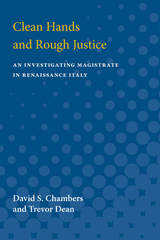 Clean Hands and Rough Justice: An Investigating Magistrate in Renaissance Italy
David S. Chambers and Trevor Dean
University of Michigan Press, 1997 It is rarely possible to write biographies of lay people who lived in the Middle Ages. While accounts of clerical, royal, and military life are many, the wider populace has remained in relative obscurity. In Clean Hands and Rough Justice: An Investigating Magistrate in Renaissance Italy, David S. Chambers and Trevor Dean present an extraordinary and previously unknown character from Renaissance Italy, Beltramino Cusadri (ca. 1425–1500). This judge was known as the "terrible commissioner," and he spent most of his professional life acting as criminal investigator and legal adviser to two princely dynasties—the Gonzaga of Mantua and the Este of Ferrara. The authors investigate and compare the judicial institutions and social conditions in which he worked, the criminal cases that he investigated, and his successes and failures. Their combined presentation of the figure and mentality of Beltramino amounts to something unprecedented in Italian Renaissance historiography: the portrait of a professional man, employed to combat rising crime but accused of corruption and tyranny by the entrenched interests that he faced. The book follows the major phases of Beltramino's career along with a broader exploration of the legal history of Renaissance Italy. In his long life Beltramino Cusadri wrote hundreds of letters to his employers, and it is upon these letters that this book is based. These letters, with their wry, colorfully worded expressions, are liberally quoted and provide unique insight into the career, activity, and attitudes of a major Renaissance bureaucrat. The letters of his employers in return, and of many other judges and officials, along with the evidence of legislation and prosecution, are also drawn upon to examine a variety of themes, from the progress of lawmaking and the pattern of criminality, to the problems of policing and the changing forms of punishment. These provide an extraordinarily vivid picture of face-to-face realities that make an important cont
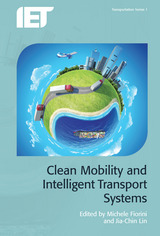 Clean Mobility and Intelligent Transport Systems
Michele Fiorini
The Institution of Engineering and Technology, 2015 This book provides an overview of current topics in intelligent and green transportation on land, sea and in flight, with contributions from an international team of leading experts. A wide range of chapters discuss: the importance of Intelligent Transport Systems (ITS); ICT for intelligent public transport systems; ITS and freight transport; energy-efficient and real-time database management techniques for wireless sensor networks; proactive safety - cooperative collision warning for vehicles; electronic toll collection systems; business models and solutions for user-centered intelligent transport systems; digital infrastructures for increased safety, efficiency and environmental sustainability in shipping logistics; integrated visual information for maritime surveillance; automatic identification system (AIS) AIS signal radiolocation, tracking and verification; the impact of satellite AIS to the environmental challenges of modern shipping; how green is e-Navigation?; optimal ship operation: monitoring technology of ship overall heat balance; regulation of ship-source pollution through international convention regimes; foresight application for the transport sector; and trends in aeronautical air ground communications.
Clean Slate: New & Selected Poems
Daisy Zamora
Northwestern University Press, 1995 To be a woman in revolutionary Nicaragua meant to take an active role in reshaping a country. Daisy Zamora came out of that experience as a poet who found her own voice in the context of extraordinary popular struggle. Her Clean Slate: New & Selected Poems is a collection that embodies a spirit of personal and political liberation. These 110 poems include works written between the years 1968 and 1993.
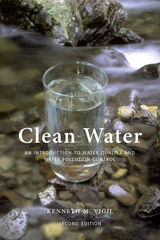 Clean Water, 2nd ed: An Introduction to Water Quality and Water Pollution Control
Kenneth M. Vigil
Oregon State University Press, 2003 Clean Water is a book for anyone concerned about this precious resource who wants to become better informed. In straightforward language, Kenneth Vigil provides a comprehensive introduction to the many scientific, regulatory, cultural, and geographic issues associated with water quality and water pollution control.
Most other books on water quality and pollution control are highly technical and very specific, and are aimed at engineers, scientists, or attorneys. Clean Water, on the other hand, is a comprehensive discussion of the subject intended for a wider audience of science students, educators, and the general public.
Vigil avoids the use of technical jargon and uses many photos and diagrams to illustrate and explain concepts. He provides sufficient detail to educate readers about many broad topics and includes additional references at the end of each chapter for exploring specific topics in more detail.
Clean Water summarizes the basic fundamentals of water chemistry and microbiology and outlines important water quality rules and regulations, all in concise, understandable prose. It describes the basic scientific principles behind water pollution control and the broader approach of addressing water pollution problems through watershed management. There are sections on drinking water and on citizen involvement in water pollution control efforts at home and in the community.
The Clean Water Act 20 Years Later
Robert W. Adler, Jessica C. Landman, and Diane M. Cameron
Island Press, 1993 This volume explores the issues associated with the complex subject of water quality protection in an assessment of the successes and failures of the Clean Water Act over the past twenty years. In addition to examining traditional indicators of water quality, the authors consider how health concerns of the public have been addressed, and present a detailed examination of the ecological health of our waters. Taken together, these measures present a far more complete and balanced picture than raw water quality data alone. As well as reviewing past effectiveness, the book includes specific recommendations for the reauthorization of the Act, which is to be considered by Congress in 1995. This balanced and insightful account will surely shape the debate among legislative and policy experts and citizen activists at all levels who are concerned with issues of water quality.
|
|
